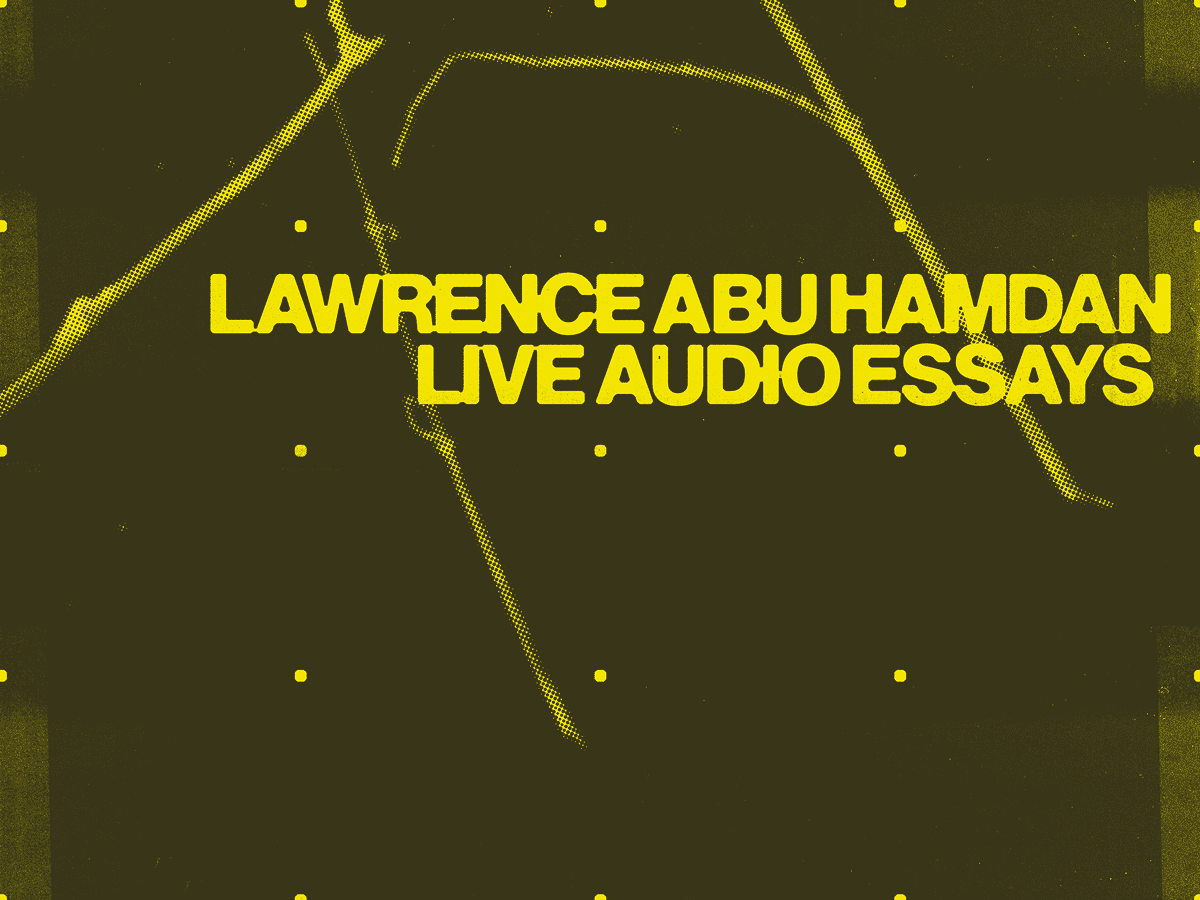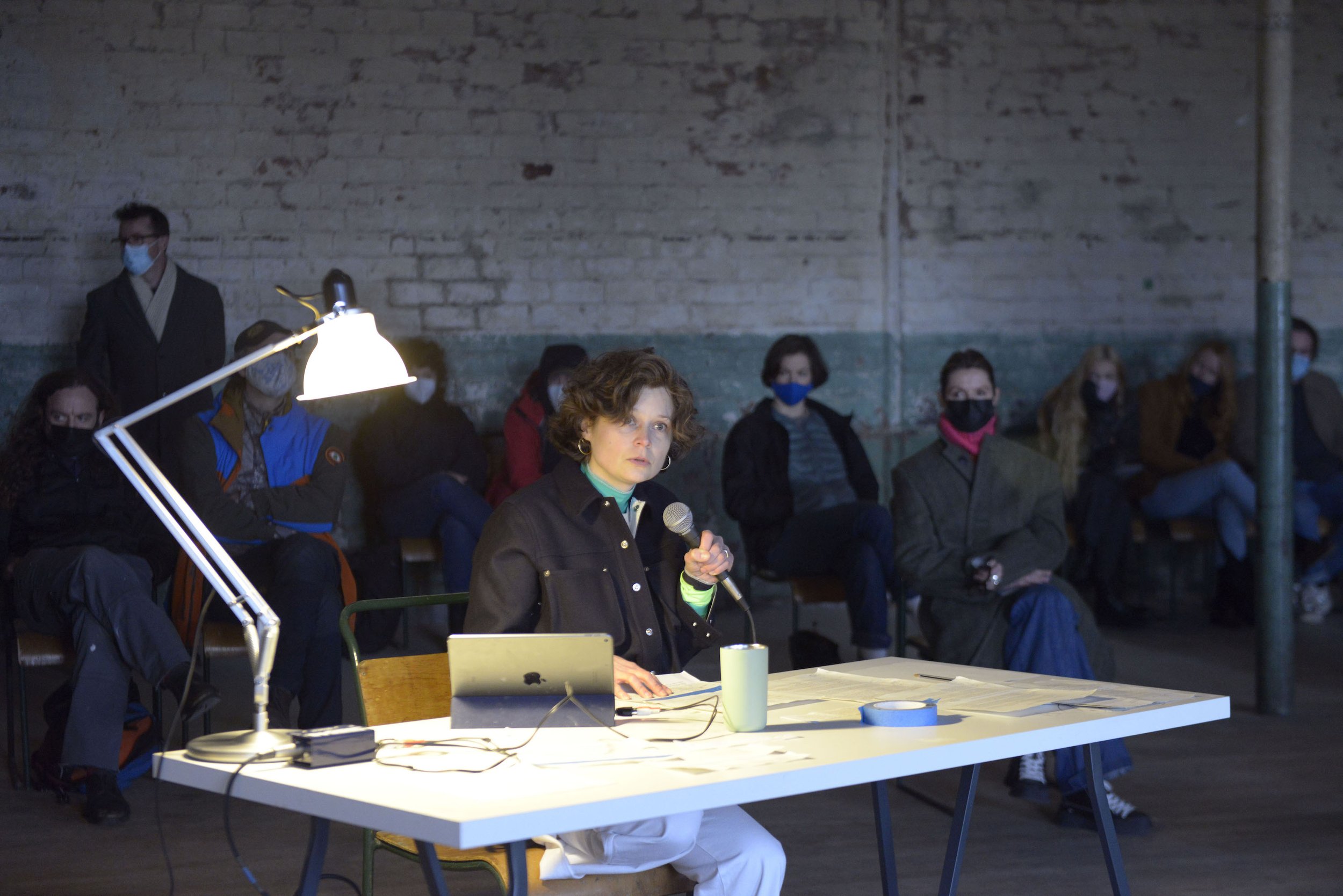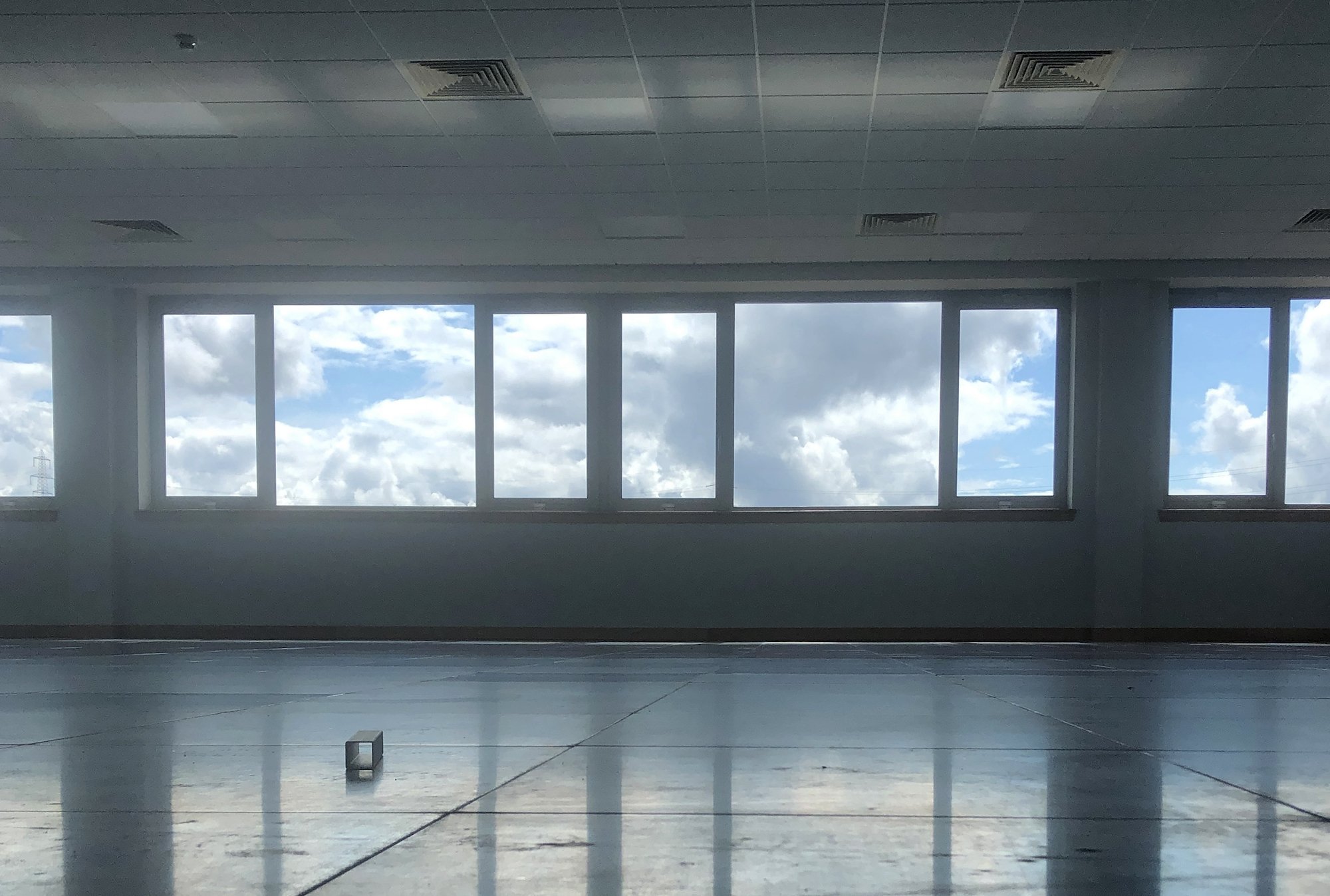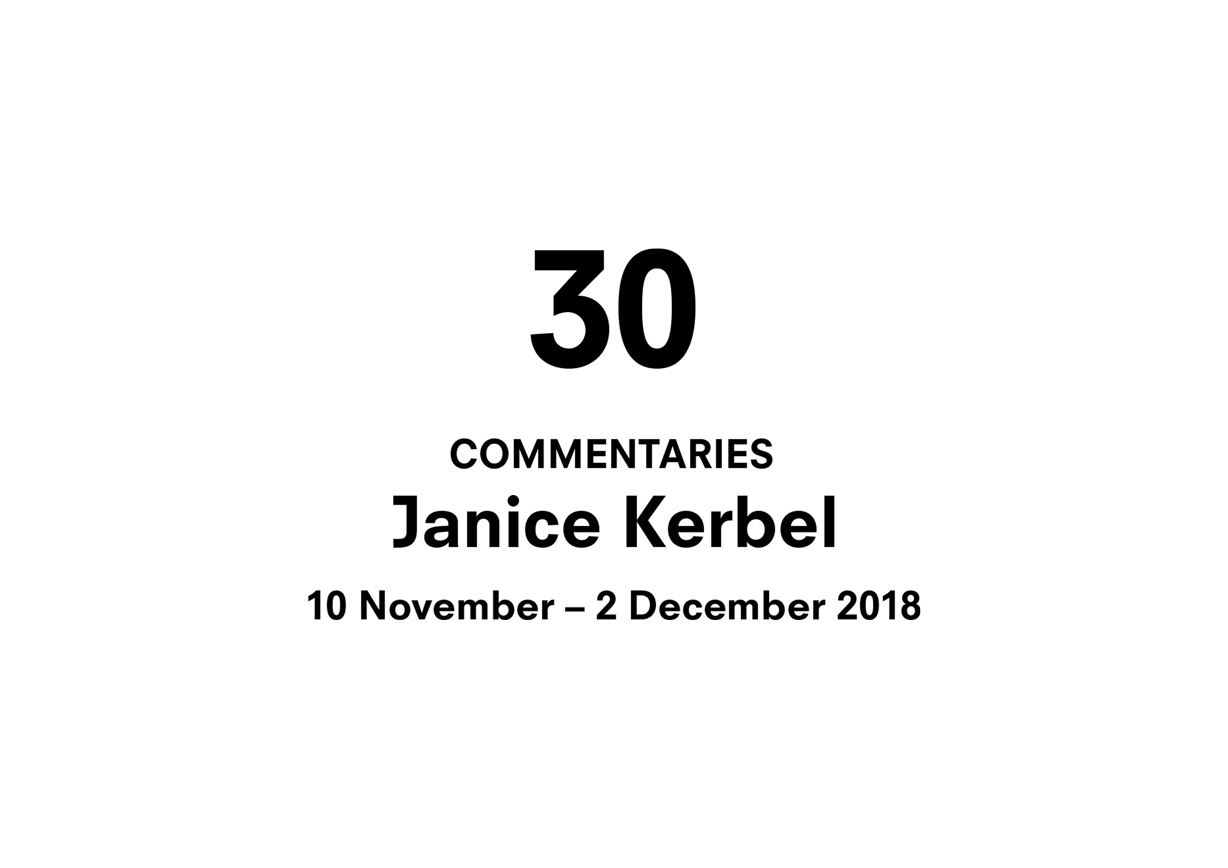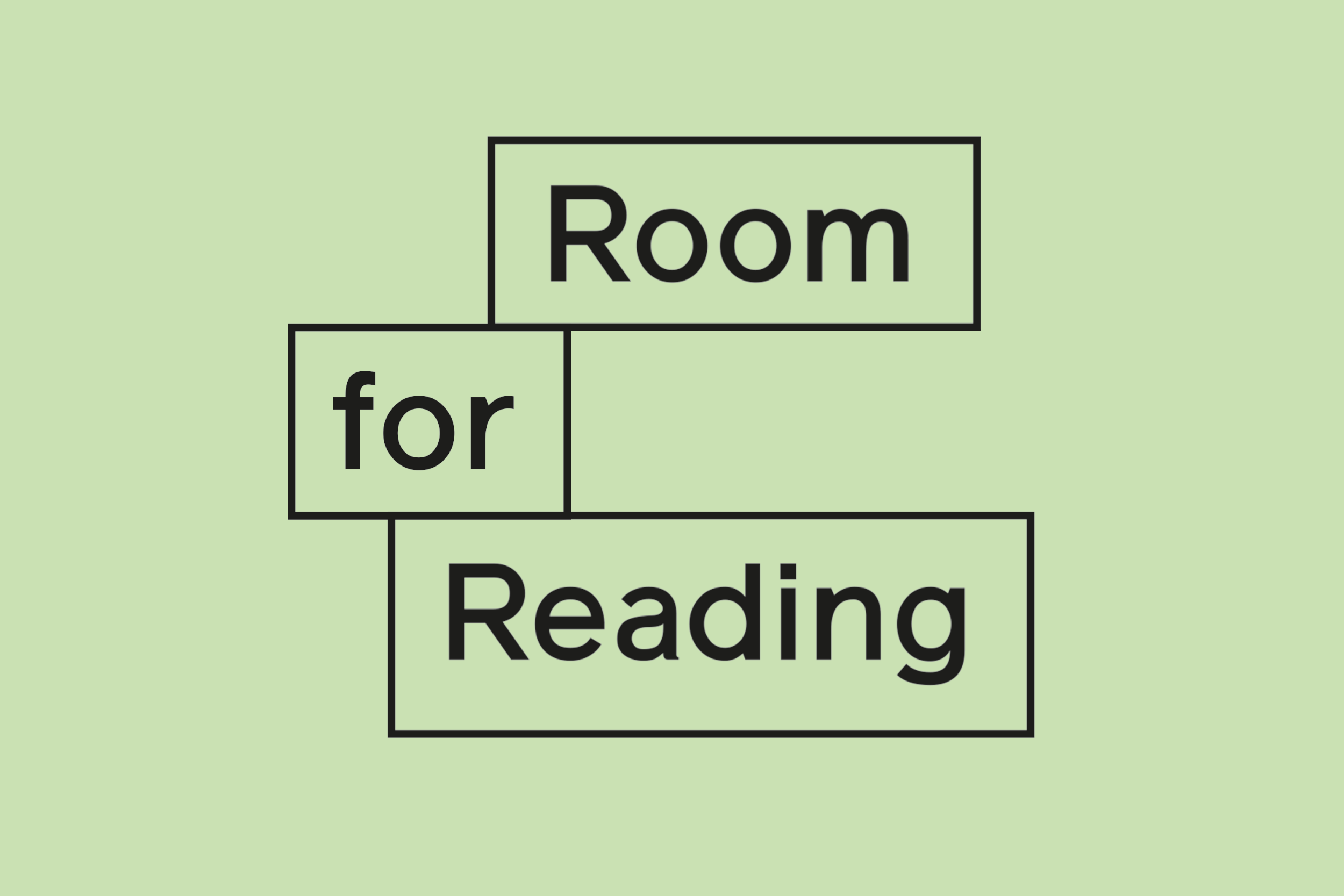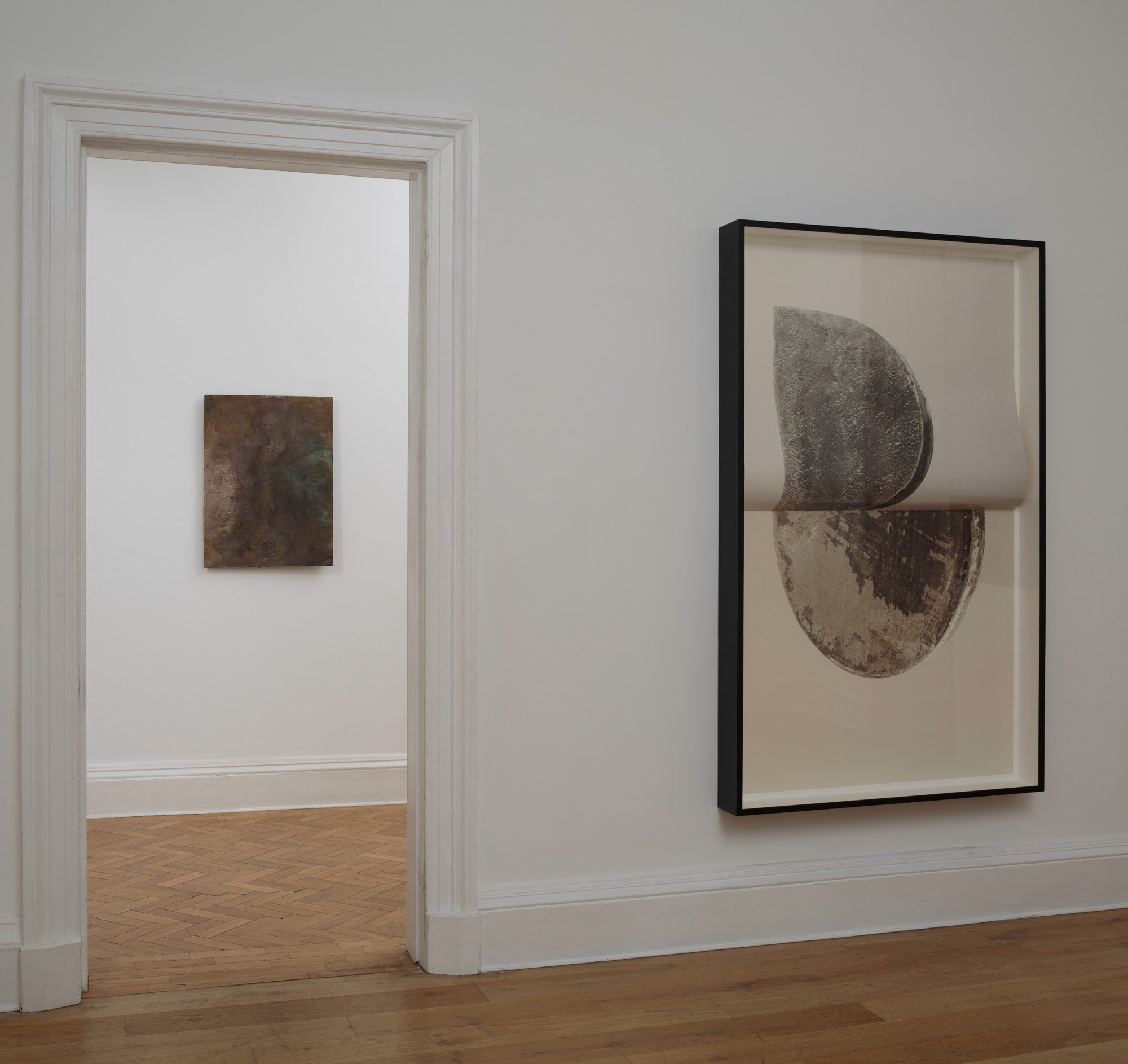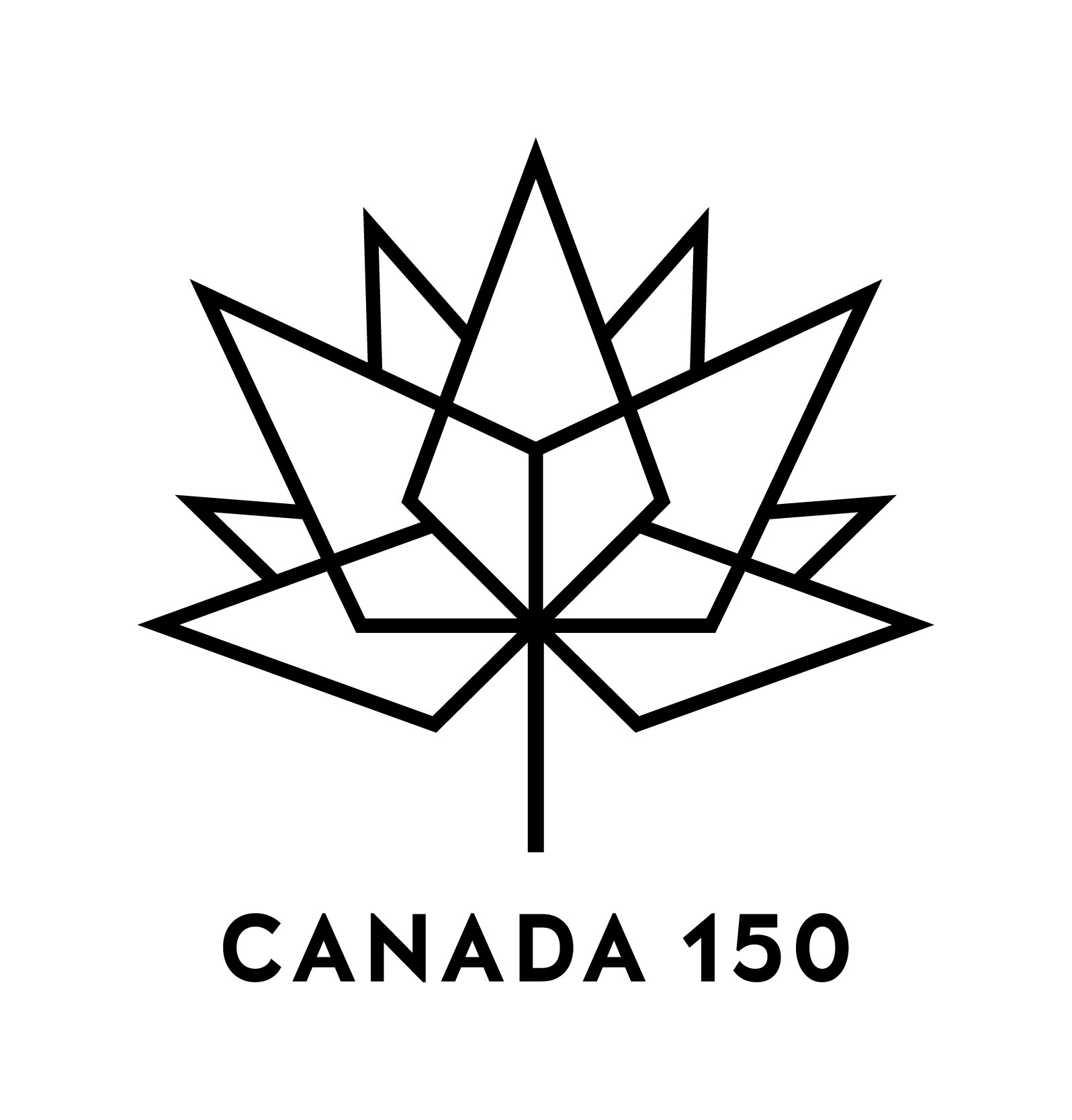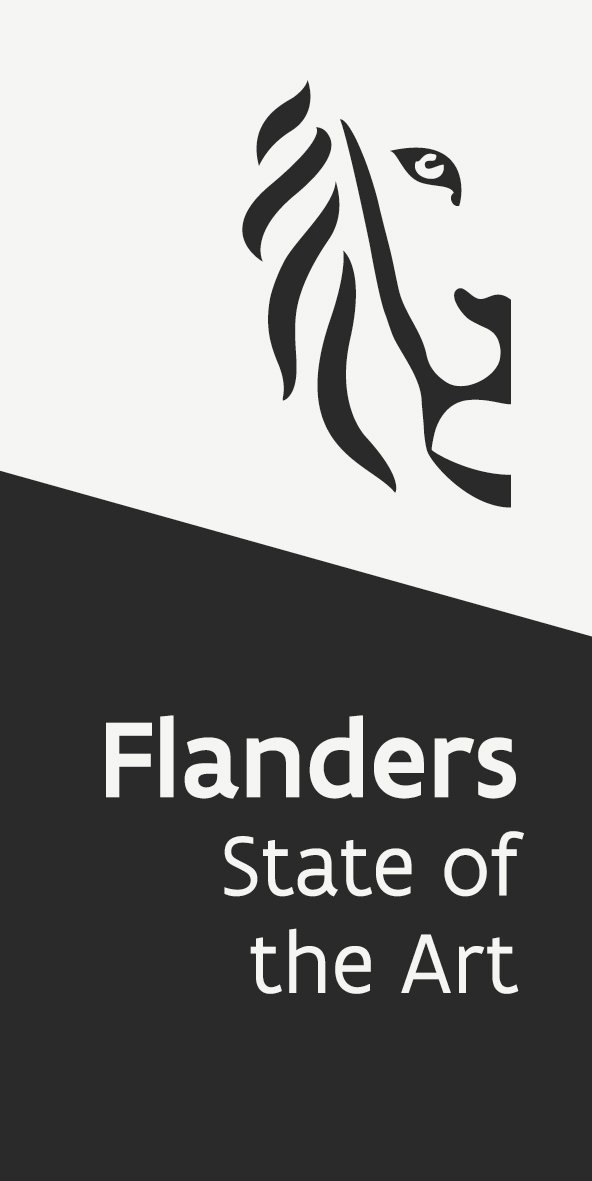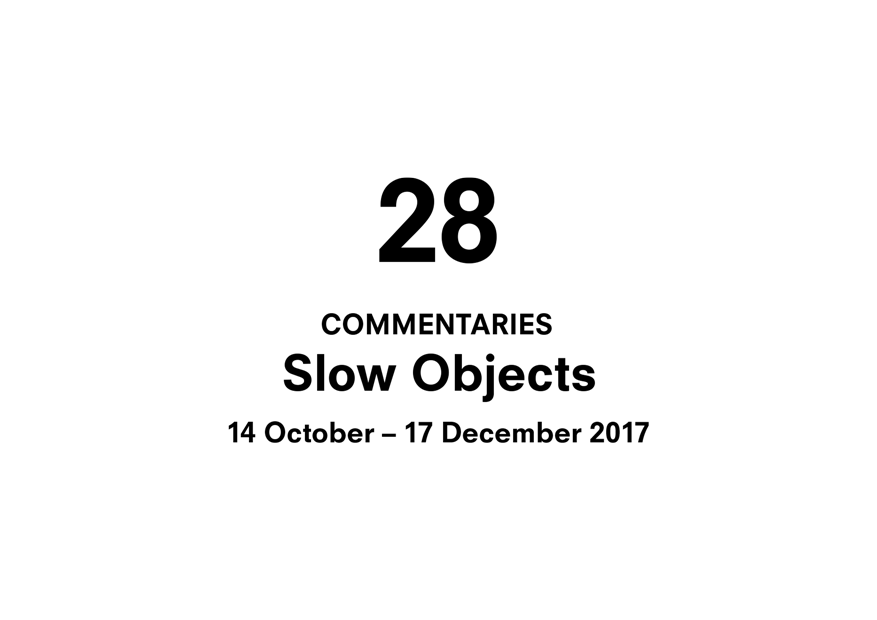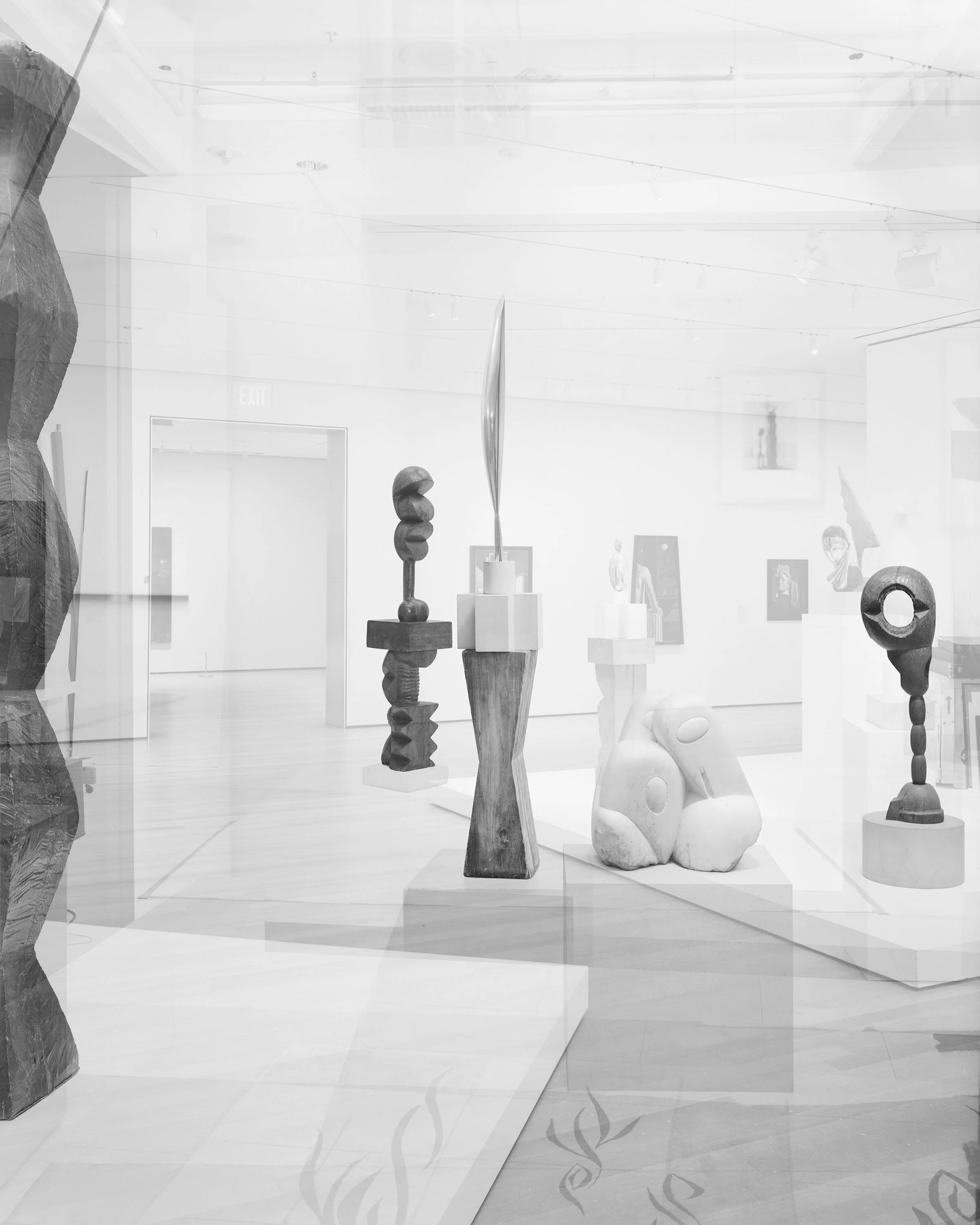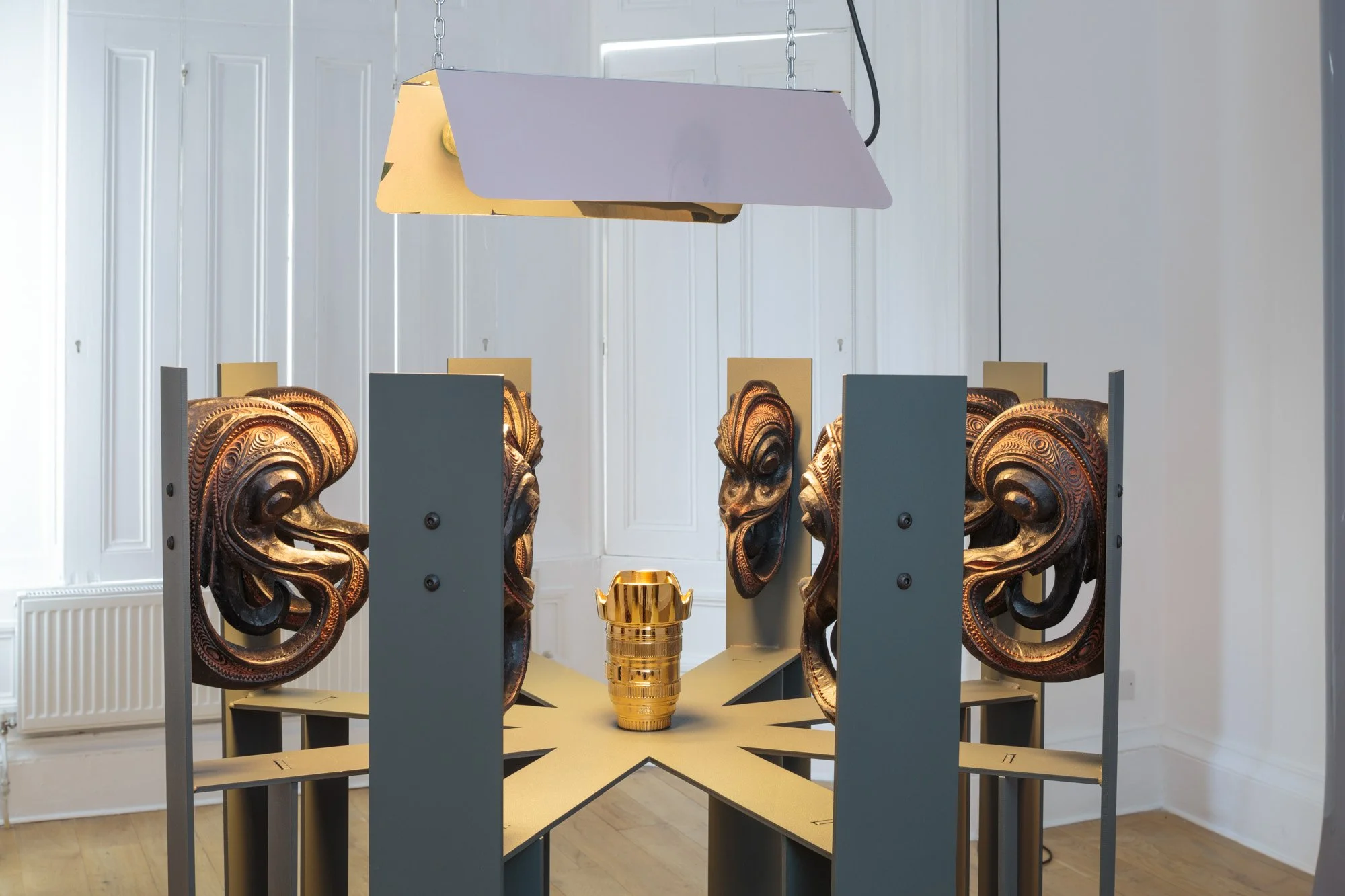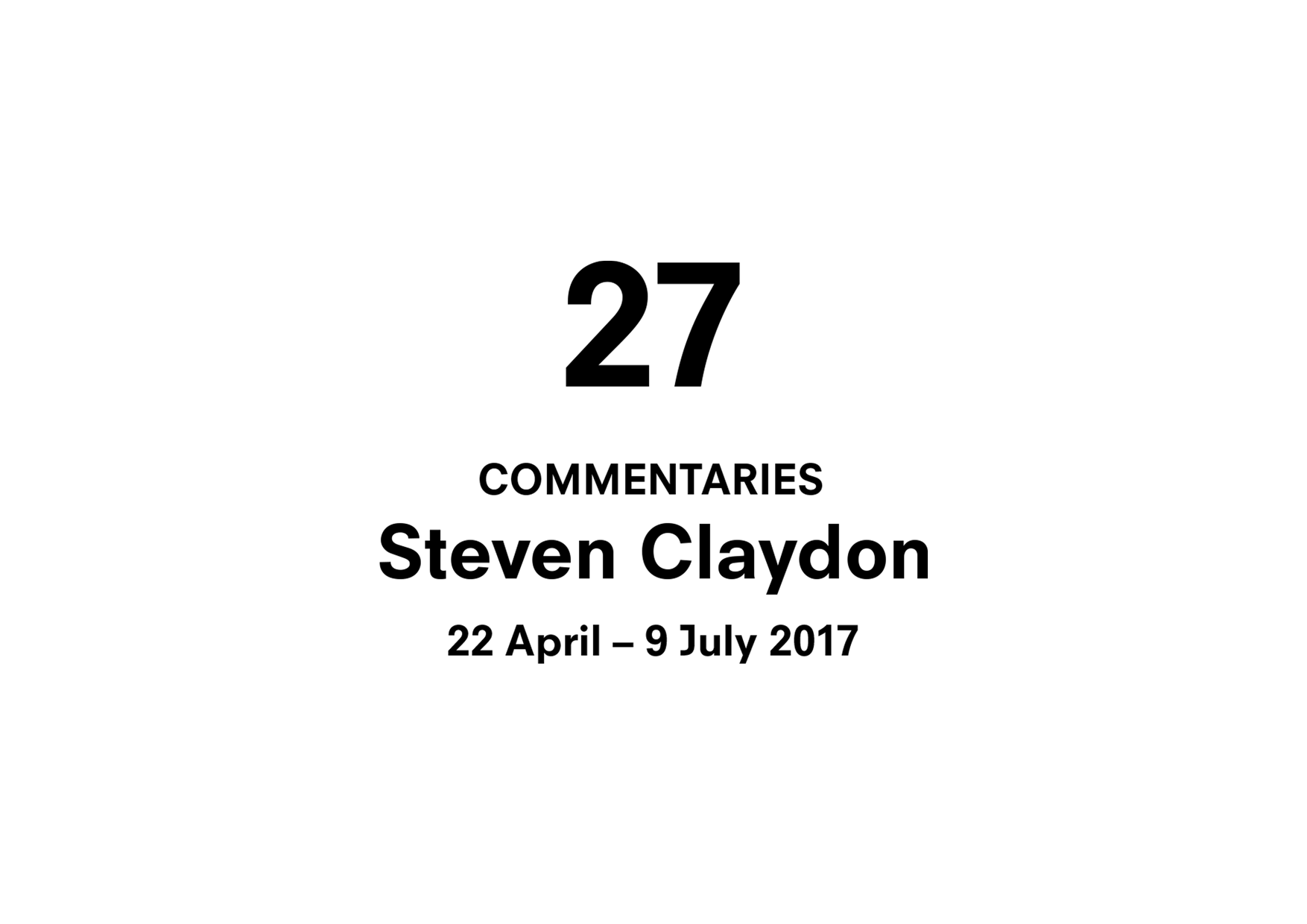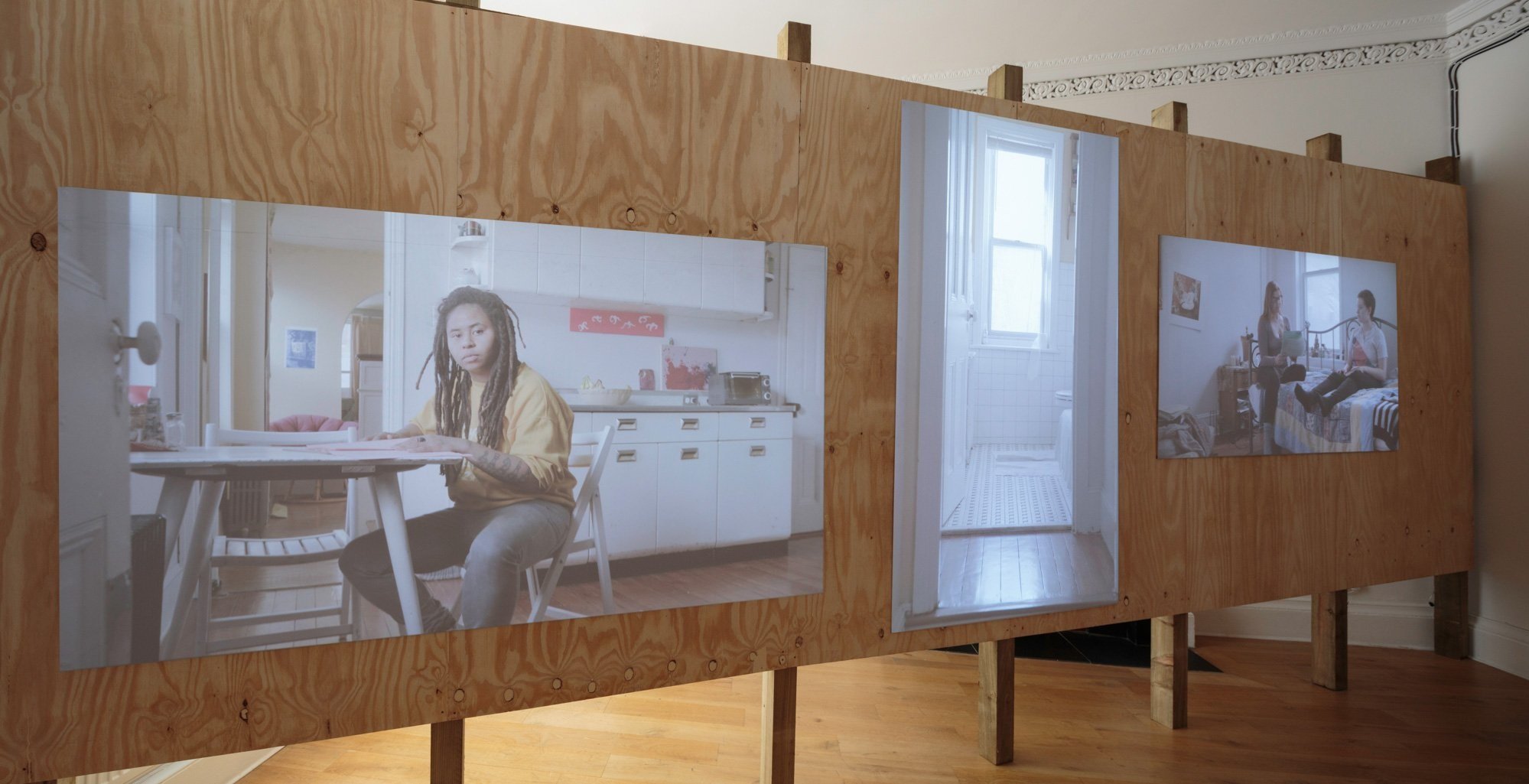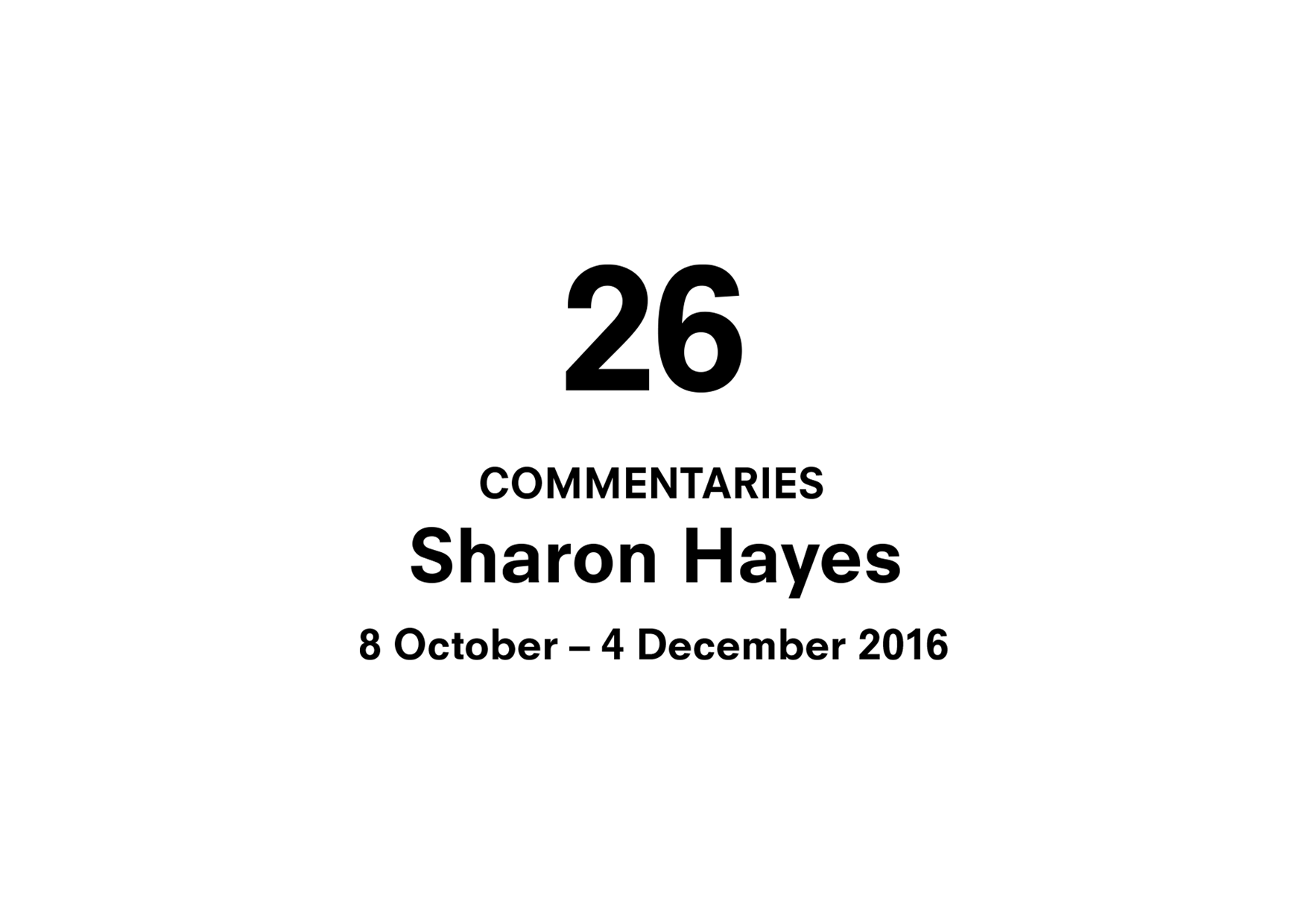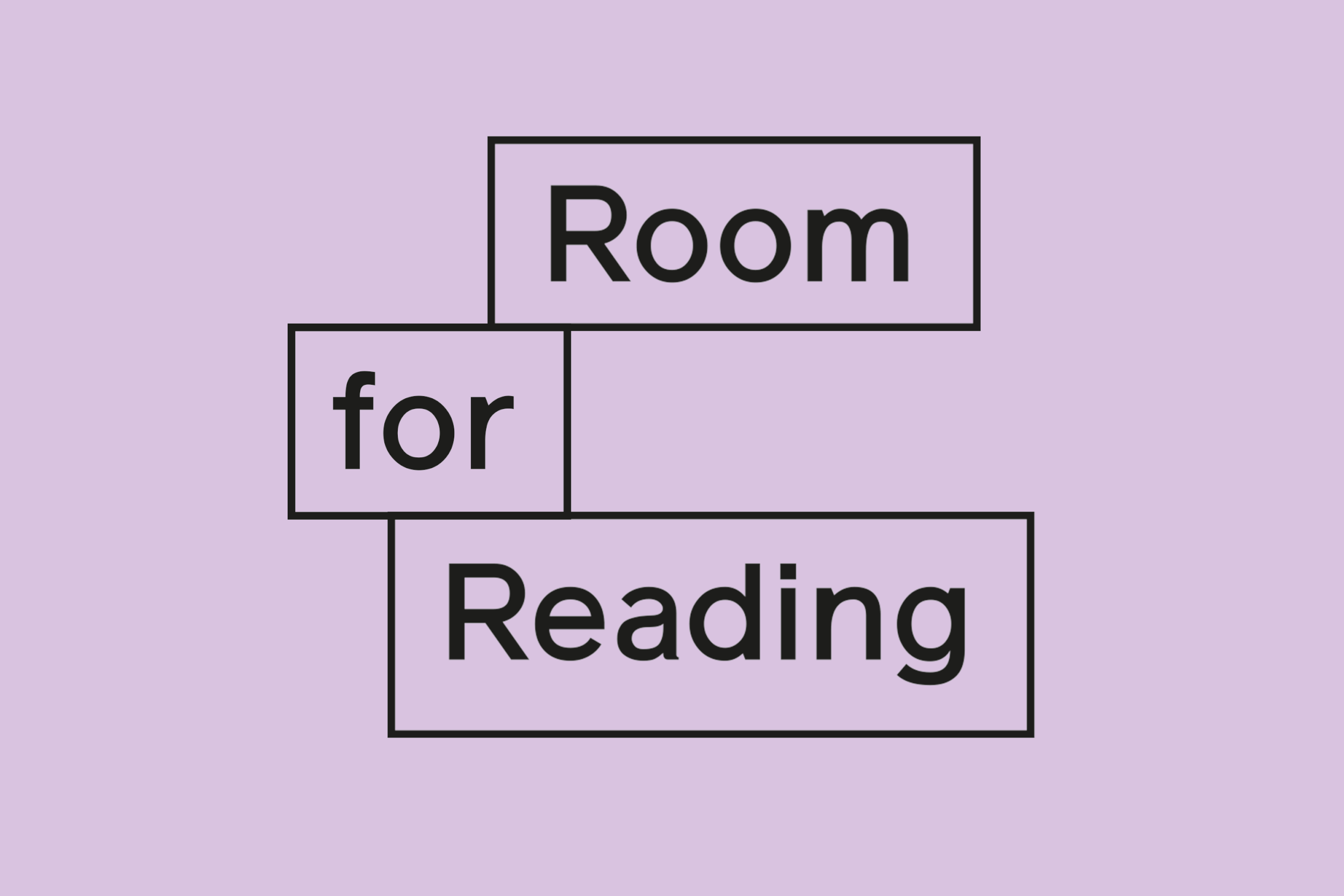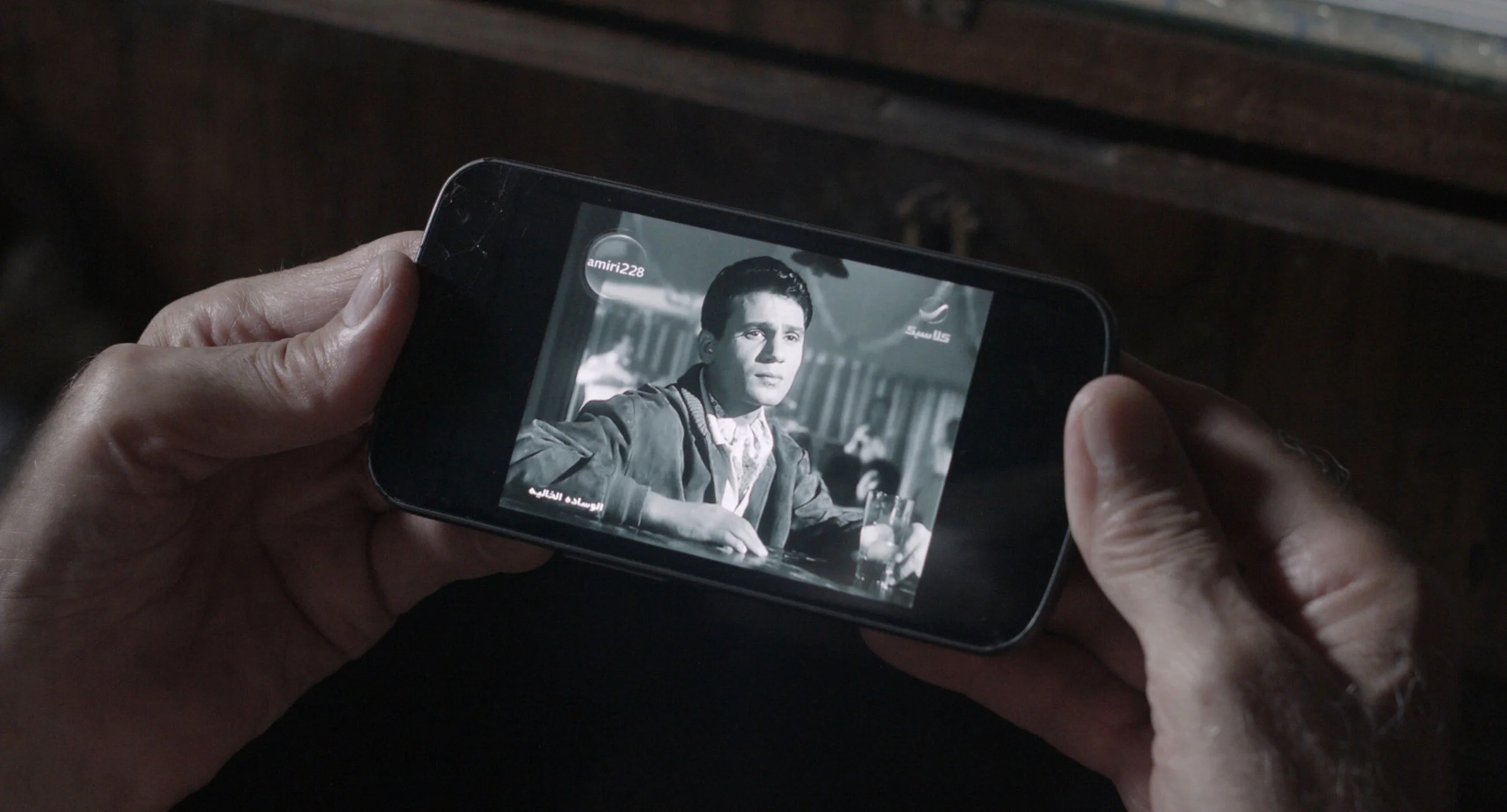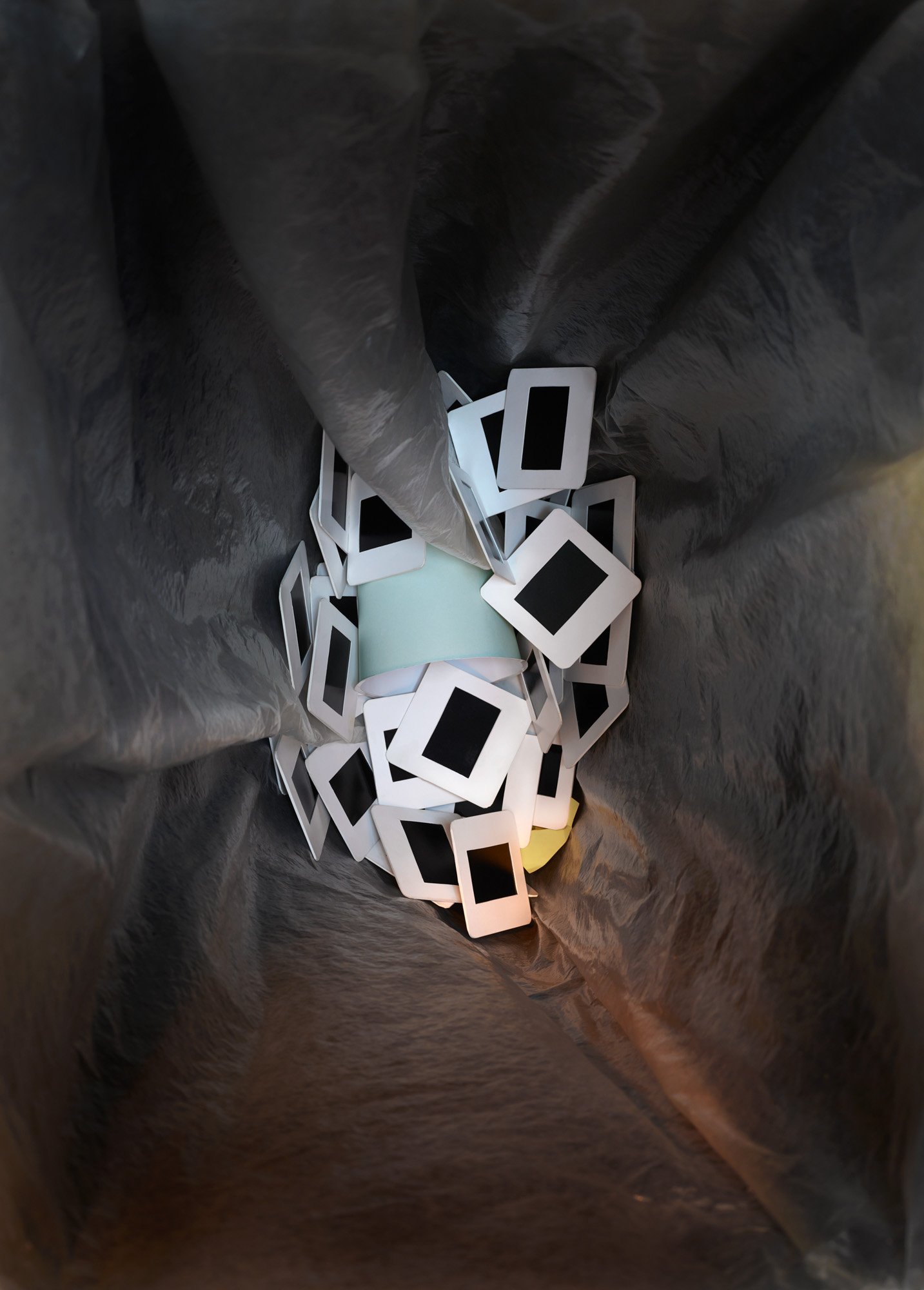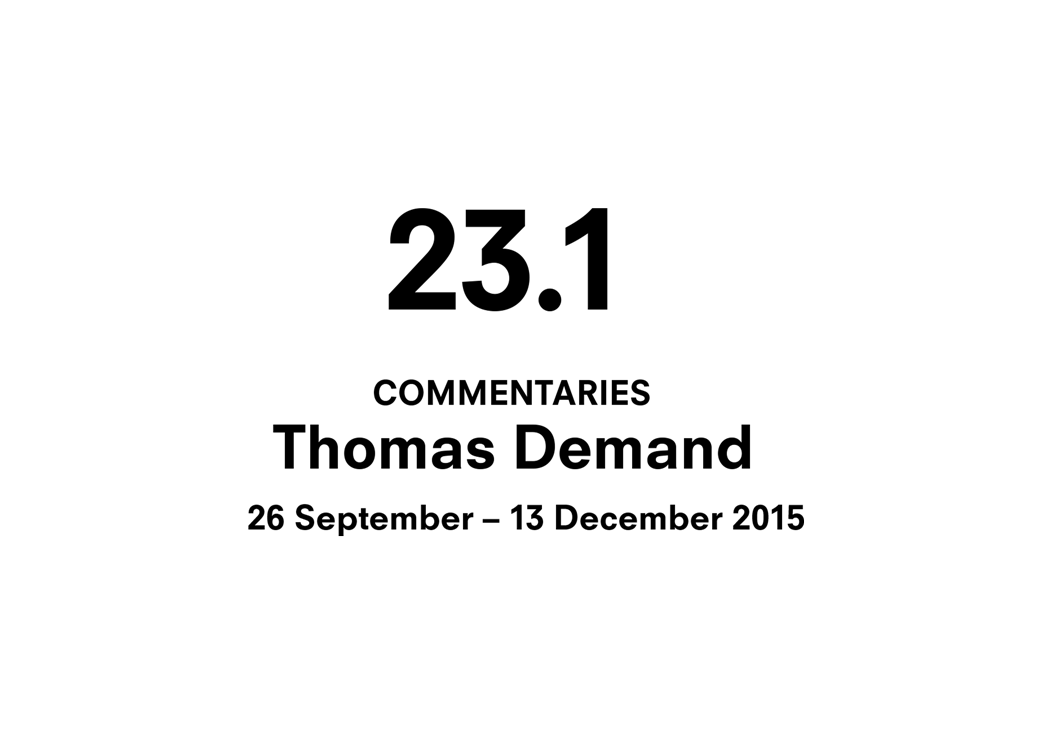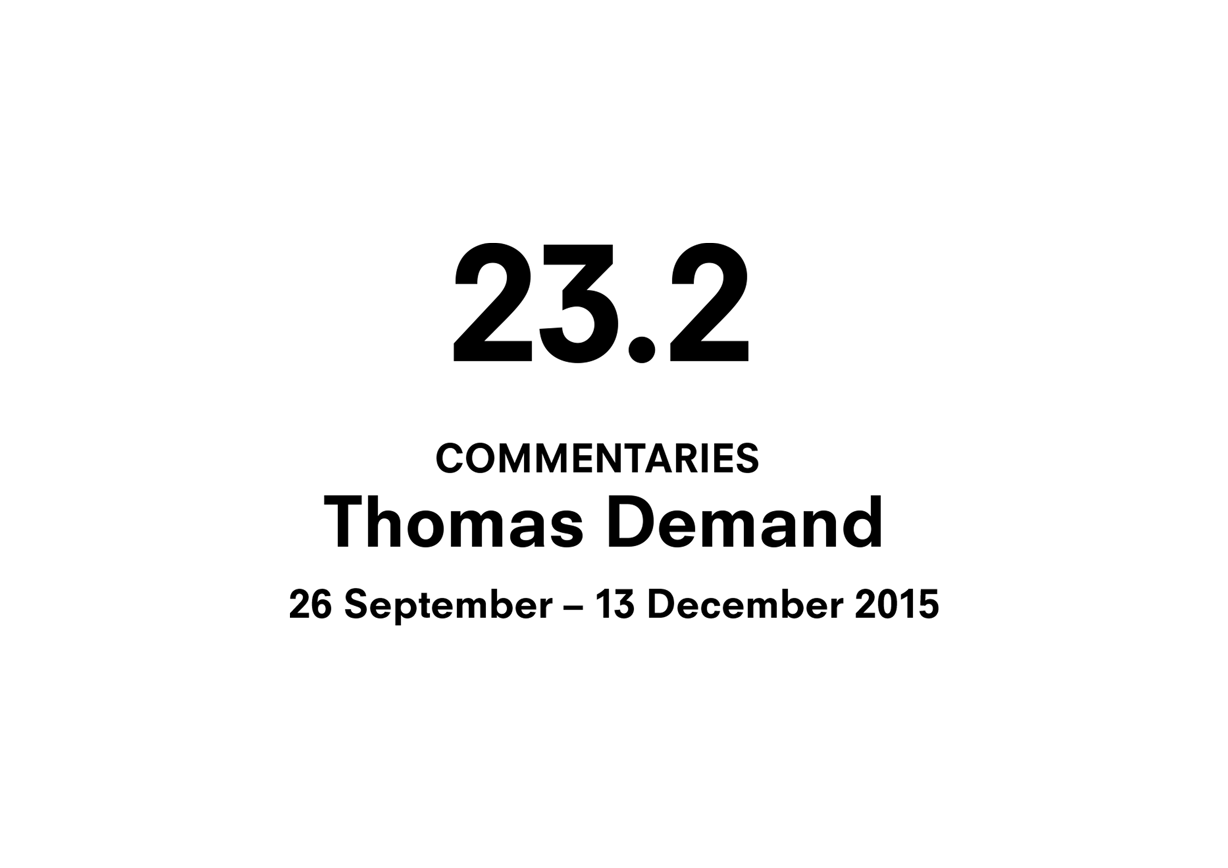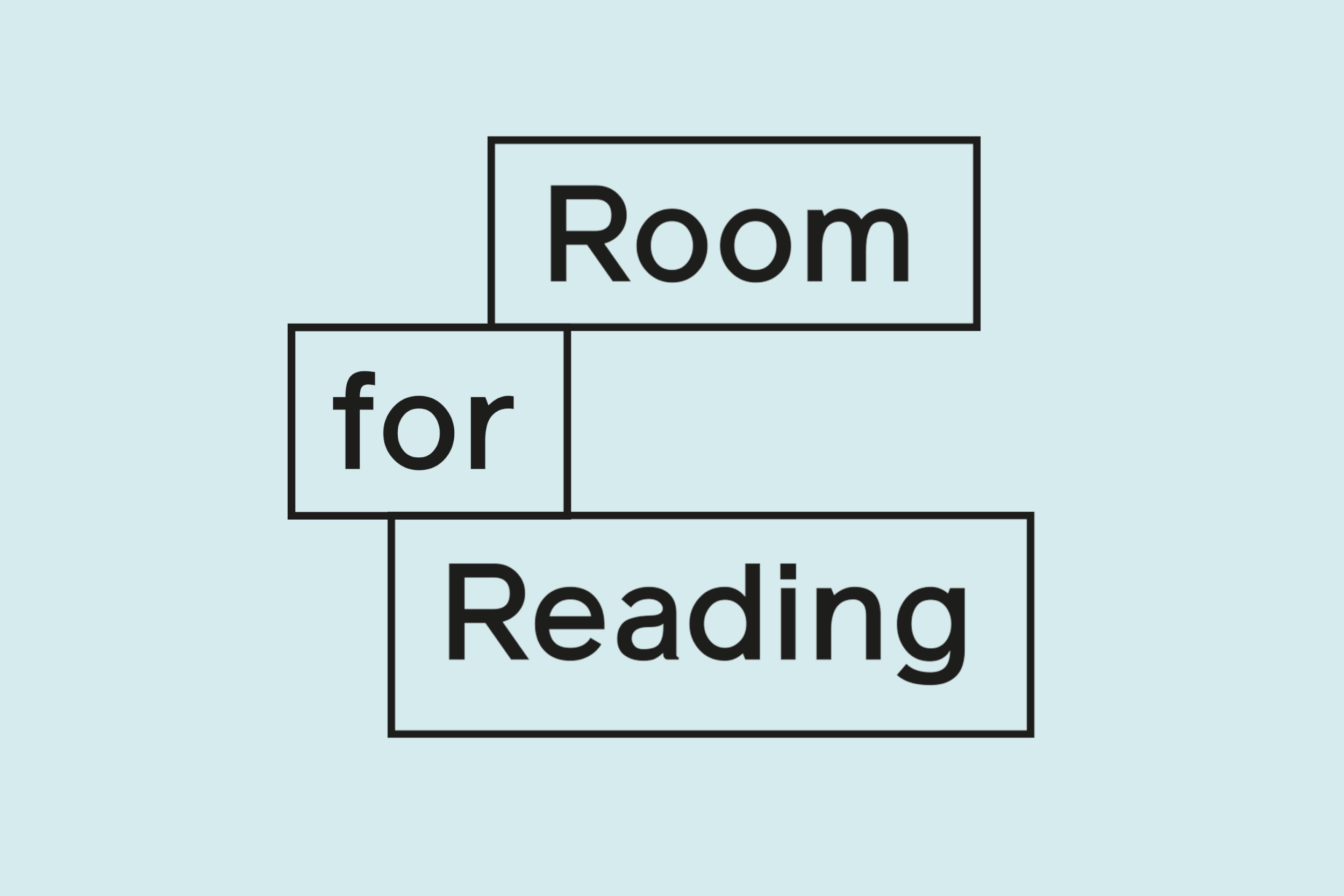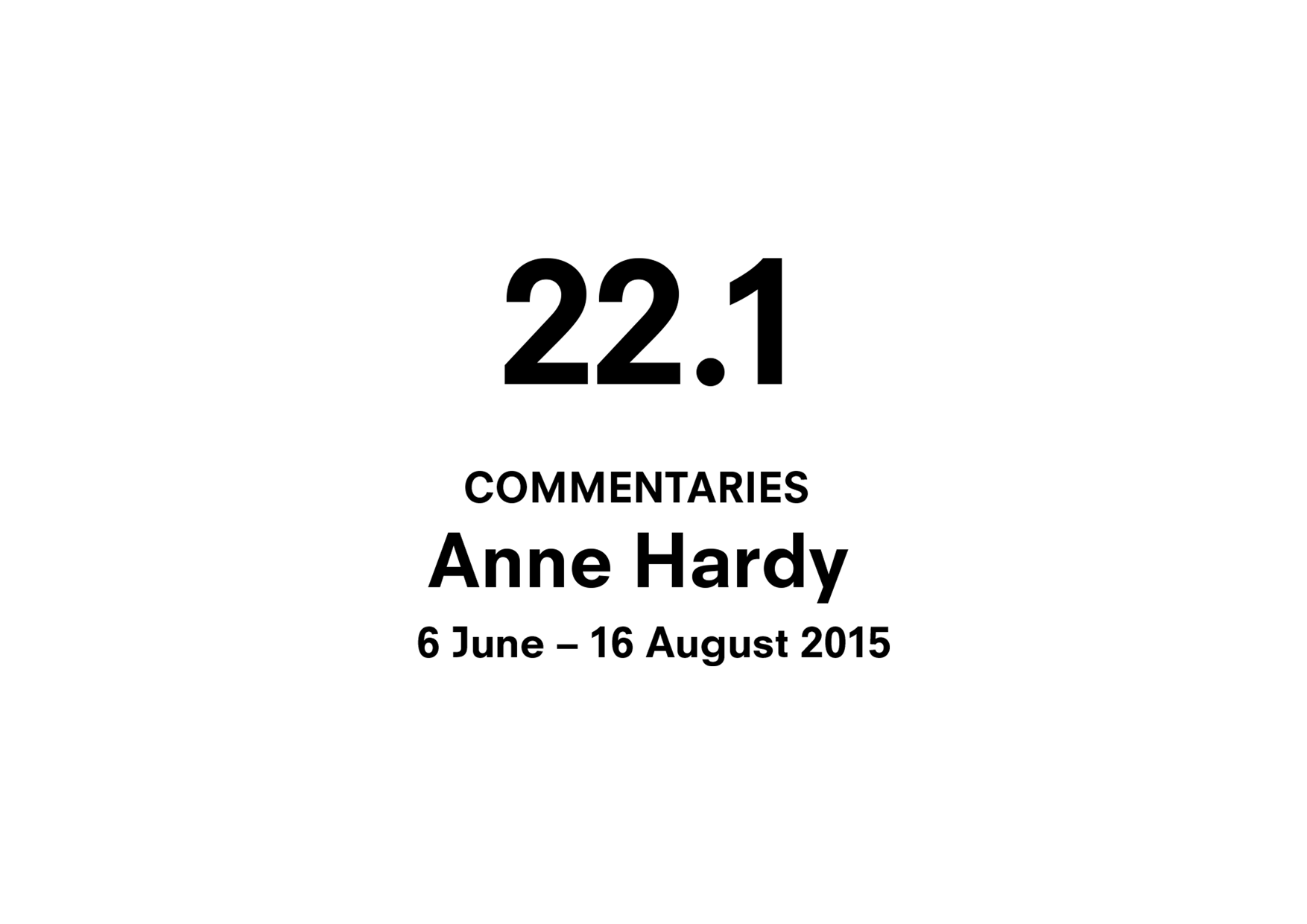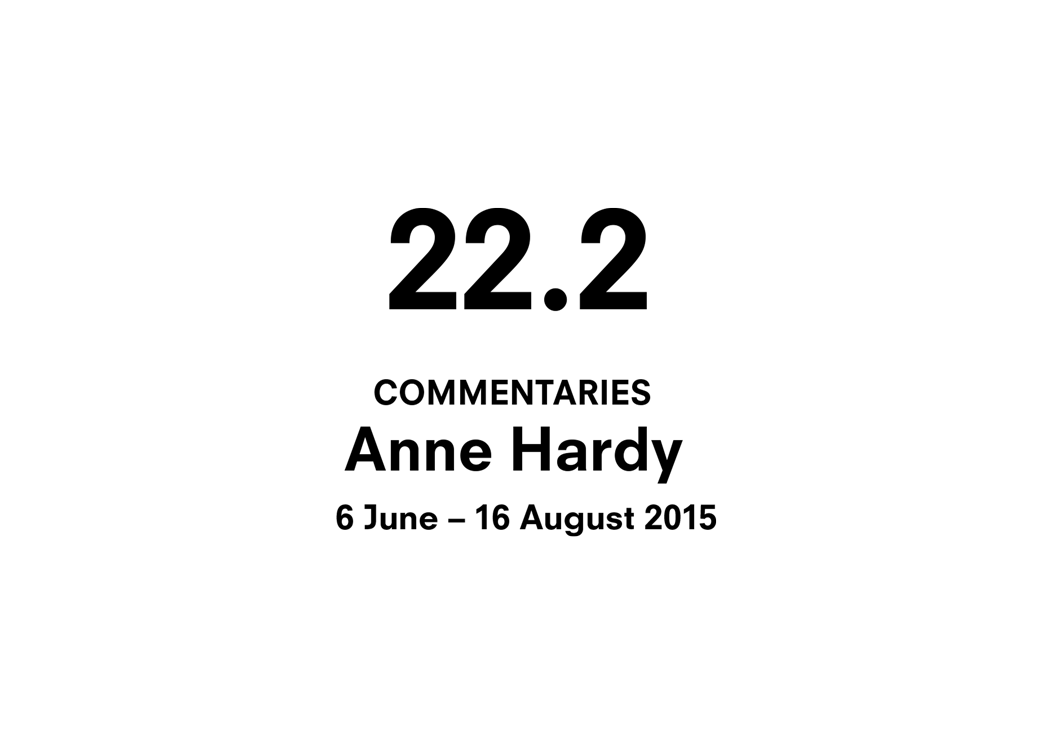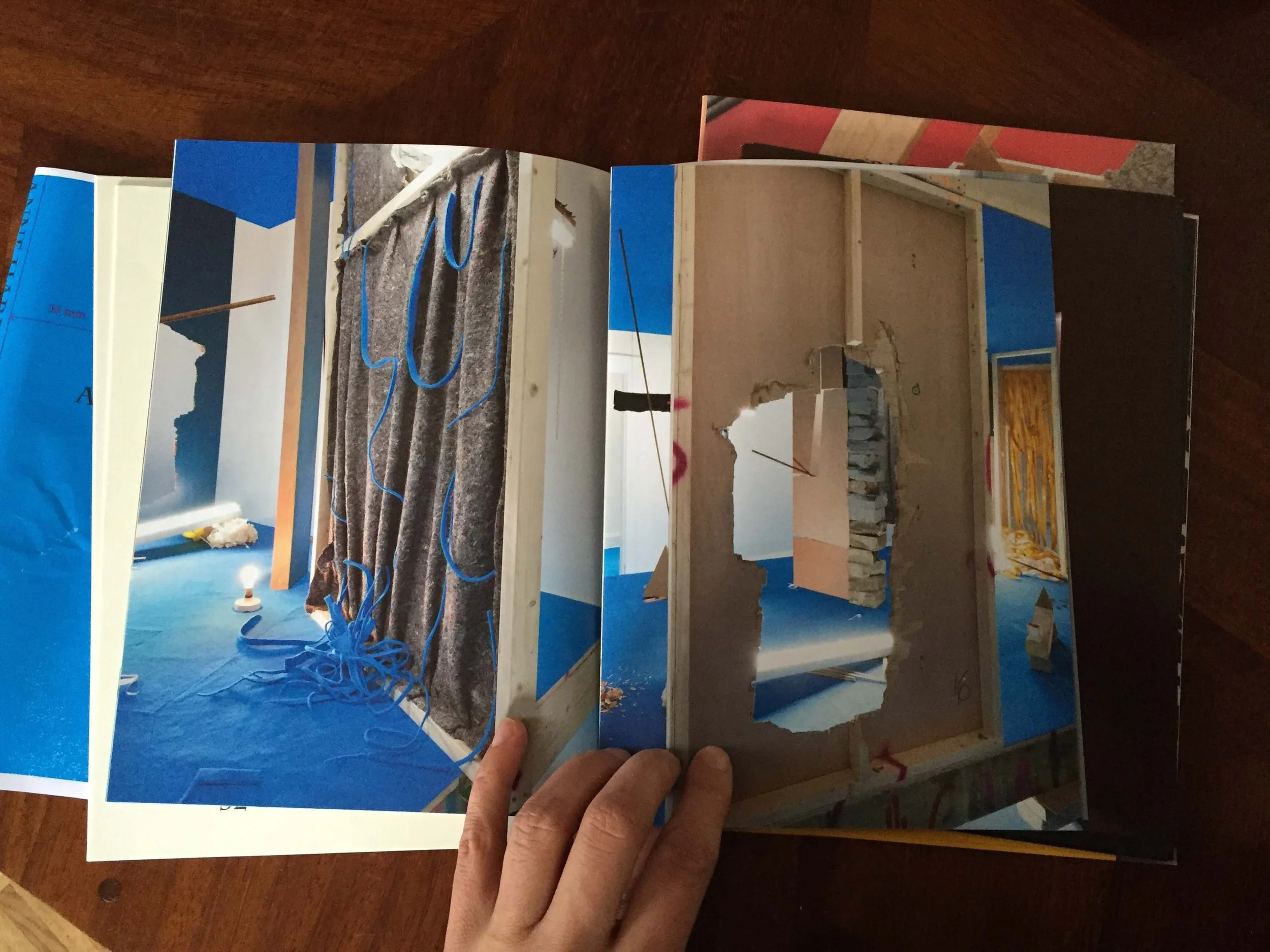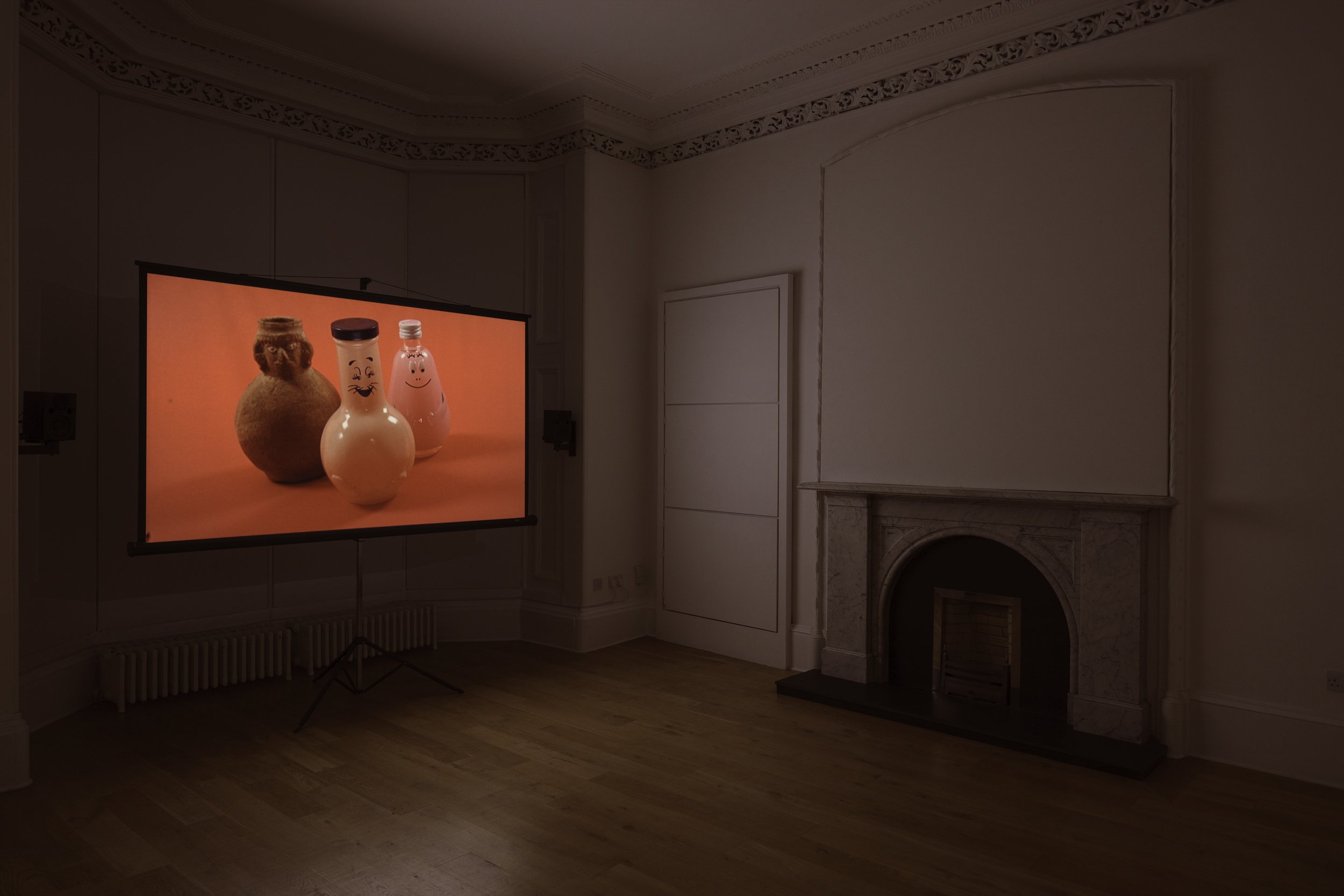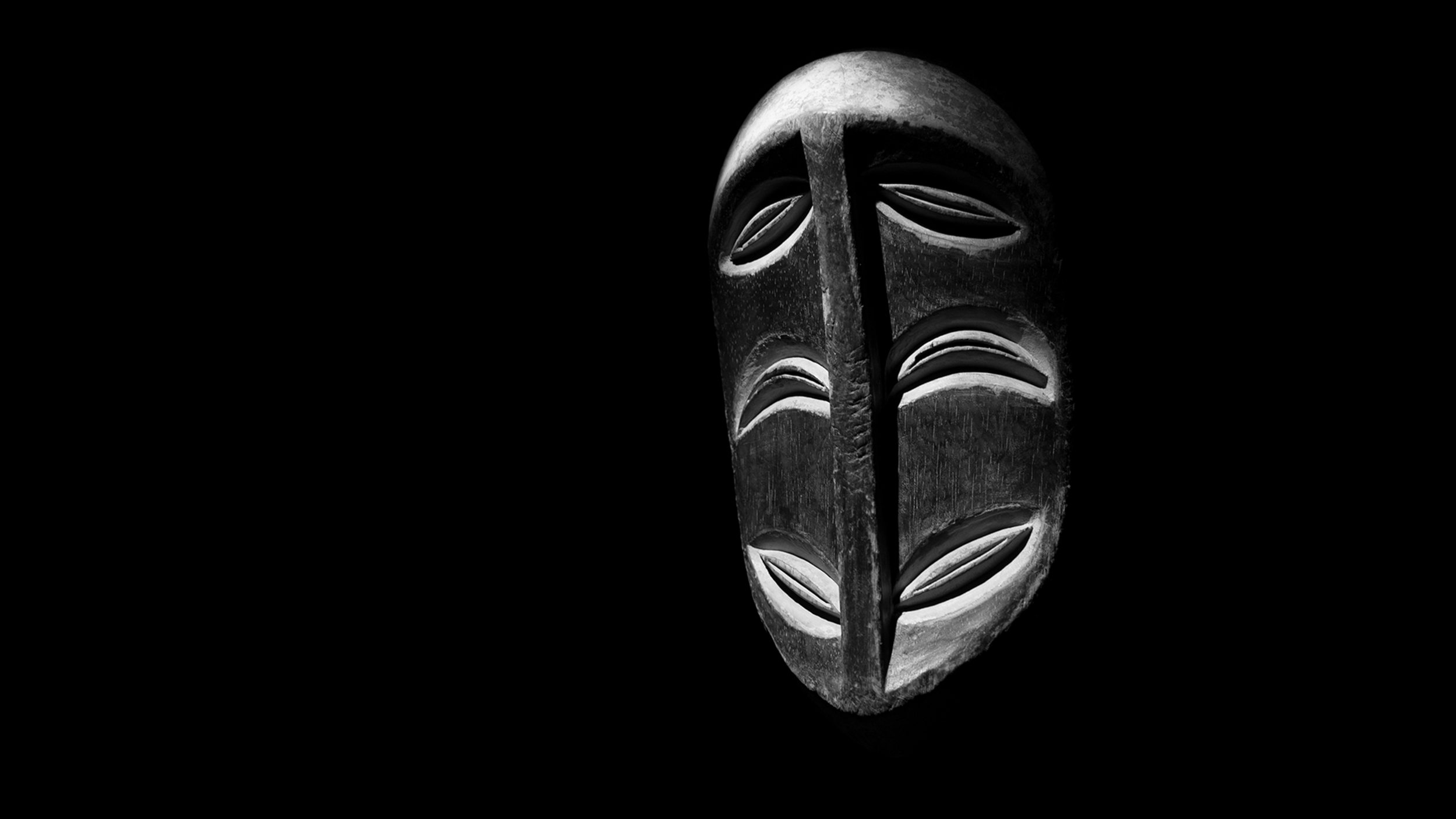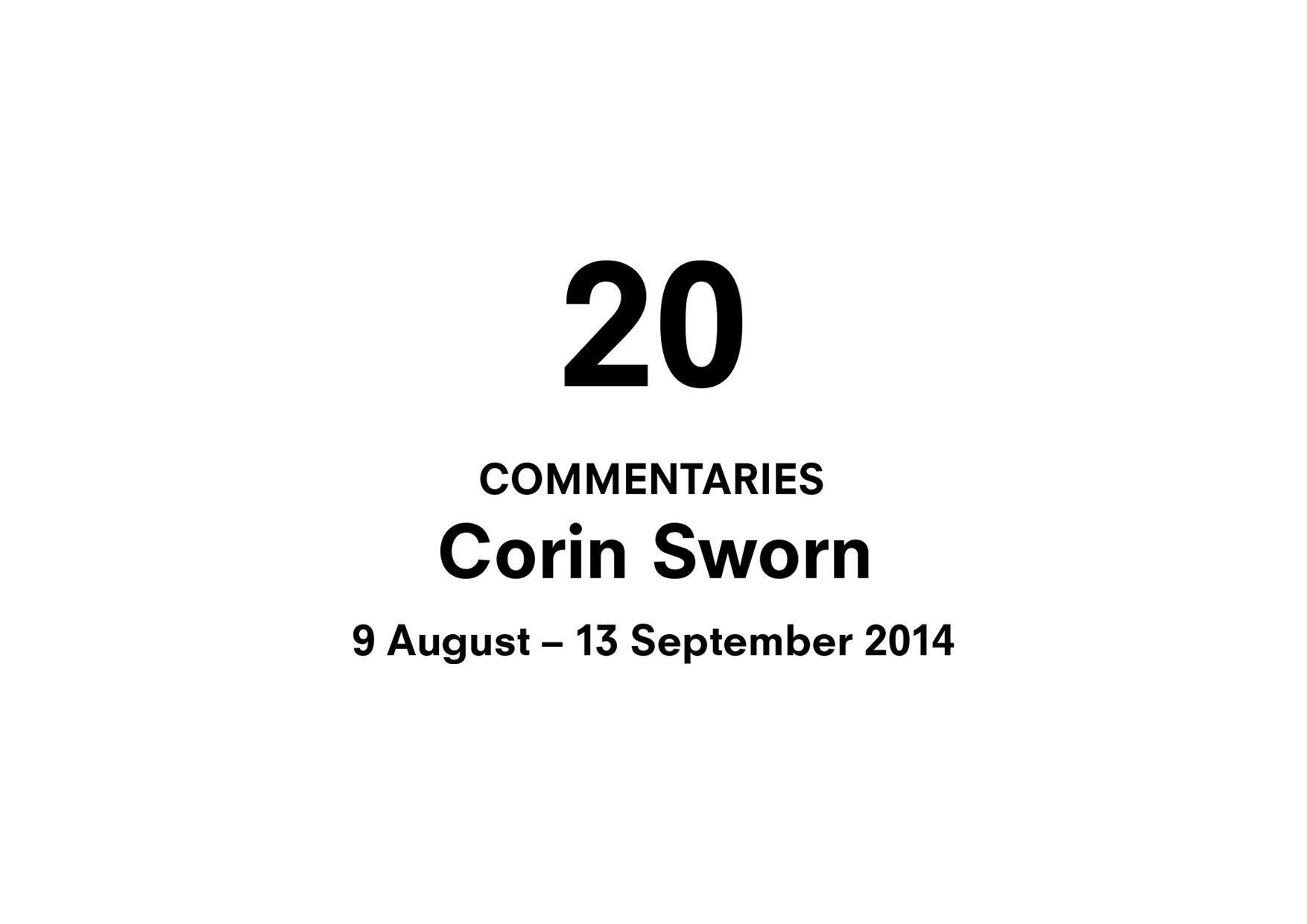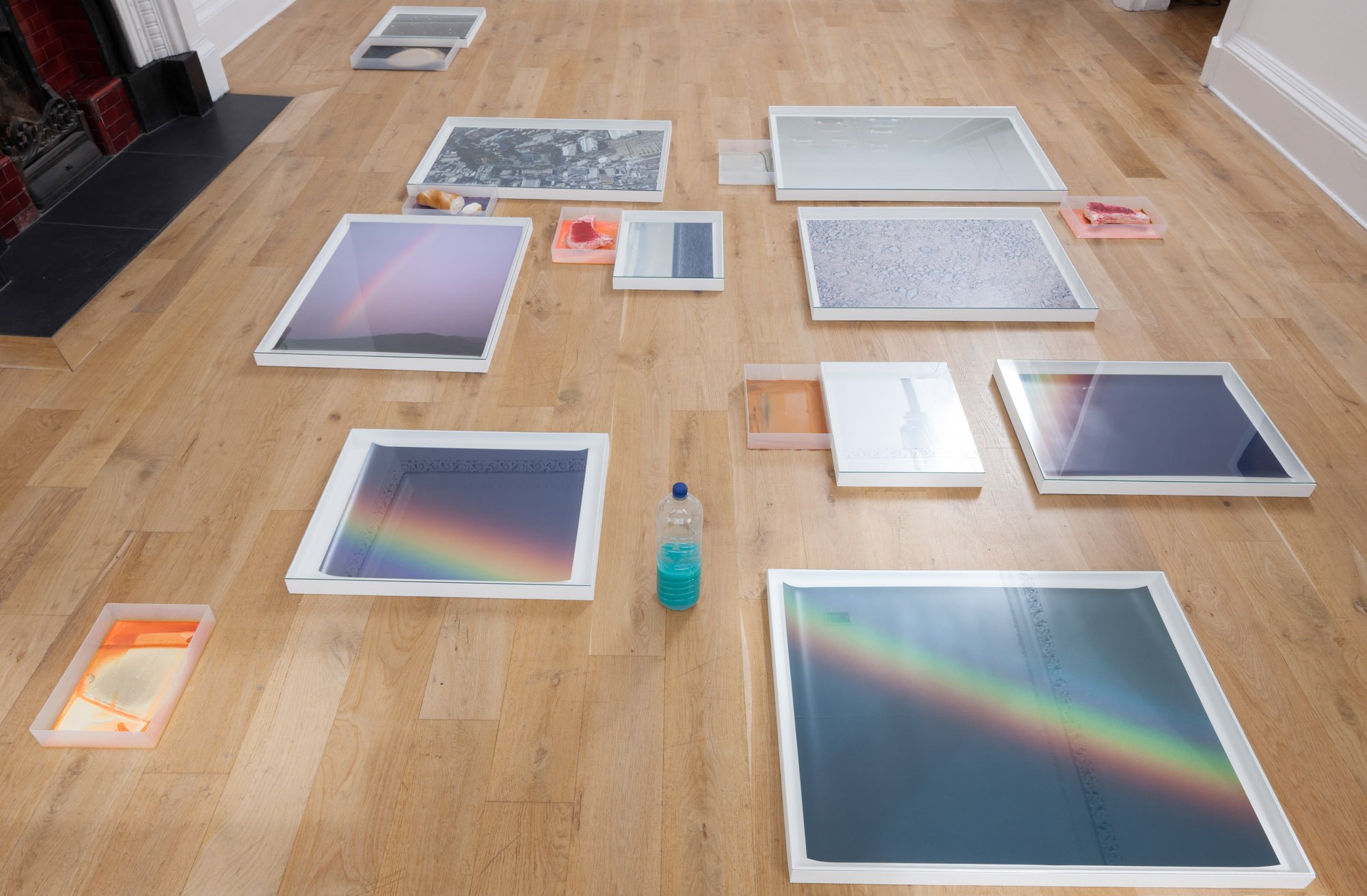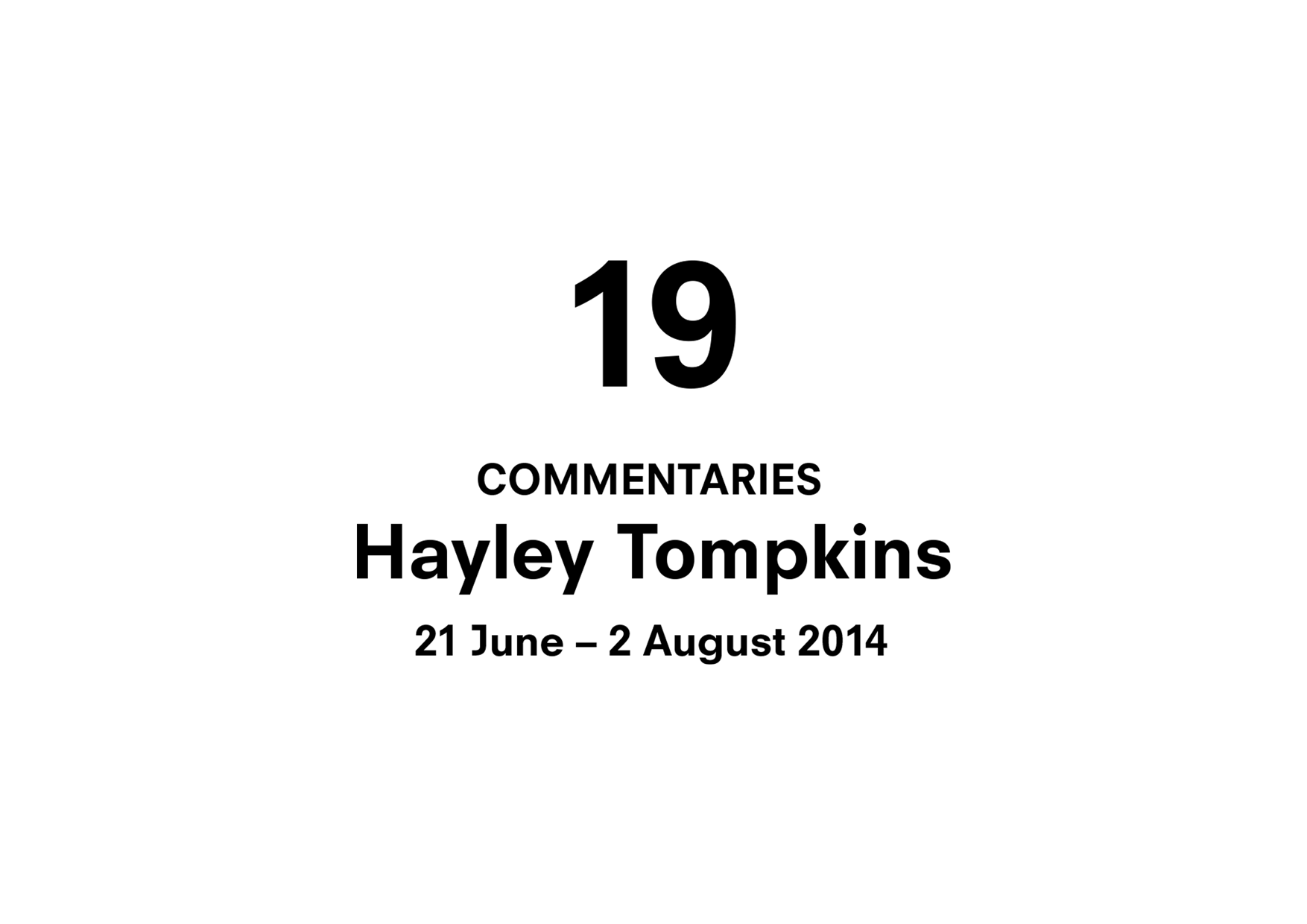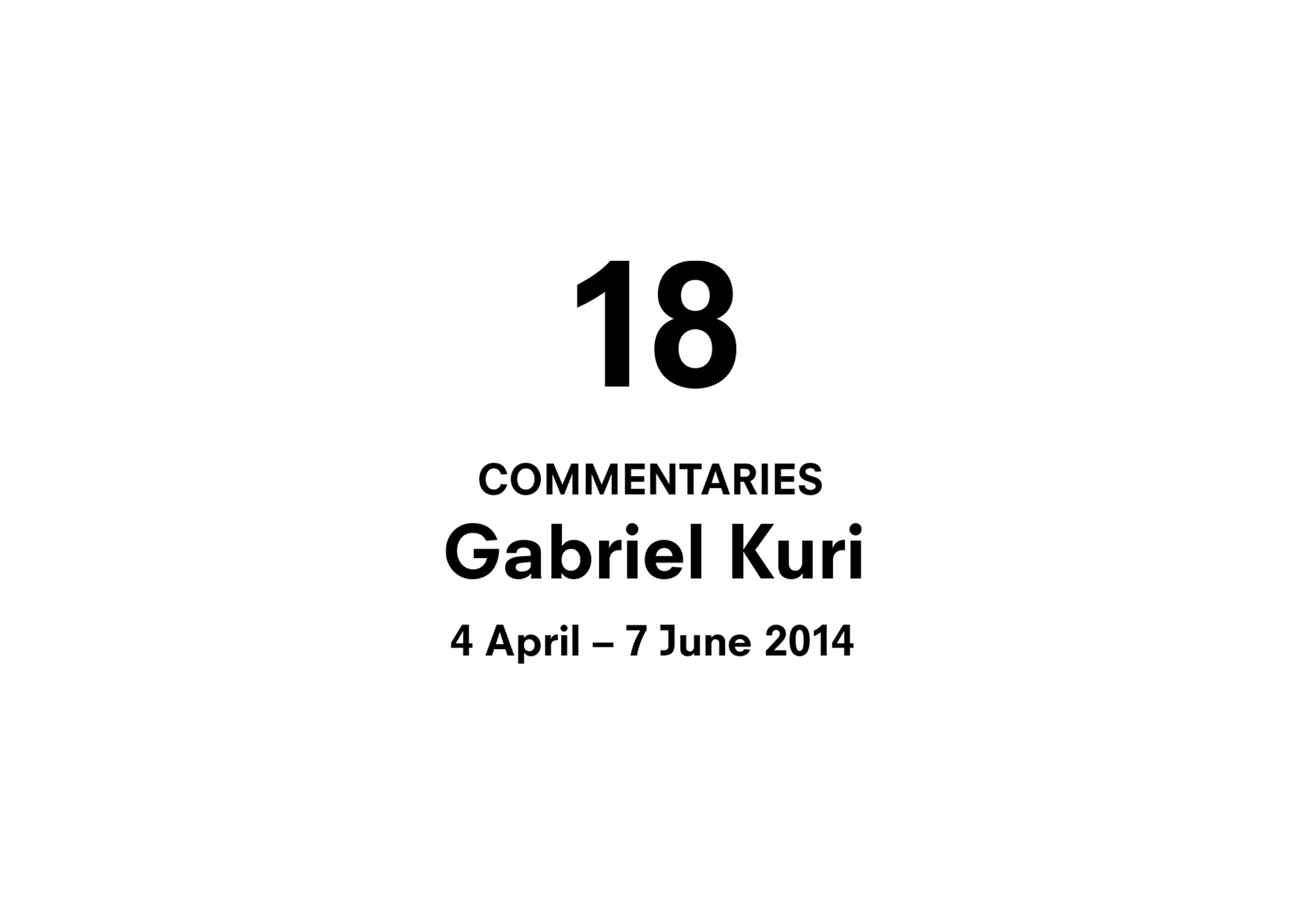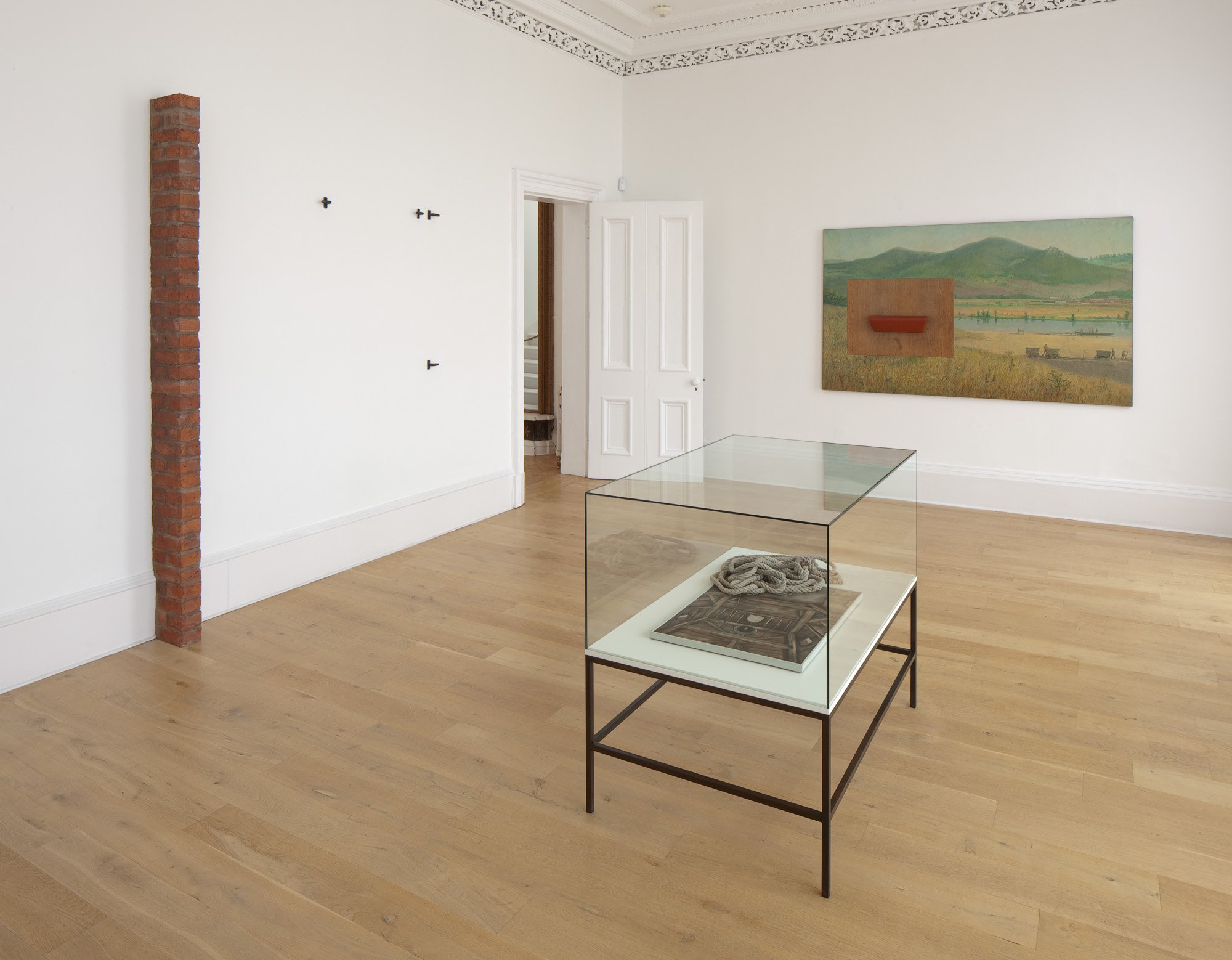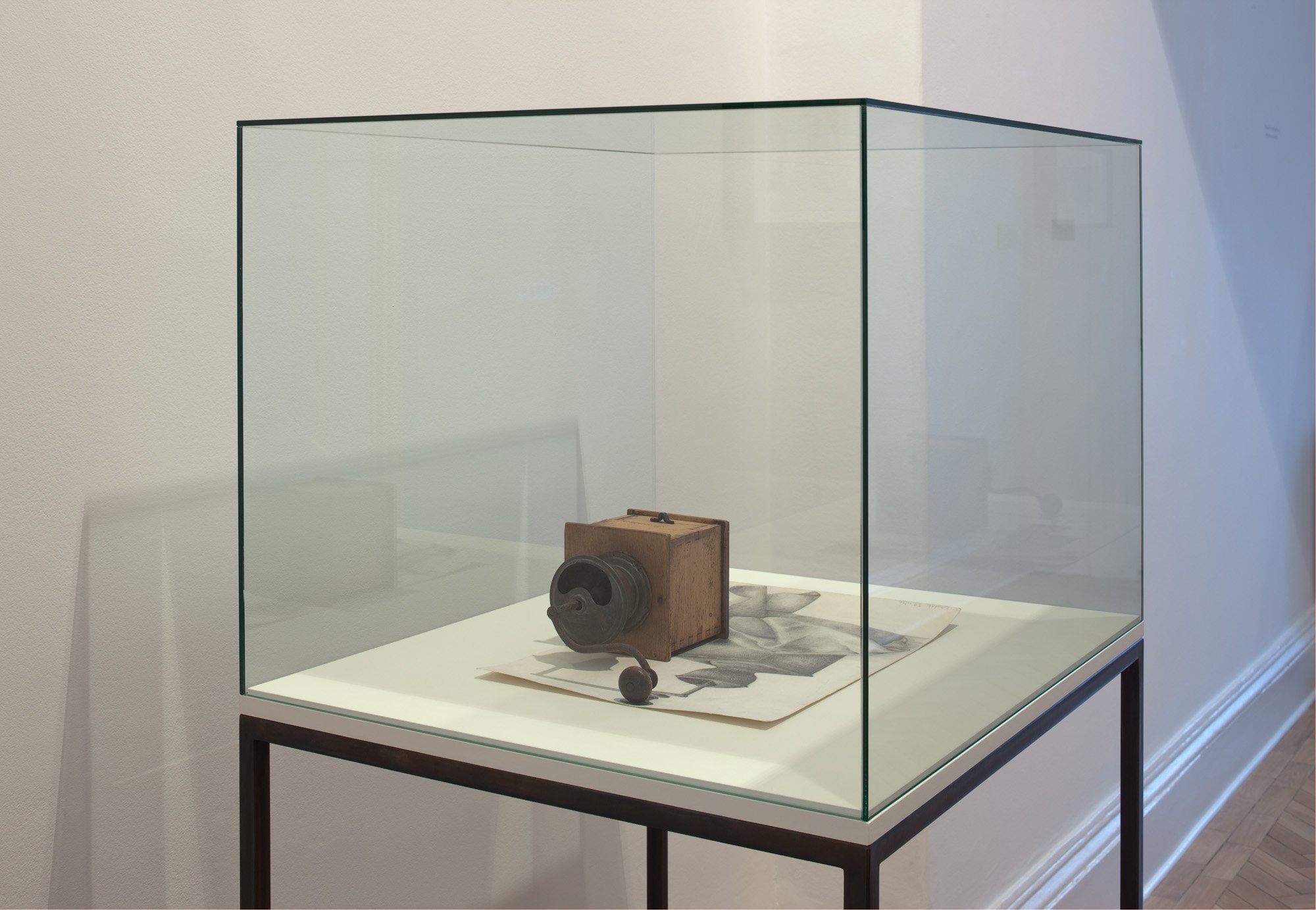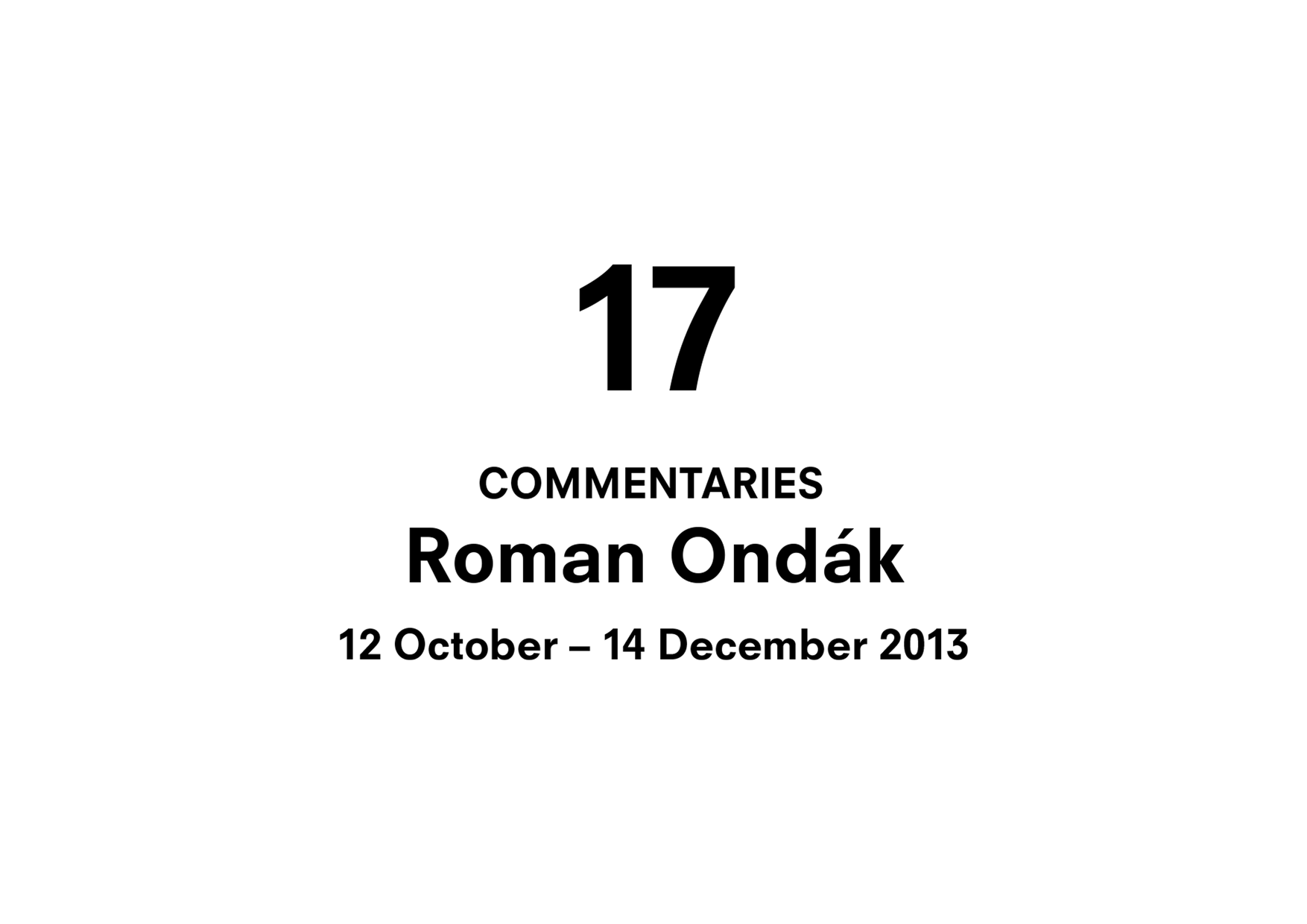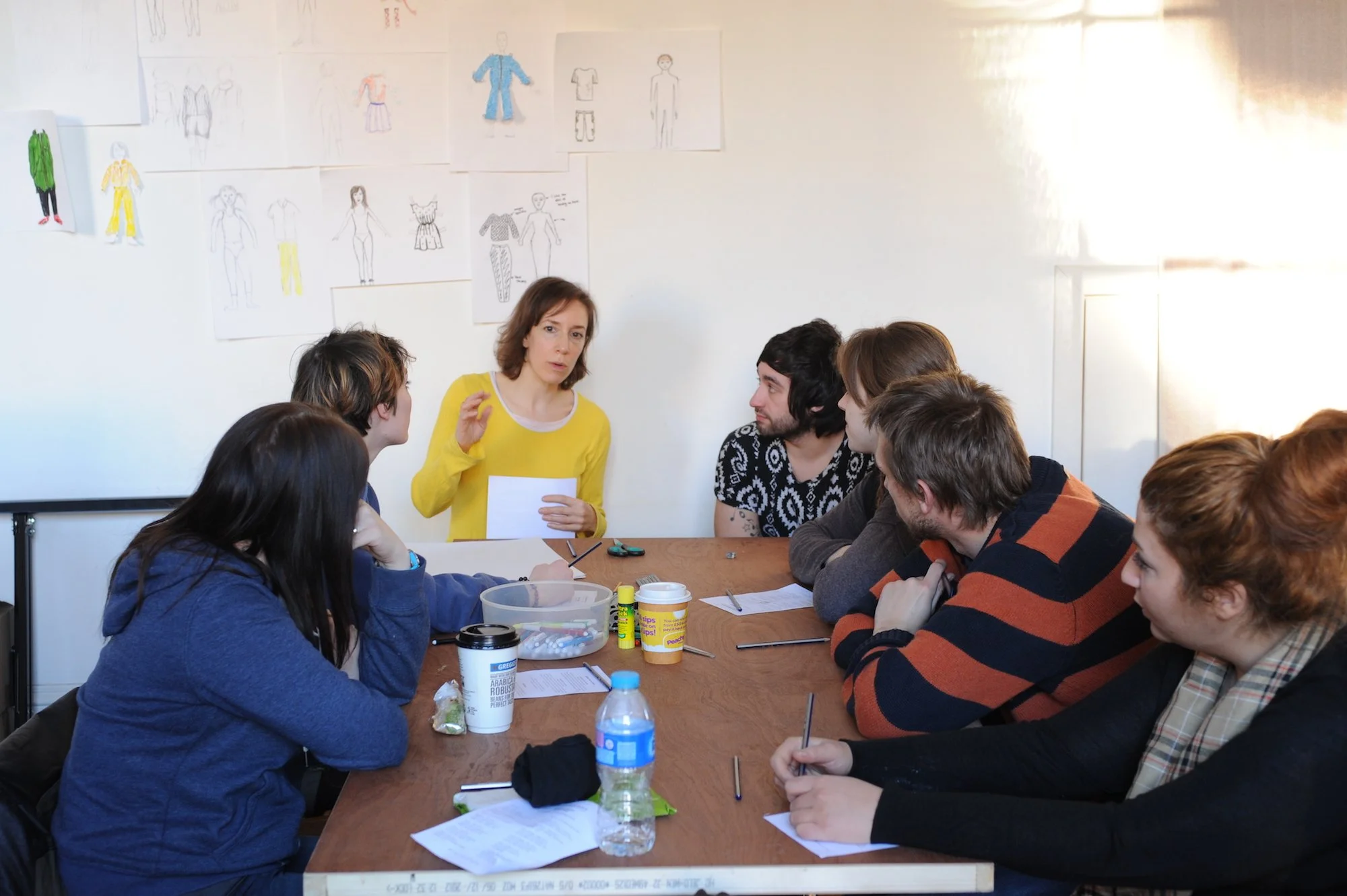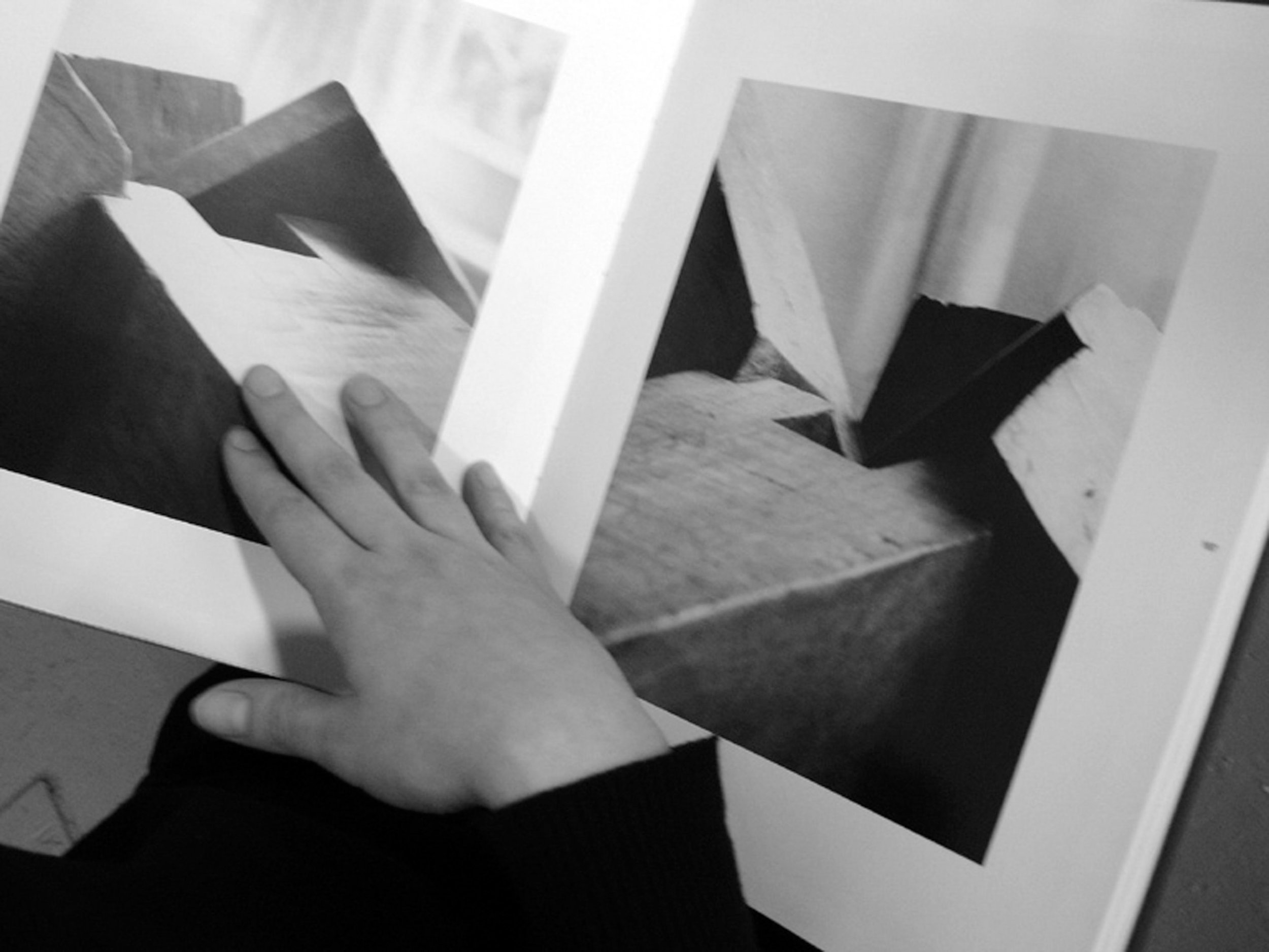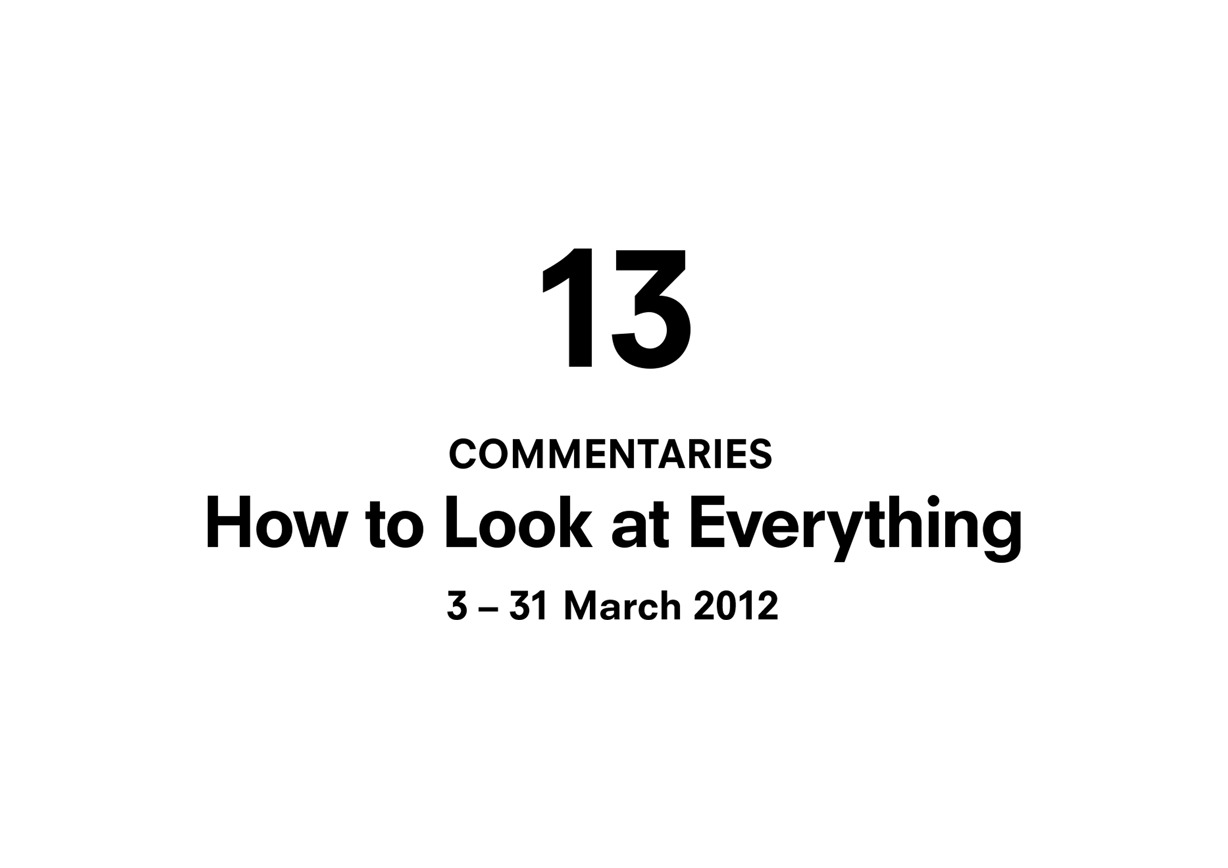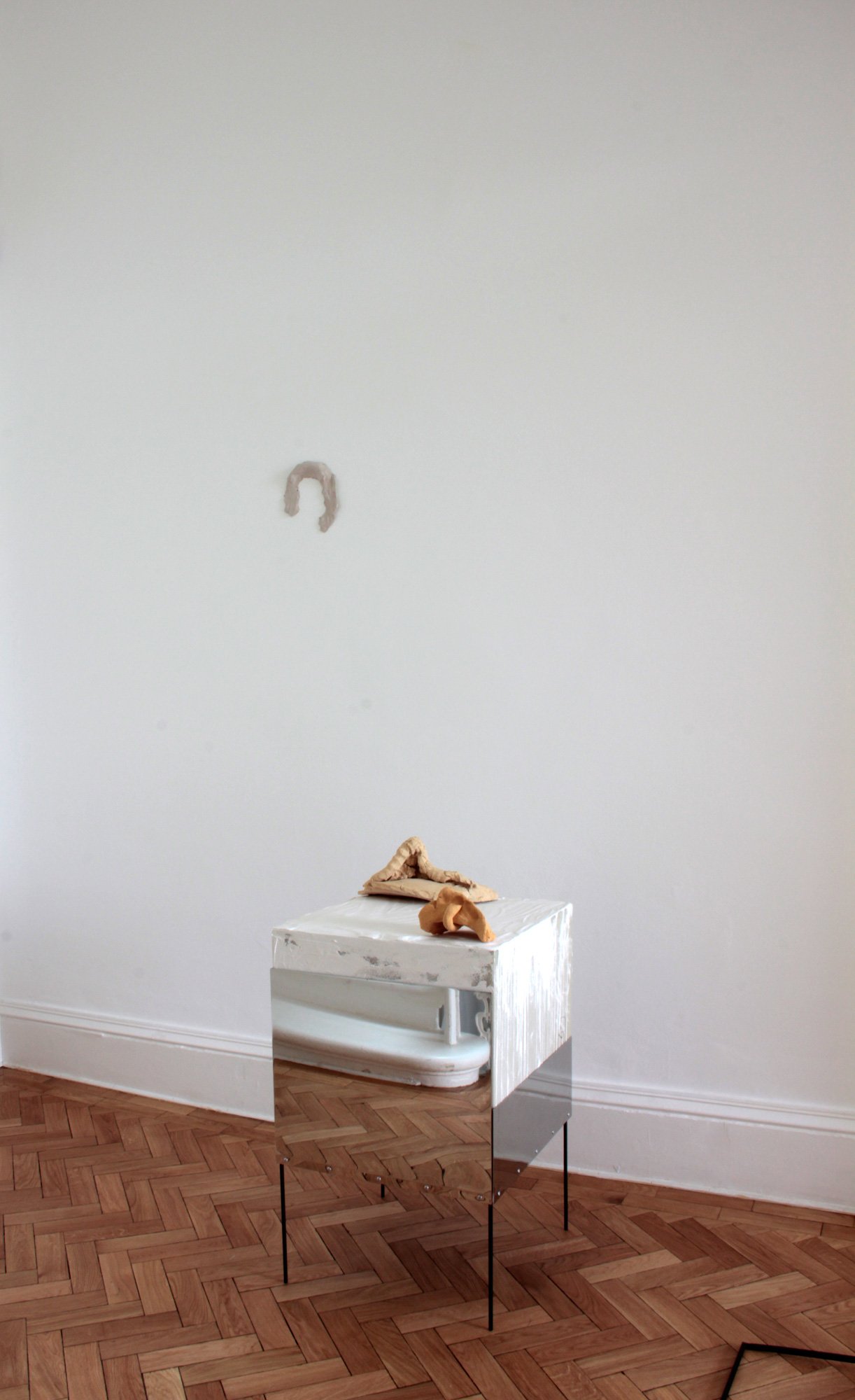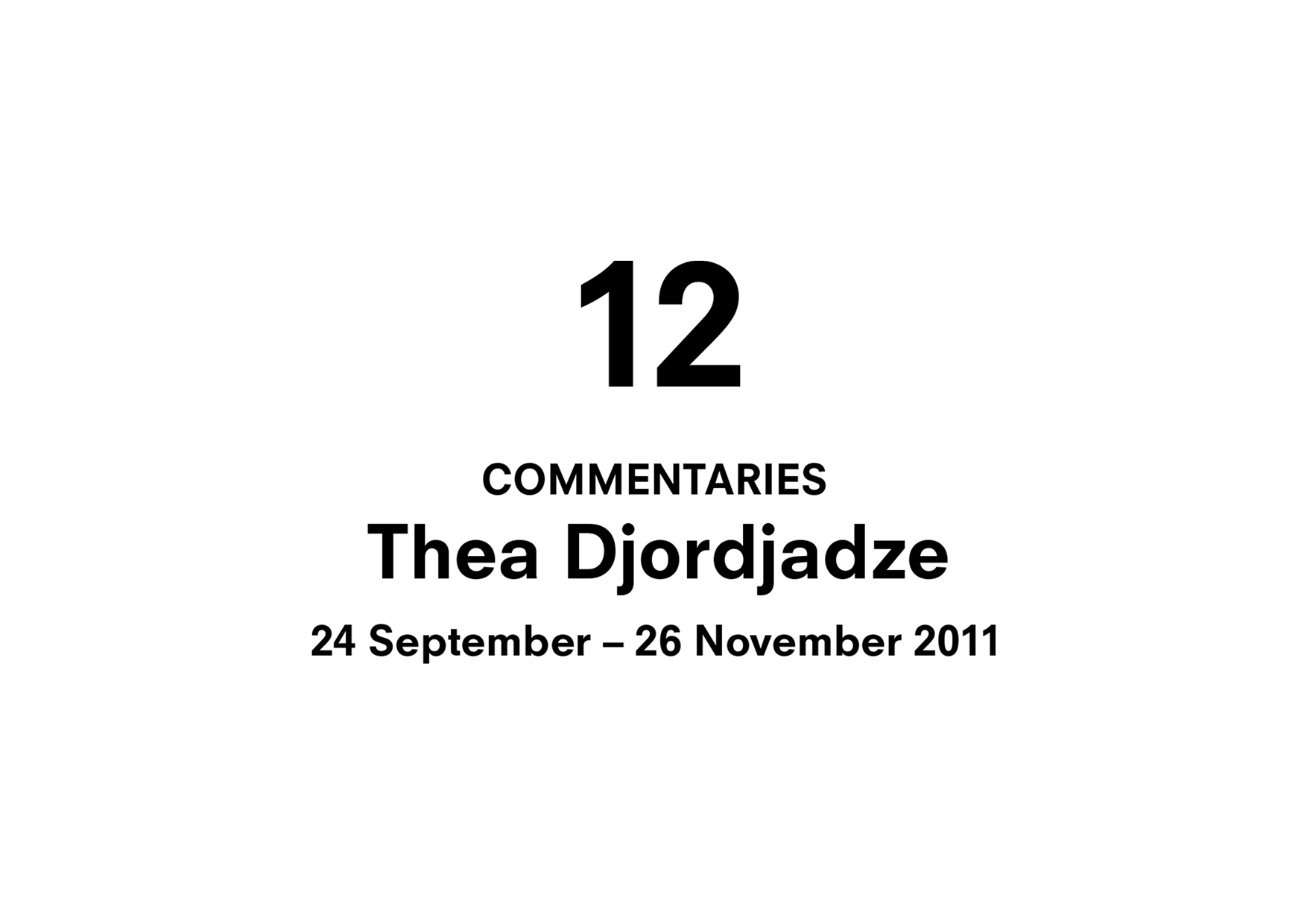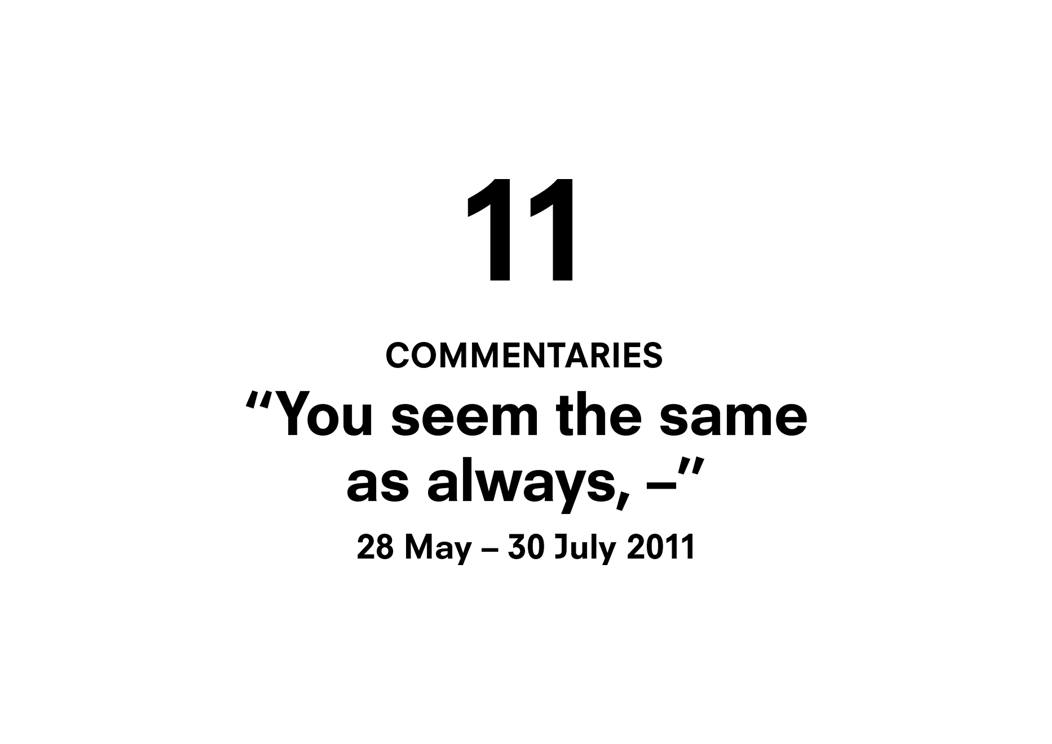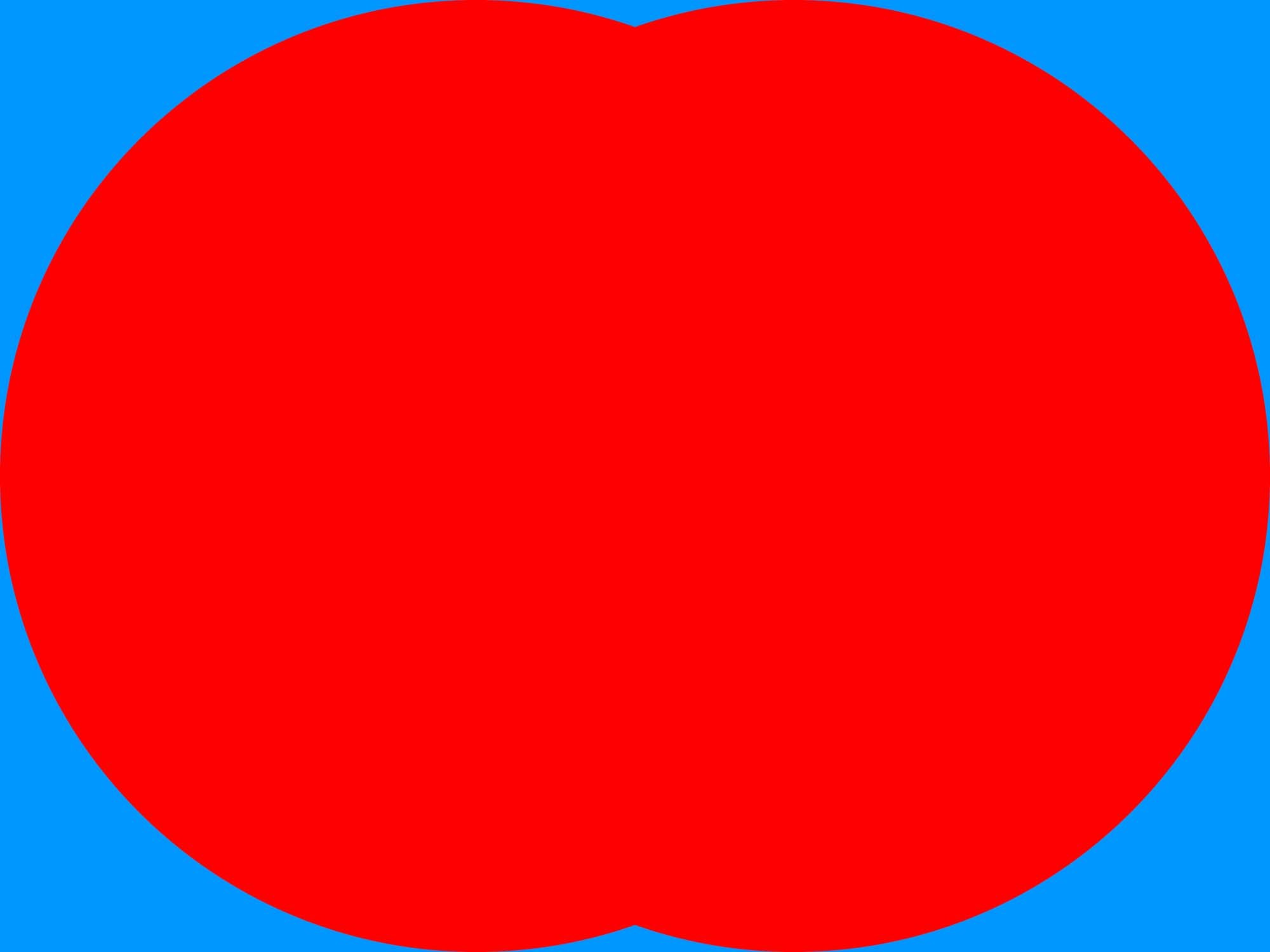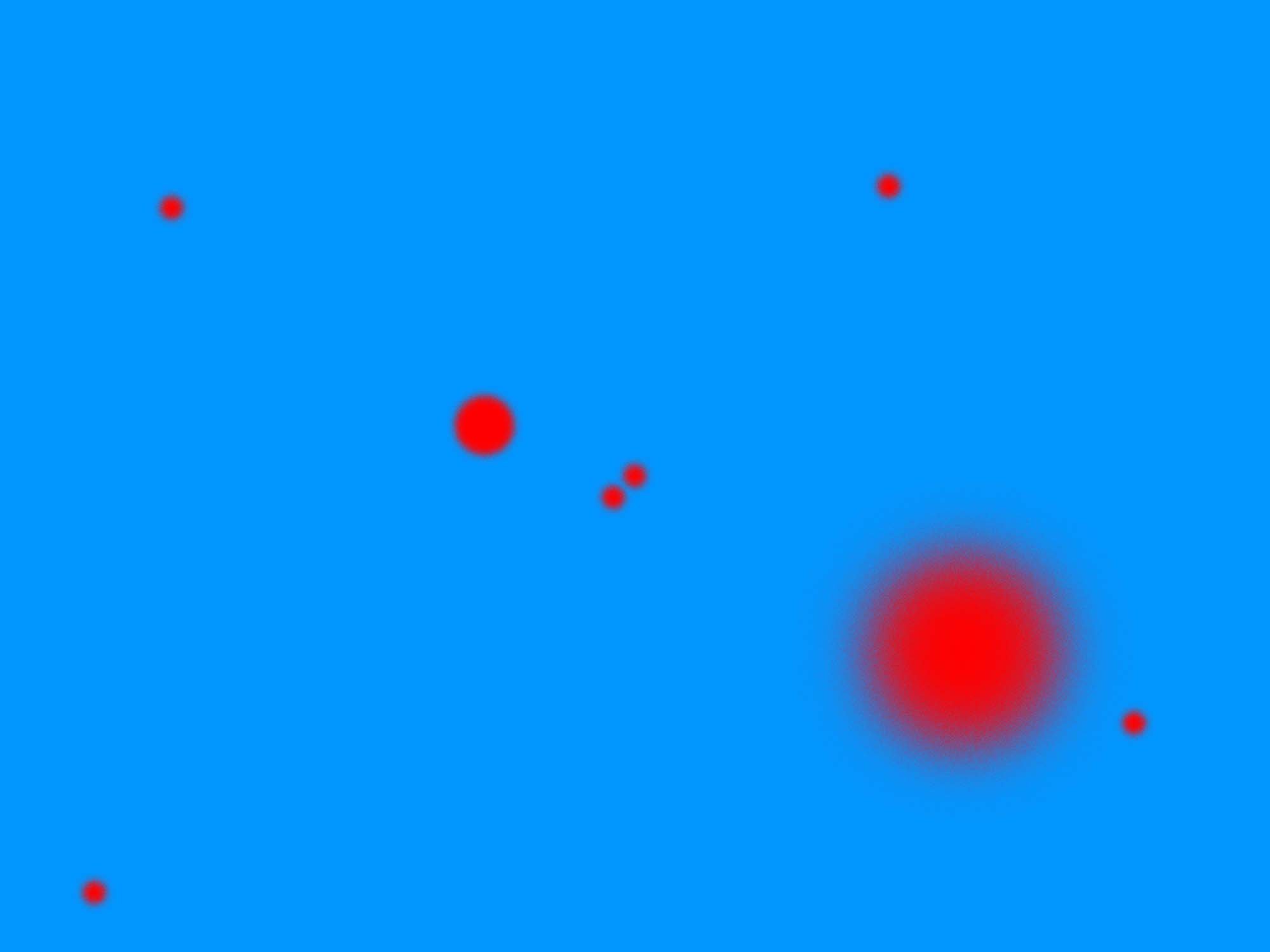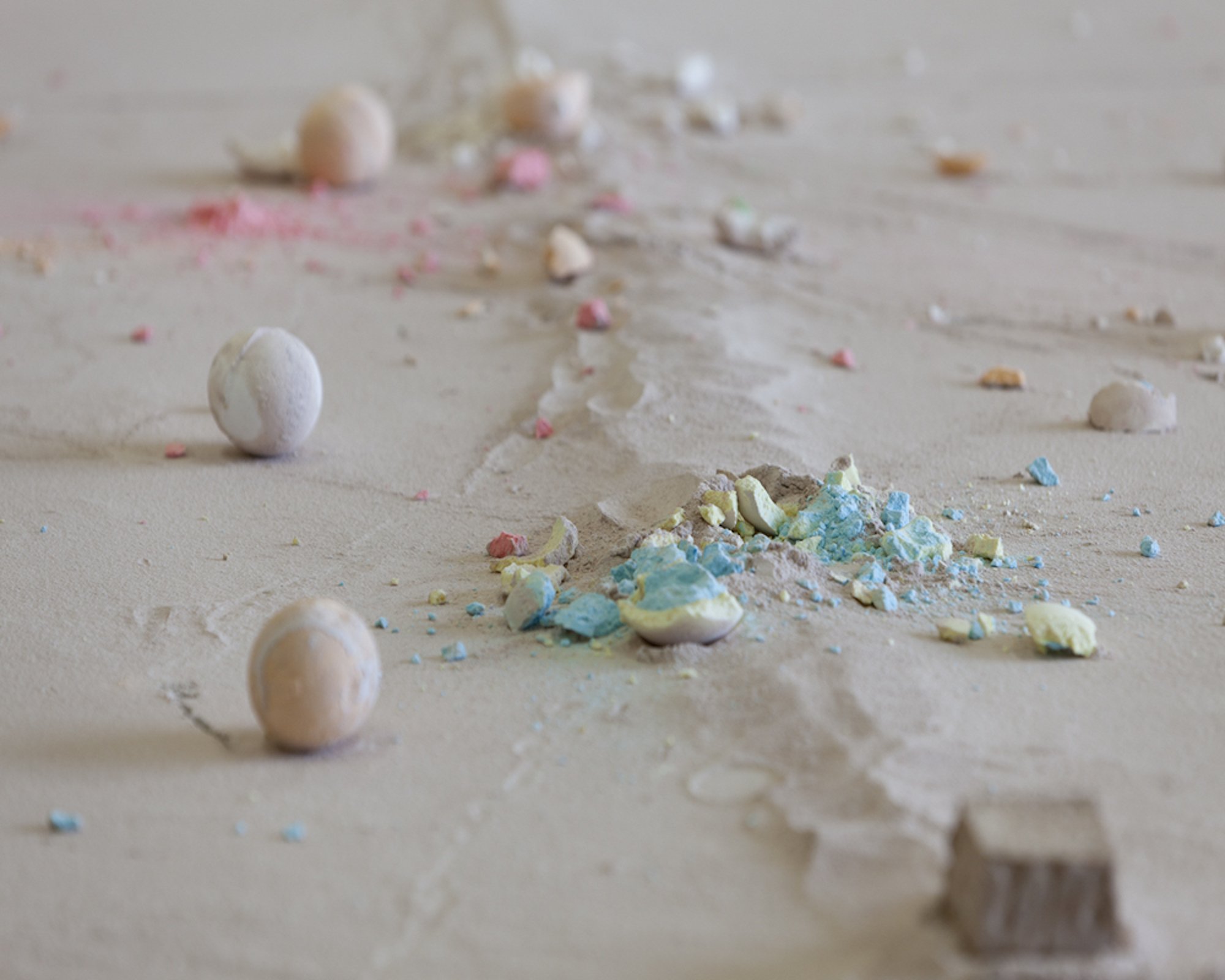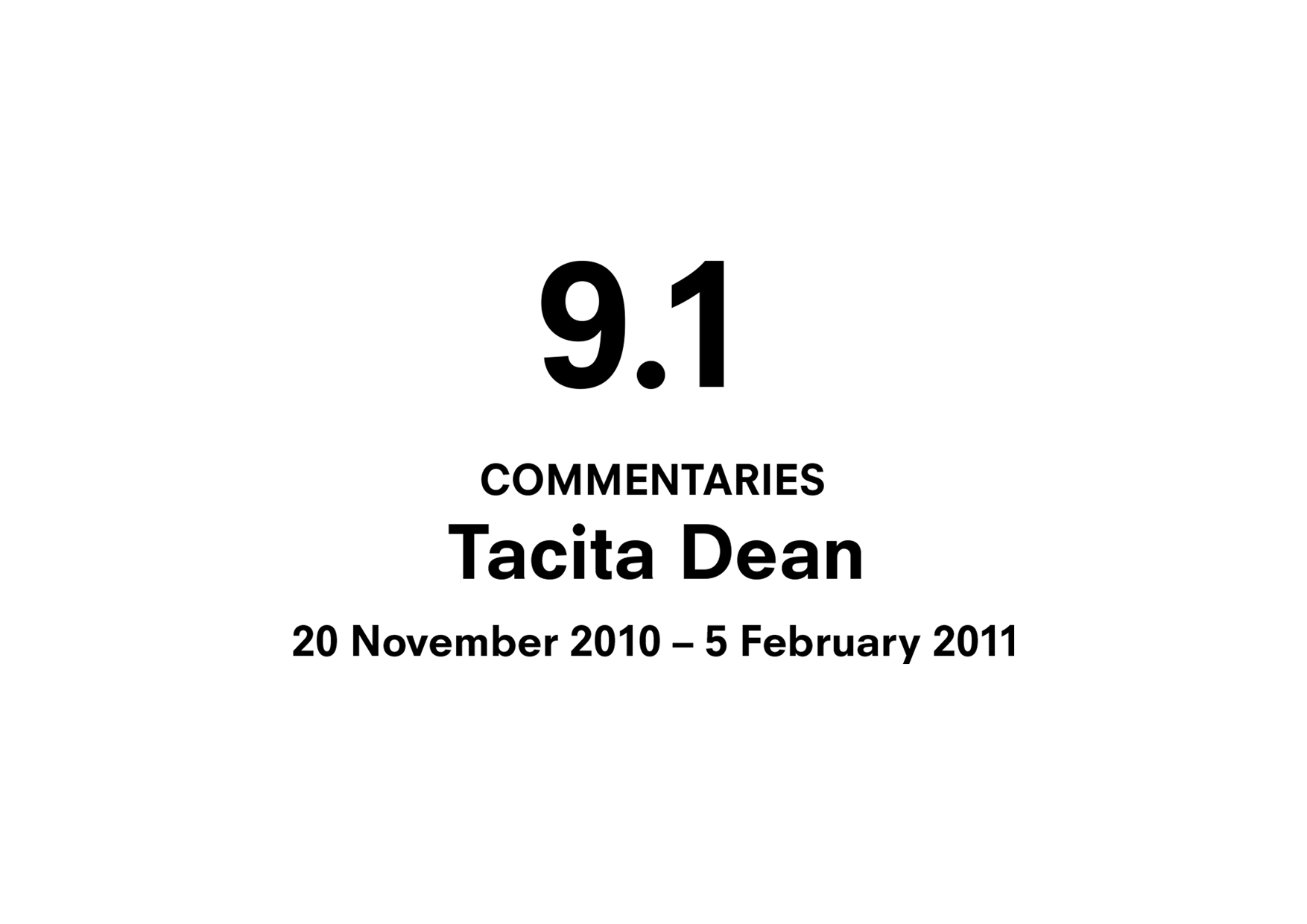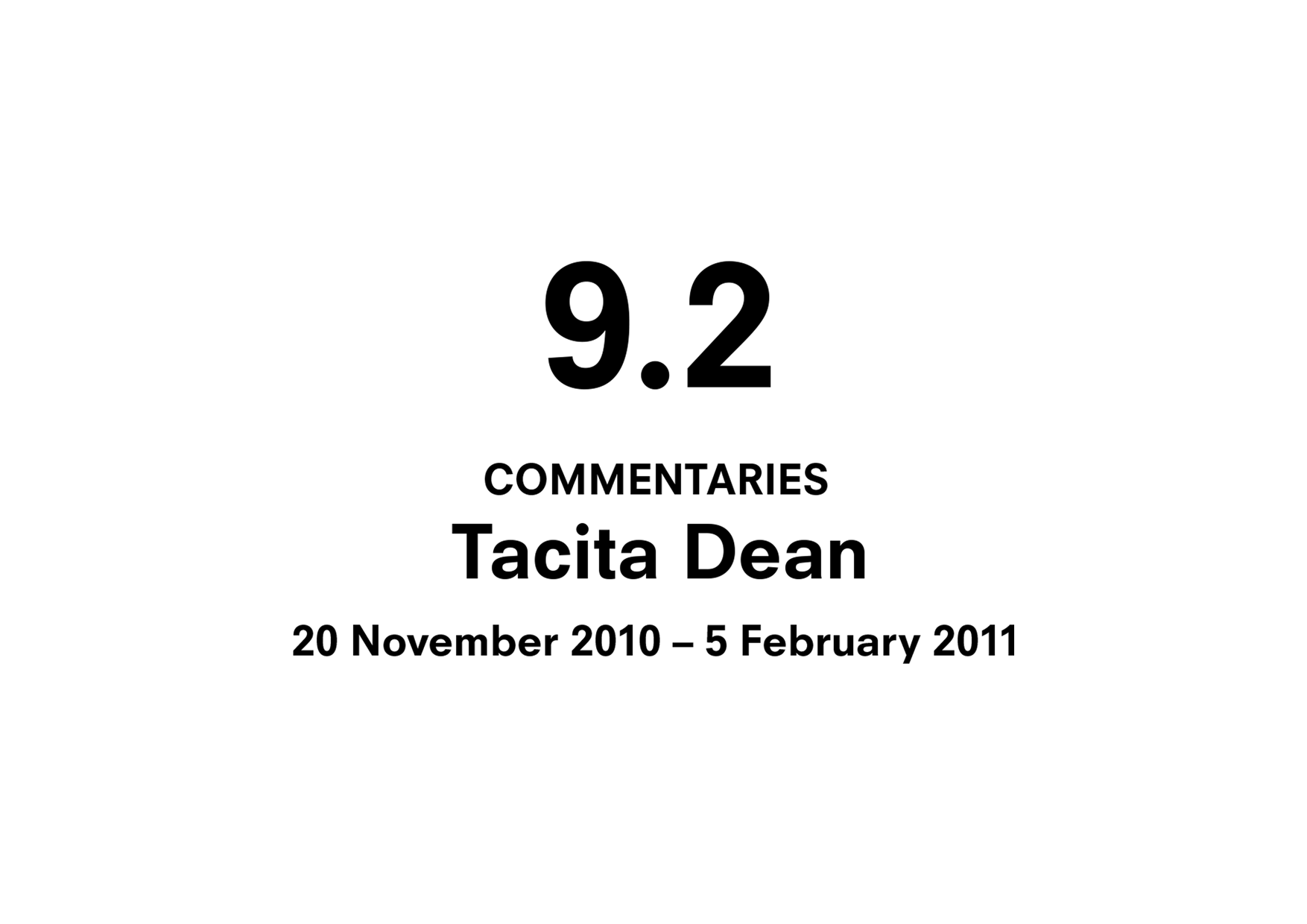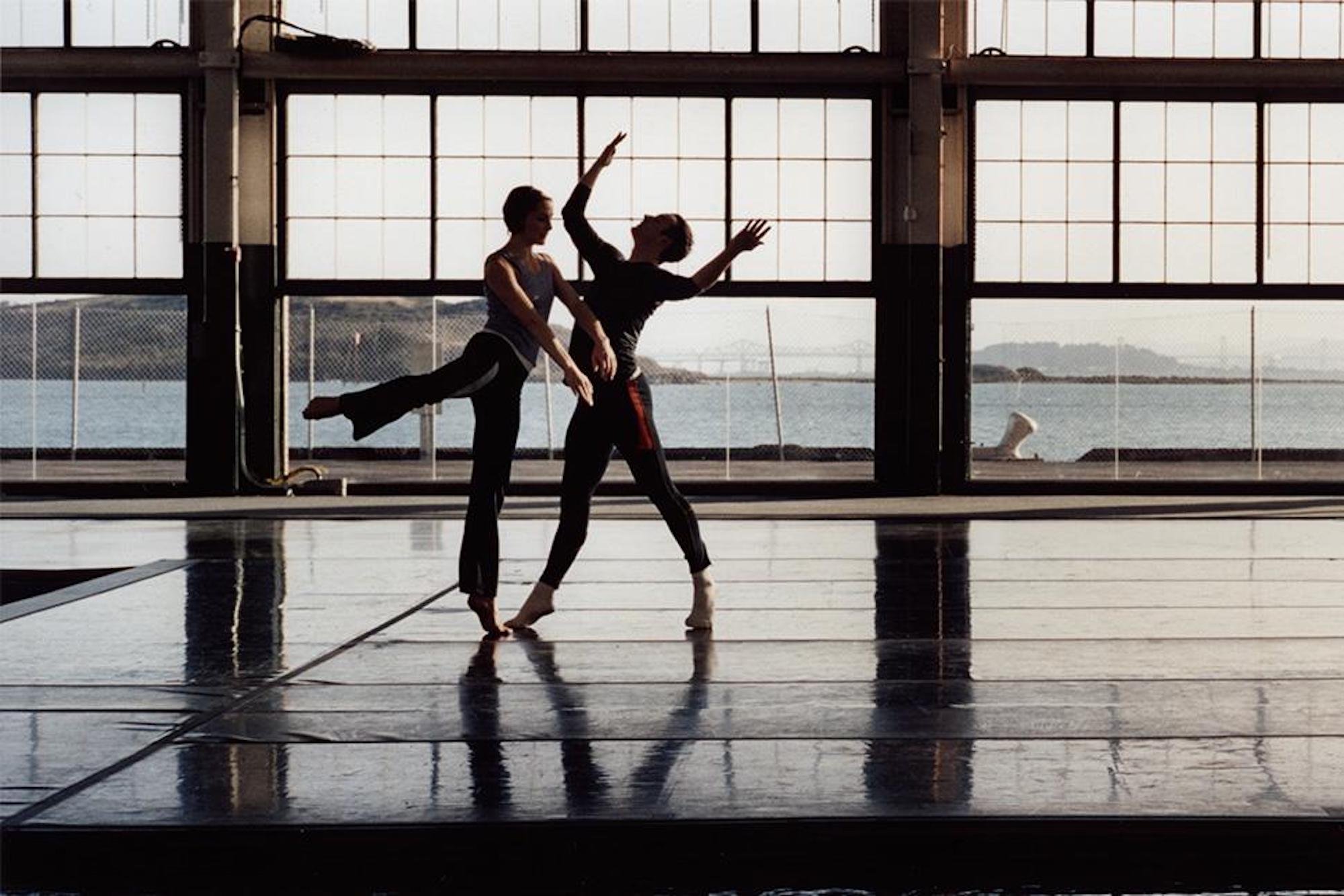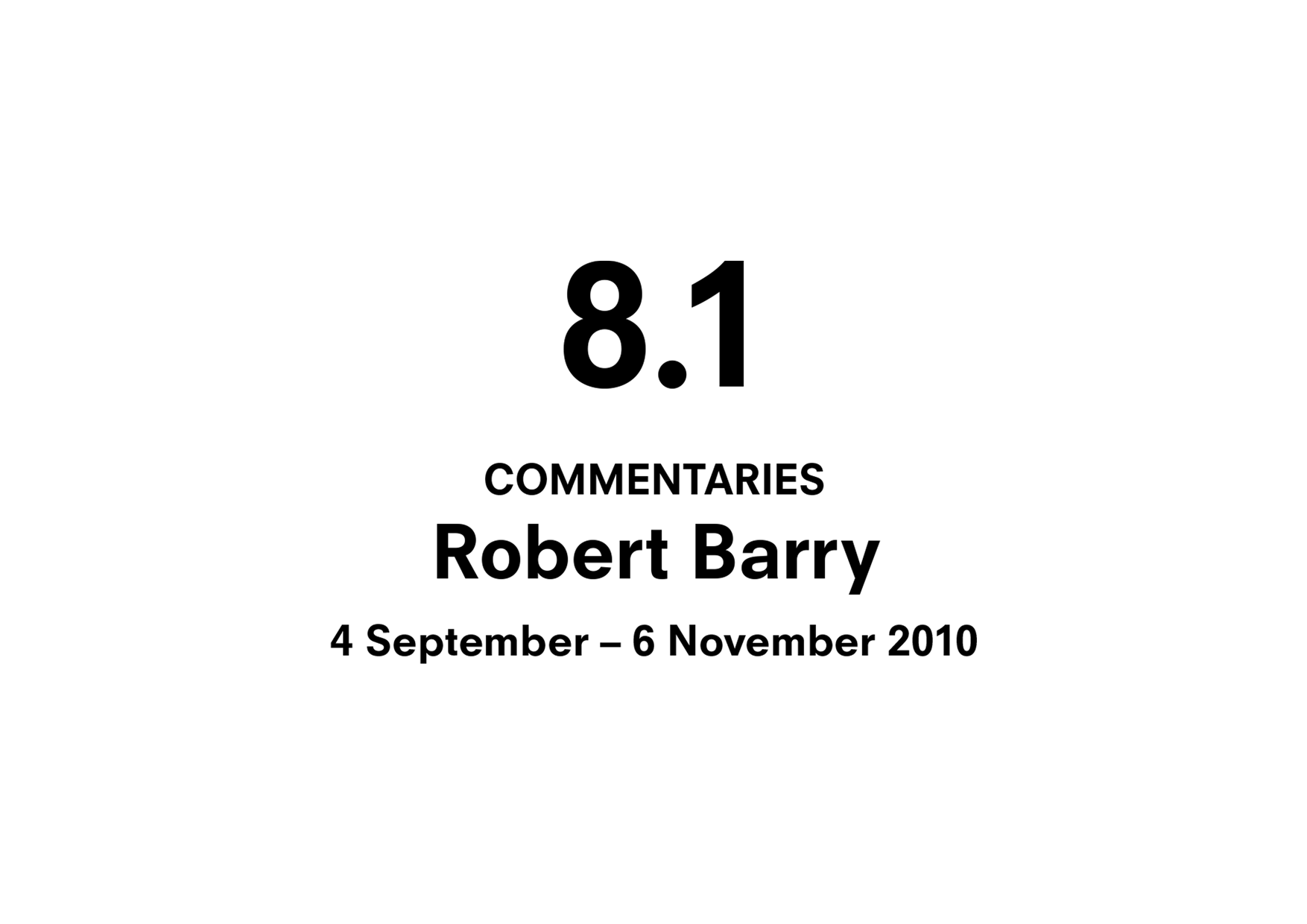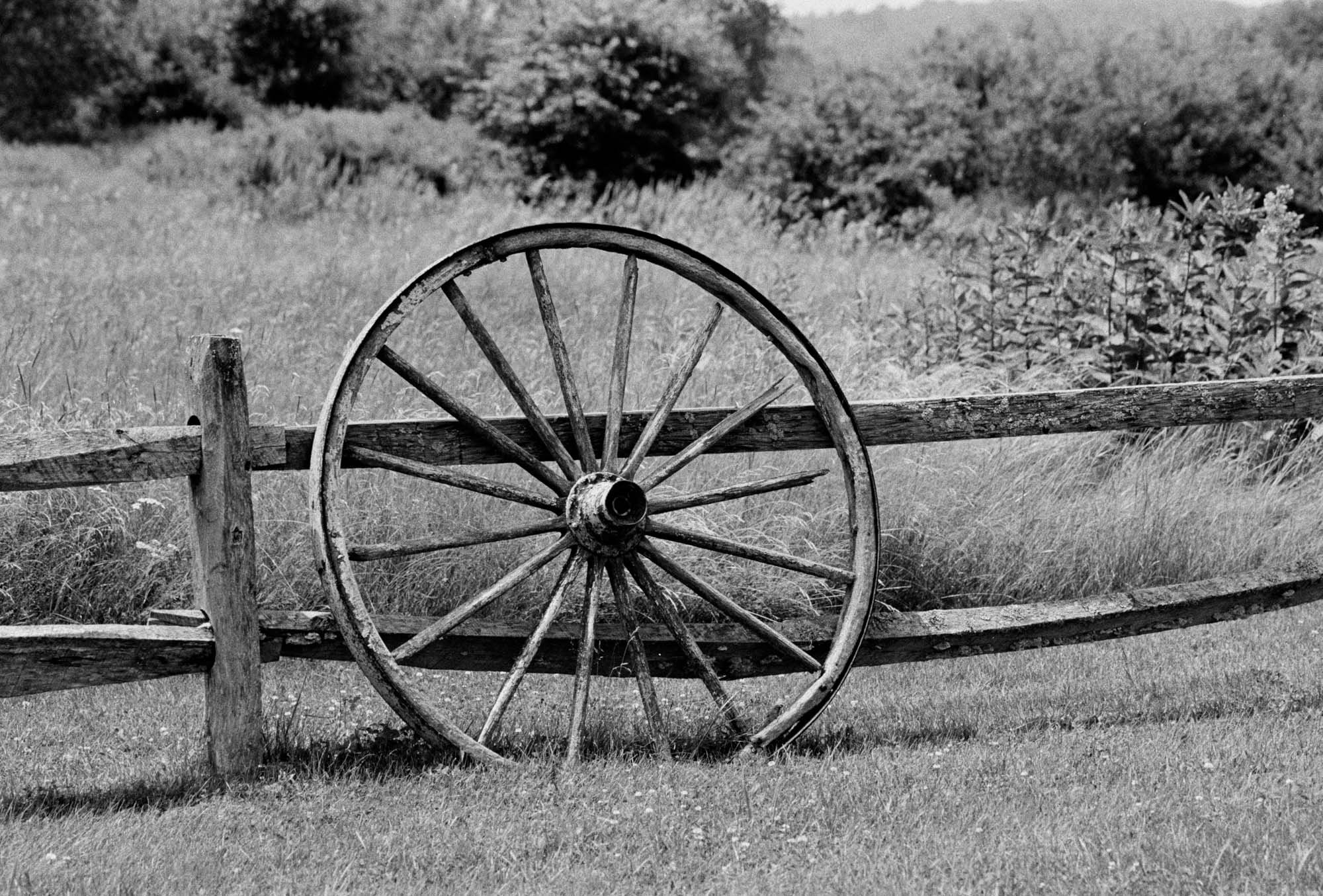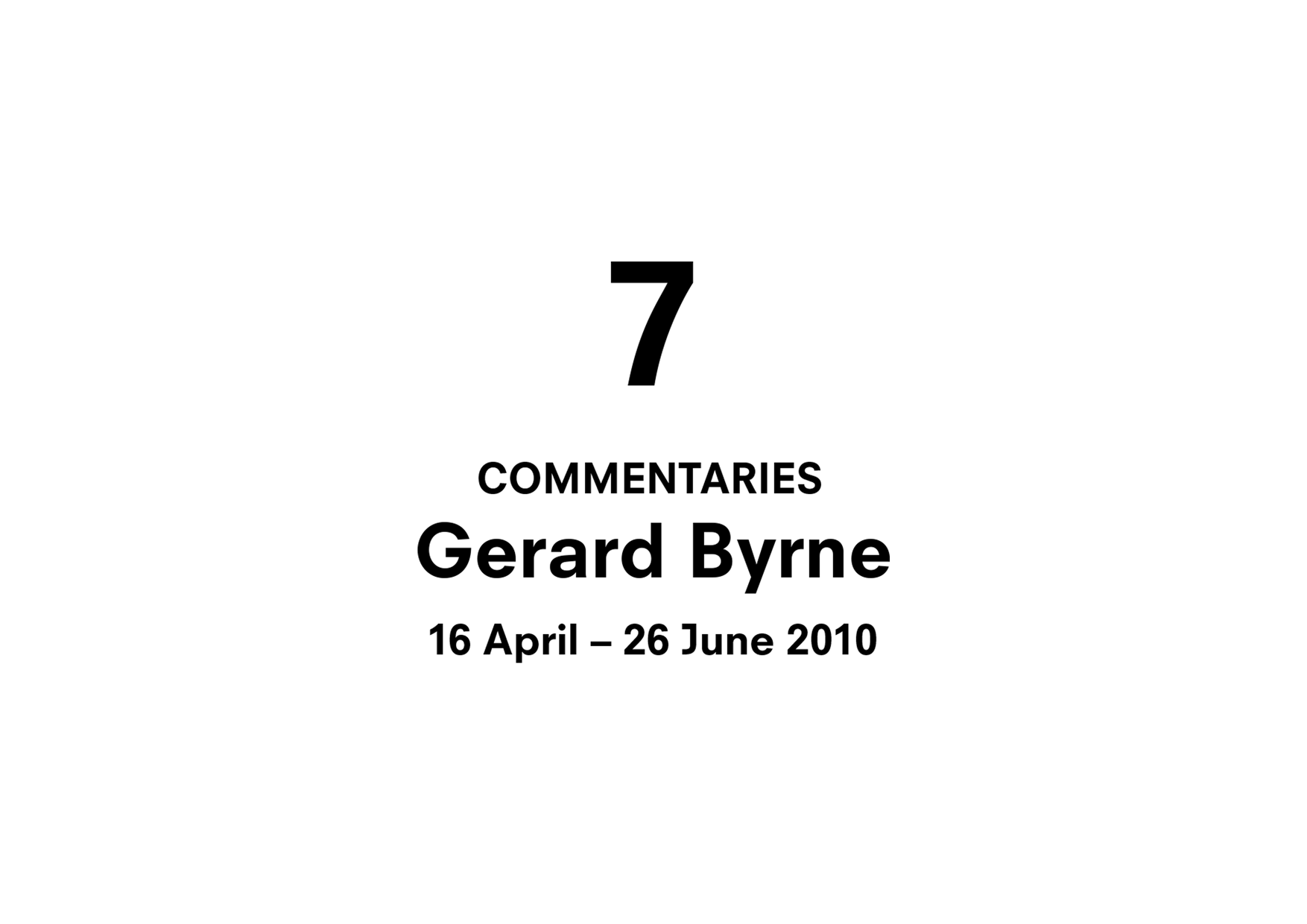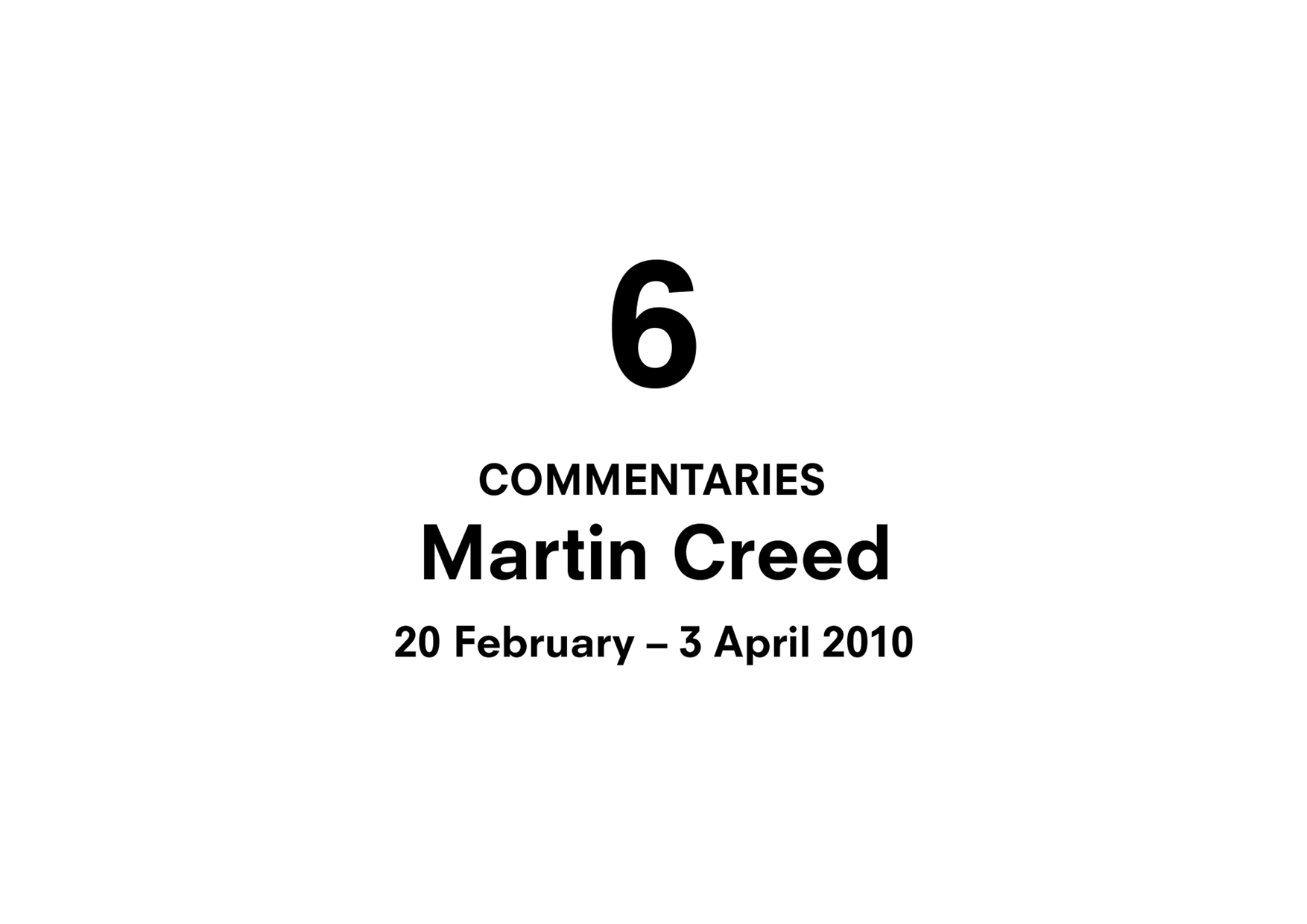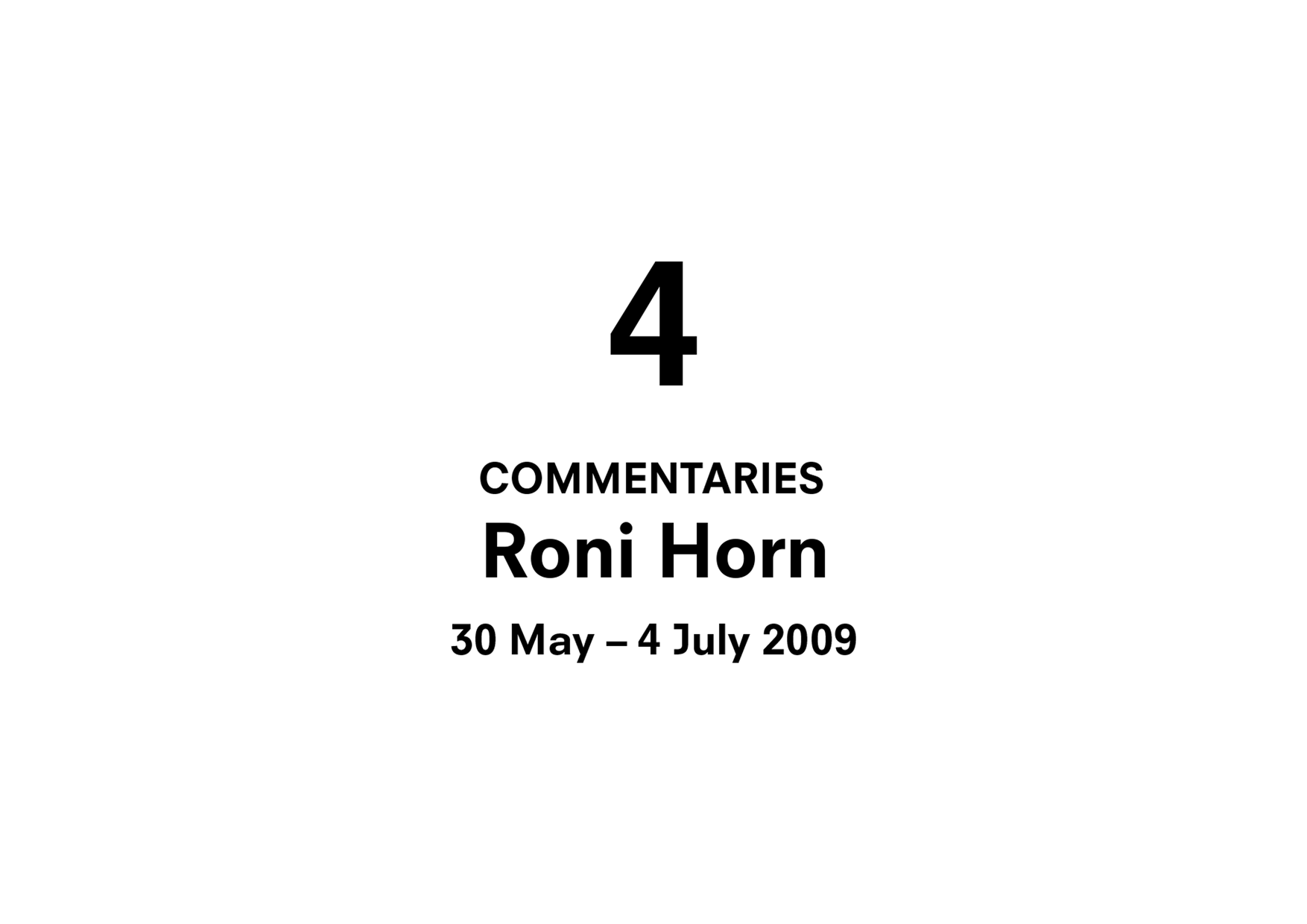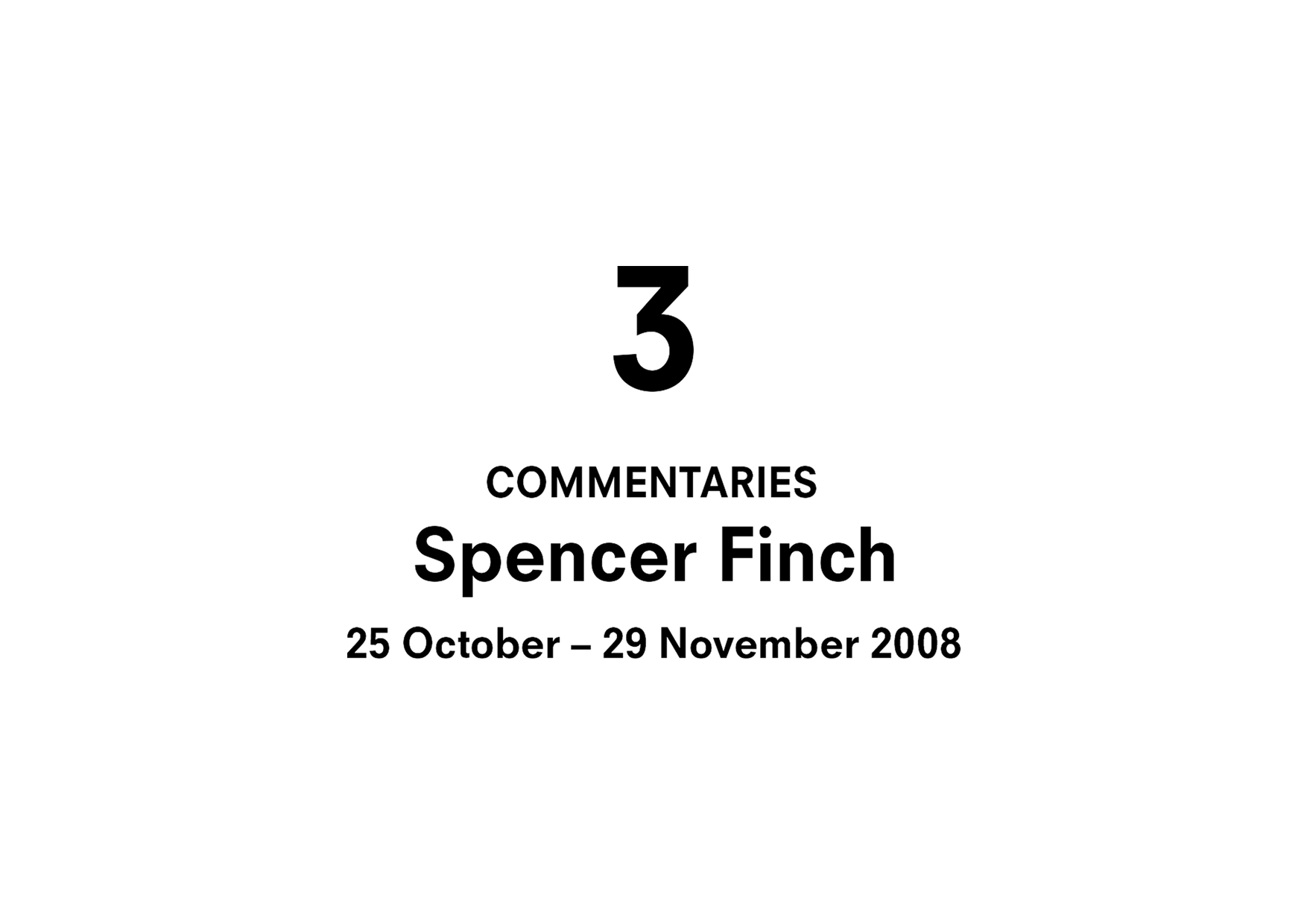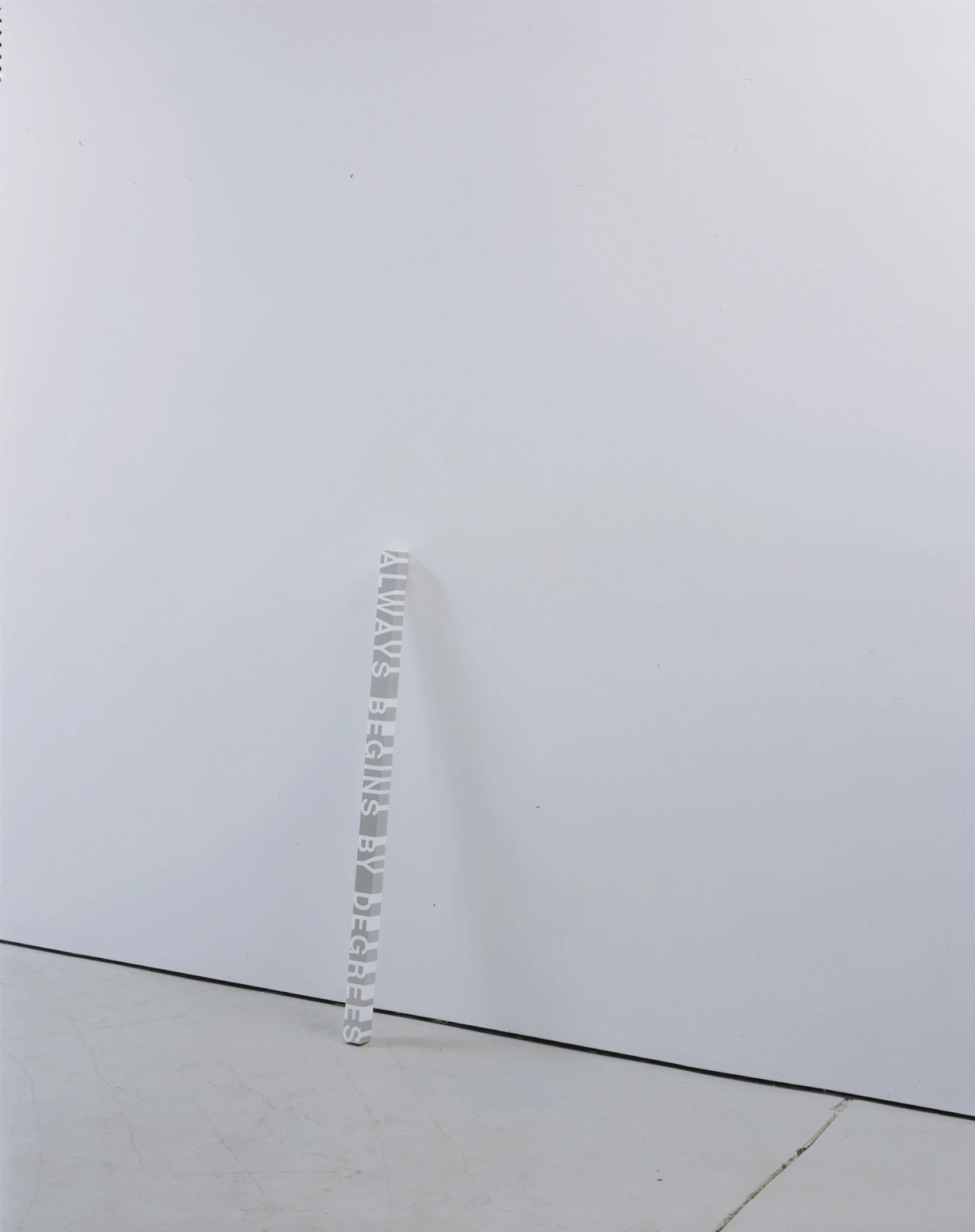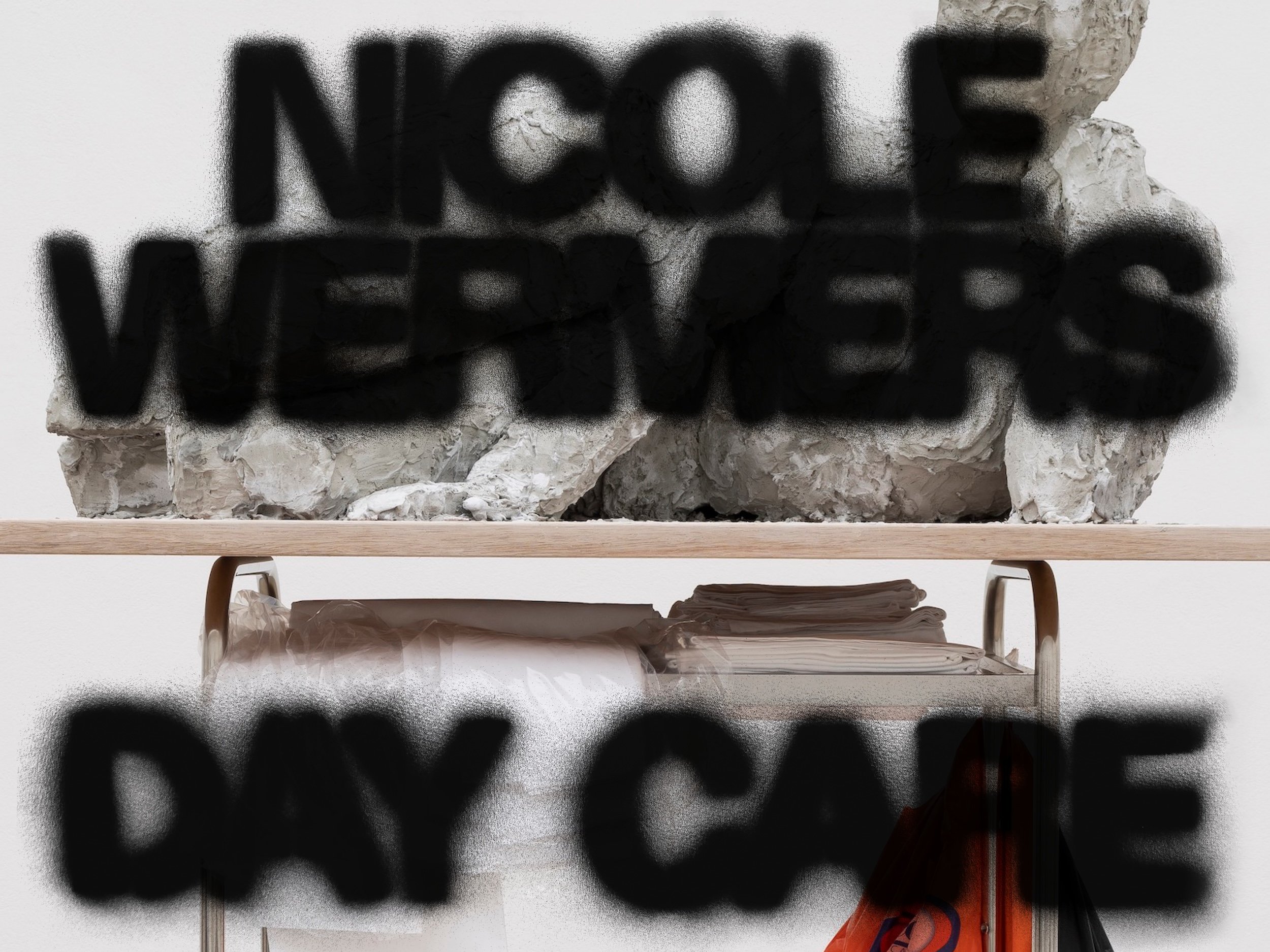
Nicole Wermers – ‘Day Care’
Nicole Wermers, ‘ Reclining Female #3’ (2022) (detail). Courtesy the artist; Herald St, London; Tanya Bonakdar Gallery, New York and Los Angeles; Jessica Silverman, San Francisco; and Produzentengalerie Hamburg. Photo: Gunnar Meier. Design: Tom Joyes.
Nicole Wermers’ ‘Day Care’ is an exhibition of new and recent sculptures set against the backdrop of Glasgow’s urban landscape. The works on show intertwine visions of women’s bodies at work or rest with the economics and politics of (urban) space, and the visibility and value of high art with the invisibility of care and maintenance work.
‘Day Care’ includes two newly commissioned sculptures, alongside sculptural interventions in the corporate office space of The Common Guild’s temporary premises on the seventh floor of 60 York Street. The exhibition marks Wermers’ most substantial institutional UK presentation to date.
Nicole Wermers, ‘Day Care’ (2024). Installation view, The Common Guild at 60 York Street, Glasgow. Courtesy the artist; Herald St, London; Tanya Bonakdar Gallery, New York and Los Angeles; Jessica Silverman, San Francisco; and Produzentengalerie Hamburg. Photo: Ruth Clark.
‘Day Care’ presents work from the artist’s latest series, ‘Reclining Females’ (2022–2024). These sculptures bring together the familiar, art historical trope of the reclining nude, with readymade commercial products and the banal apparatus of the service industry to critically engage with the social, psychological and economic conditions of urban space and architecture.
Wermers’ lounging female nudes appear larger than life-size and are hand-formed in plaster over styrofoam. Striking poses that evoke Henry Moore’s reclining bronze women, these voluptuous figures have the rough-hewn appearance of largescale sculptural studies. Each of the female figures adopts a different posture of repose, heads angled to meet the viewer’s gaze from an elevated position. They balance on wheeled maintenance carts filled with mops, freshly pressed linen, plastic bottles and chemical products for cleaning and disinfecting spaces such as hotels and corporate environments: spaces like the temporary gallery where they will be displayed.
The formal juxtaposition of the figures and carts create tension between ideas of labour and leisure, undermining gestures of decadence and desire routinely expressed by (male) renditions of the female nude. Instead, the figures imply exhausted, overworked bodies: low-waged and typically invisible women’s labour that sustains commercial and business environments. At the same time their size and elevated position asserts their defiant presence and independent agency. In the particular white-collar context of The Common Guild’s temporary space, the artworks generate discourse on corporate structures and overlooked labour hierarchies.
Nicole Wermers, Reclining Female #6 (2024). Courtesy the artist; Herald St, London; Tanya Bonakdar Gallery, New York and Los Angeles; Jessica Silverman, San Francisco; and Produzentengalerie Hamburg. Photo: Ruth Clark.
About the artist /
Nicole Wermers (born 1971 in Emsdetten, Germany) lives and works in London. She studied at Hochschule für bildende Künste, Hamburg from 1991–97 and received an MFA from Central Saint Martins College of Art and Design in 1999. Since 2017 she has been a professor of sculpture at Akademie der Bildenden Künste, Munich. Wermers was short-listed for the Turner Prize in 2015.
Selected solo exhibitions include: ‘Reclining Fanmail’, Kunsthaus Glarus; ‘P4aM2aRF!’, Herald St, London; ‘Emscher Folly’, Urbane Künste Ruhr/ Emscher Kunstweg, Duisburg permanent public art commission, (all 2022); ‘Earring for Cambridge’ public commission for Cambridge Judge Business School, Cambridge University; ‘Women between Buildings’, Kunstverein Hamburg, (both 2018); ‘Grundstück’, Jessica Silverman Gallery, San Francisco, (2017); ‘Givers & Takers’ Tanya Bonakdar Gallery, New York (2016); ‘Infrastruktur’, Herald St, London (2015); ‘The London Shape’ Stanley Picker Gallery, Kingston-upon-Thames (2014); ‘Manners’, site-specific commission for Tate Britain (2013). ‘Hotel Biron‘, Kunstverein für die Rheinlande und Westfalen, Düsseldorf; ’Masse und Auflösung’, Aspen Art Museum, Colorado (2007), ‘Earring‘ public sculpture project, Camden Arts Centre, London; and ’Chemie’, Secession, Vienna (2004-2005).
Selected group exhibitions include: ‘13 Women: Variation III’, Orange County Museum of Art, Costa Mesa, California; ‘Phantom Sculpture’, Mead Gallery, Warwick Arts Centre, Coventry; ‘Your Home Is Where You’re Happy’, Haus Mödrath, Kerpen; ‘Homo Ludens / About the Game of Art’, Woods Art Institute, Hamburg; ‘ Concerning Nature‘, Tanya Bonakdar Gallery, New York; ‘Femmenology‘, Jessica Silverman Gallery, San Francisco (all 2023). ‘Identität nicht nachgewiesen – Neuerwerbungen der Sammlung des Bundes’, Bundeskunsthalle Bonn; ‘SSSSSSSSSCULPTURESQUE’, Kiang Malingue Gallery, Hong Kong; ‘German Caviar’, Kunstmuseum Bonn; ‘On Equal Terms’, Uferhallen, Berlin; ‘By A Thread’, Tenter Ground, London (all 2022).
Her work was also included in ‘Magical Soup‘, Hamburger Bahnhof, Berlin; ‘More More More‘, Tank Shanghai, Shanghai; ‘Grace before Jones‘, Nottingham Contemporary, Nottingham; ‘Museum For Preventive Imagination‘, MACRO, Rome; ‘Design by Time‘, Museum of Craft and Design, San Francisco (all 2020); ‘Crack up Crack Down‘, 33rd Biennial of Graphic Arts Ljubljana, Center for Contemporary Art Ujazdowski Castle, Warsaw; ‘Design by Time‘, Knoxville Museum of Art, Knoxville, Tennessee, College of Wooster Art Museum, Wooster, Ohio; ‘Tainted Love (club edit)‘, Villa Arson, Nice; ‘Das Ruhr Ding‘, different venues in Dortmund, Oberhausen and Bochum, ‘Mein Blick‘, Hamburger Kunsthalle, Hamburg (all 2019); ‘ANTI‘, 6th Athens Biennale, Athens; ‘You Remind Me of Someone‘, FRAC Lorraine, Metz; ‘Die Zelle‘, Kunsthalle Bern, Bern; ‘Dime Store Alchemy‘, Flag Art Foundation, New York (all 2018). ‘Elevation 1049‘, different venues, Gstaad; ‘Quiz 2’, MUDAM Luxembourg; ‘Home Is No Place‘, German Embassy, London; ‘Tainted Love (Where Did Our Love Go)‘, Le Confort Moderne, Poitiers; ‘In Awe’, Kunsthalle Exnergasse, Vienna; ‘You Remind Me of Someone‘, Künstlerhaus Bremen, Bremen; ‘An Idea of Boundary‘, S.F. Arts Comission Gallery, San Francisco; ‘Display Show’, Stroom den Haag; ‘Intensive Nesting‘, Division Gallery, Montreal (all 2017); Turner Prize, Tramway, Glasgow; ‘Function Follows Vision, Vision Follows Reality’, Kunsthalle Wien Karlsplatz, Vienna; ‘Überschönheit’, Salzburger Kunstverein, Salzburg (all 2015); ‘A Singular Form’, Secession, Vienna (2014); ‘Villa Massimo Stipendiaten’, Martin-Gropius Bau, Berlin (2013); ‘Crazy House’, Museum für Moderne Kunst in Frankfurt (2012); ‘The New Décor’, Hayward Gallery, London (2010-2011); ‘A wavy line is drawn across the middle of the original plans’, Kölnischer Kunstverein, Cologne (2012); ‘Weltempfänger’, Galerie der Gegenwart/ Hamburger Kunsthalle, Hamburg (2007); ‘Tate Triennale’, Tate Britain (2006).
Further Info
The exhibition is supported by The Elephant Trust.
With thanks to Sam Talbot PR and Herald St, London.
Additional Links
‘Nicole Wermers Takes Us To The Cleaners’ review by Phin Jennings, Frieze, 25 March 2024.
Nicole Wermers ‘Day Care’ reviewed by Rose Higham-Stainton, Flash Art, 18 March 2024.
‘Invisible Labour’, Nicole Wermers interviewed by Ellen Mara De Wachter, Art Monthly, March 2024.
Interview with Nicole Wermers with Melanie Ohnemus, Kunsthaus Glarus, 2022 (German & English).
Details
‘Day Care’ took place at 60 York Street Glasgow, G2 8JX, The Common Guild’s temporary premises.
Exhibition Guide
Thanks
‘Day Care’ was supported by The Elephant Trust.
With thanks to Sam Talbot PR and Herald St, London.
Related
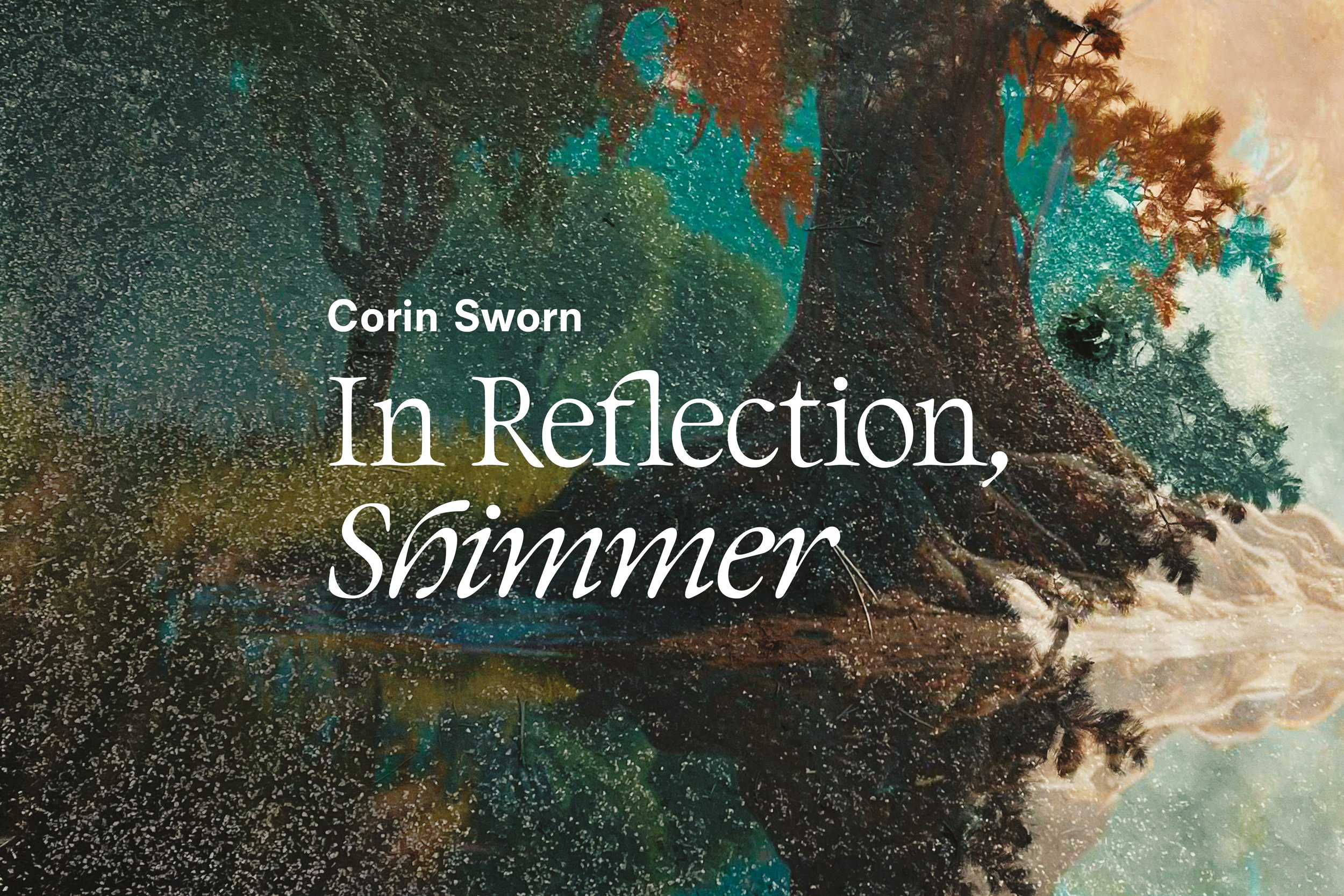
Corin Sworn – ‘In Reflection, Shimmer’
Design: Maeve Redmond
‘In Reflection, Shimmer’ is the final instalment of Corin Sworn’s project ‘Moving in Relation’, a series of events exploring social relations with ‘smart’ technologies: AI-enabled, consumer-grade products that attempt to learn and produce data from interactions with humans.
Corin Sworn,‘Where the Deciduous are Leafed in Winter’. Installation view, The Common Guild, 2023. Photo: Ruth Clark.
‘In Reflection, Shimmer’ is an installation comprising video, atmospheric sound, vocal audio and sculptural collage. Both sound and image are dispersed across the exhibition space, creating a broad sensorial address. The video, ‘A Fuzzy Set’ (2023) presents a history of motion capture that aligns organic movement, such as gesture, to machinic ordering systems. Dancers are shown, testing the functional limits of video in AI enabled CCTV security systems that identify potential ‘life' through movement. Inventions by Charles Rees Wilson, Frank and Lillian Gilbreth, and Marie Van Brittan Brown are presented as precursors of contemporary motion capture, in each case this moves the devices away from the inventor’s initial intention. A Fuzzy Set’ examines divergent forms of motion capture, challenging 20th century notions of efficiency as ‘the one best way’.
Each instalment of ‘Moving in Relation’ has sought new ways of engaging and understanding technological systems and algorithmic thought. Over the course of an extended period of research Sworn brought together various collaborators in movement, sound, poetry and academia to establish ways of approaching and living with networked technology and machine learning devices. Attempting to apprehend these now ubiquitous devices on human terms, Sworn explores AI behaviours in emotive and playful ways, observing our intimate and attentive relationships with automatic tools.
Corin Sworn,‘A Fuzzy Set’ (video). Installation View, The Common Guild, 2023. Photo: Ruth Clark.
'Moving in Relation' began in 2021 with 'eco-co-location', a live one-off performance exploring encounters with algorithmic thought that took place in a vacant office space within a suburban business park. ‘This Harmonic Chamber’, Sworn’s second performance – an incomplete, future film taking shape as a performance lecture with experimental sound – was presented in 2022 in a 19th century loom shed.
Further encounters in the series have included an interview with political philosopher Louise Amoore, and ‘The Virtual Boulevard’ – a gathering of poets from Buenos Aires, Argentina, and Glasgow to work across geographies and alongside AI translation systems, supported by online tools for communication. Collaborators working with Sworn have included Luke Fowler, Jer Reid, Claricia Parinussa, Cecelia Pavon, SPAM Zine & Press, George Hampton Wale, and Guy Veal.
Further Info
Project Details
‘In Reflection, Shimmer’ to place at 60 York Street Glasgow, G2 8JX, The Common Guild’s temporary premises.
Credits
Movement: Molly Danter; Caitlin Taylor and Isabel Umali
Dramaturgy: Jeremy Reid
Camera: Corin Sworn and Ambroise Leclerc
Sound Design: Luke Fowler
Sound: Jeremy Reid; Luke Fowler; Simon Weins; Feronia Wennborg; Duncan Marquiss; Phil Julian and Darren Hayman
Consultation: Timothy Lem-Smith and Louise Amoore
Thanks: Grace Jackson; Becheala Walker; Neil Grey; Bridget Fowler; Chloe Reith; Katrina Brown; Victoria Brooks; Ian Hameli; Eric Brucket; The Common Guild installation team, Jonny Lyons and Dan Griffiths.
Related

Janice Kerbel – Notes from Sink / Routine for 24 Women
Janice Kerbel, 'Notes from Sink / Routine for 24 Women' (2018).
Following the live performance of Janice Kerbel's major new artwork 'Sink’, commissioned by The Common Guild as part of Festival 2018, we are delighted to present an extension of the project with a series of double-sided prints that further explore the language of synchronisation.
Janice Kerbel, 'Notes from Sink / Routine for 24 Women' (2018). Photo: Ruth Clark.
'Sink' is a synchronised swimming routine for 24 women, which was first presented on 3 August 2018 in the distinctive surroundings of the Western Baths, a Victorian swimming pool in Glasgow. Using synchronisation to explore the tensions between body and language, movement and stillness, the individual and the collective, the prints act as a score for and record of a performance. Kerbel treats paper as the surface of water, notating moves and arrangements by hand with use of rubber stamps.
Kerbel regularly works with printed form to invoke real and suggested action. Text-based works such as 'Fight' (2018), a series of silkscreen prints, score an unarmed fight for a group of individuals, while 'Remarkable' (2007), a series of silkscreen prints taking 19th-century fairground posters as its inspiration, heralds the arrival of a series of imagined characters. These printed works both document and instruct action that may or may not have taken place, blurring the distinction between fact and fiction, description and premonition.
Related
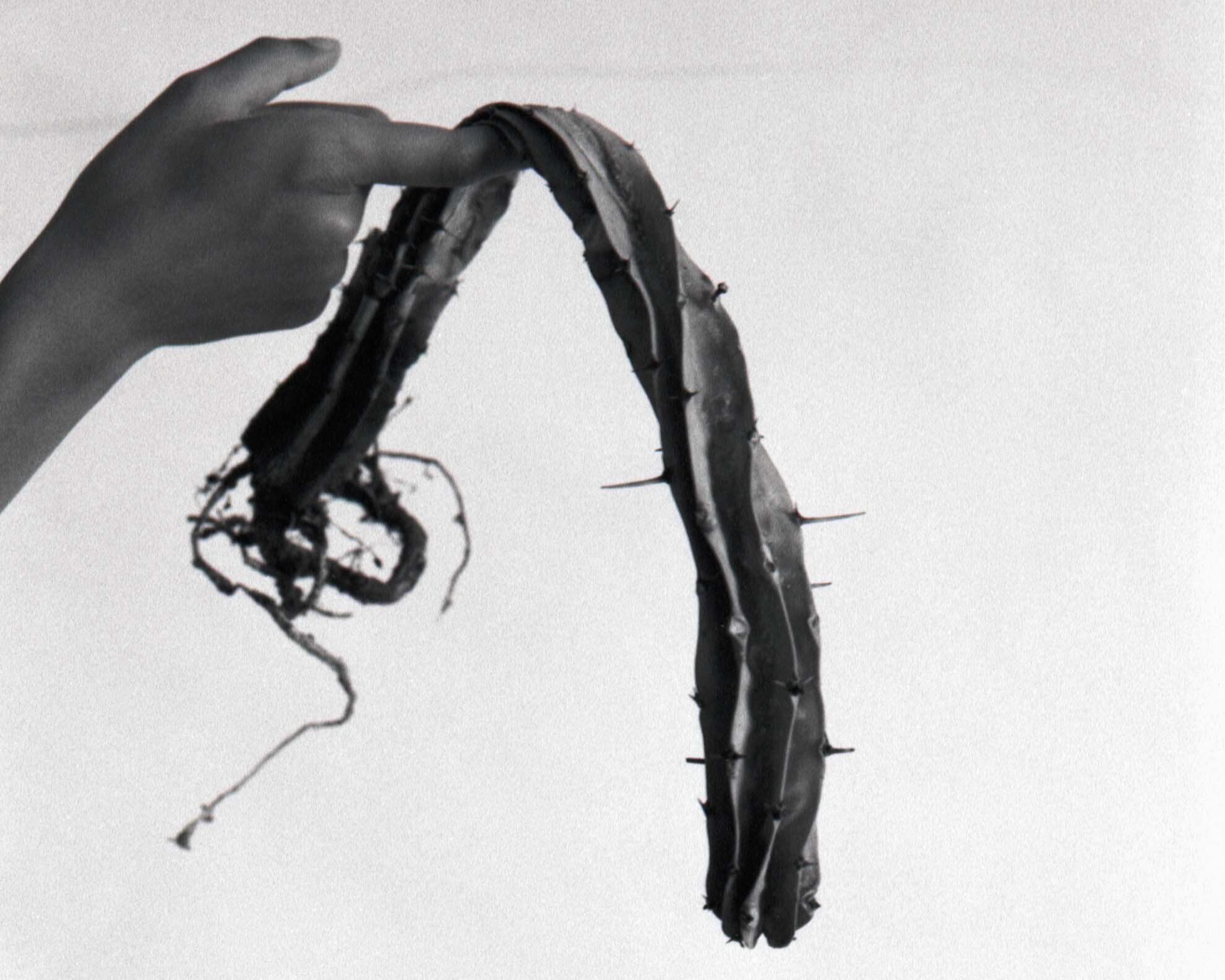
Katinka Bock – 'Radio Piombino'
Katinka Bock, ‘Dead Cactus’ (2016). Courtesy Galerie Jocelyn Wolff and Galerie Greta Meert.
‘Radio Piombino’ is an exhibition of new, sculptural works by artist Katinka Bock. Bock works with a range of materials, including natural substances, such as copper, lead and clay, and found or given forms. Her materials are often altered through natural processes and the effects of time – heat, moisture or sunlight, for example – such that the potential of becoming or disintegrating seems constantly present. Her sculptures appear as the result of events, at times seeming precarious and at others immutable.
Bock often takes the peculiarities or context of a given space as a starting point for her work, and her project for Glasgow taps into the nature of 21 Woodlands Terrace as a domestic building and the history of Glasgow as a major port, a place of exchange and transaction. Prior to the exhibition several parts of these works inhabited the city of Glasgow and its environs. Copper oxidised; fabric was exposed to the elements; ceramic forms ‘lived’ with city-centre residents and businesses, or were secreted in the woods above Loch Lomond. Bock gathers these elements in their transformed state, looping the references of geological, industrial, meteorological and personal history into her working materials, seeking to reflect the systems that produced the materials, place and people. 'Radio Piombino’ re-imagines 21 Woodlands Terrace as a landscape of sculptural elements that turn the building into what Bock terms a "poisoned body”.
Katinka Bock, 'Radio Piombino' installation view, The Common Guild, 2018. Photo: Ruth Clark.
Katinka Bock is a Paris-based, German artist. ‘Radio Piombino’ is the first presentation of her work in Scotland and follows her only previous project in the UK, ‘Mesonya’, with Siobhan Davies Dance (London) in 2017.
The exhibition is presented as part of Glasgow International 2018 and follows our previous Glasgow International exhibitions with leading international artists including Gabriel Kuri (2014) and Akram Zaatari (2016) and will be accompanied by a series of related talks and events.
Related

'Slow Objects' - Vanessa Billy, Edith Dekyndt and Erin Shirreff
Vanessa Billy ‘Solid Cloud’(2016) heated and sandblasted bronze (detail). Courtesy of the artist and BolteLang, Zurich.
‘Slow Objects’ is an exhibition that brings together the work of three outstanding artists who each explore the relationship between material and process, time and transformation. The exhibition includes a selection of new and recent works by Vanessa Billy, Edith Dekyndt and Erin Shirreff, artists who share an interest in both natural and pseudo-scientific processes, alchemy and labour. ‘Slow Objects’ includes video, photography, sculpture and installation, exploring the relationship between image, surface and form and the way we perceive and understand objects.
'Slow Objects' installation view, The Common Guild, 2018. Edith Dekyndt 'Slow Object 02' (1997/2016), fabric stretched on frame, bread dough. Vanessa Billy 'Les fonds qui pleurent' (2017), nylon net, bio-resin, dye. Erin Shirreff 'Medardo Rosso, Madame X', (1896/2013), colour video, silent. Photo: Ruth Clark.
Vanessa Billy is known for sculptural works that utilise a wide range of familiar substances including waste materials, residues and discarded objects that suggest human activity and question our relationship with the world around us. Her practice is grounded in the physical qualities of these materials, providing a base from which to explore alchemical processes and cycles of energy and activity.
Residues also feature in the work of Edith Dekyndt. Familiar materials such as salt, sugar, bread, milk, lemons, earth and blood are used in unfamiliar ways, testing substances through a variety of natural processes – including fermentation, absorption, desiccation and decay. Traces of these experimental processes are recorded in the work, which ranges from video and sculpture, to performance and installation.
Erin Shirreff’s work explores the material and temporal qualities of objects and images. Working with photography, video and sculpture, her work blurs the distinction between object and image to explore the process of recognition. Her works suggest the passing or understanding of time and enables what she describes as “a drawn out encounter” with the object.
Vanessa Billy (born 1978, Geneva) lives and works in Zurich. Recent solo exhibitions include ‘Dear Life’, Centre Culturel Suisse, Paris (2017), ‘We Dissolve’, Kunsthalle St. Gallen, Switzerland (2016), 'Sustain, Sustain', Collective Gallery, Edinburgh (2014) and ‘Three times a day’, Kunsthaus Baselland, Muttenz, Switzerland (2011).
Edith Dekyndt (born 1960, Ieper, Belgium) lives and works in Tournai and Berlin. Recent solo exhibitions include ‘Air, rain, pain, wind, sweat, tears, fear, yeast, heat, pleasure, salt, dust, dreams, odors, noises, humidity’, DAAD Gallery, Berlin, Germany (2016), ‘Ombre indigène’, Wiels, Brussels (2016) and ‘Théoreme des Foudres’, Le Consortium, Dijon, France (2015). Dekyndt participated in 'Viva Arte Viva' the 57th International Art Exhibition curated by Christine Macel for La Biennale di Venezia, Italy (2017).
Erin Shirreff (born 1975, Kelowna, British Columbia, Canada) lives and works in New York City. Recent solo exhibitions include ‘Halves and Wholes’, Kunsthalle Basel, Basel, Switzerland (2016), ‘Erin Shirreff’, Institute of Contemporary Art, Boston, Mass. (2015) and ‘Pictures’, Contemporary Art Gallery, Vancouver, B.C. (2013).
Project Details
Read the Commentary by Chris Fite-Wassilak –
Engagement
Slow Objects took part in Luminate, Scotland's Creative Ageing Festival.
Related

Steven Claydon – 'The Archipelago of Contented Peoples: Endurance Groups'
Research materials for ‘The Archipelago of Contented Peoples: Endurance Groups’. Courtesy of the artist.
Steven Claydon is known for sculptural work that examines the changing value of objects – aesthetic, functional and financial – a theme that has become more pertinent against the backdrop of threats to cultural heritage internationally. Working with a range of carefully sourced and fabricated components, encompassing the arcane and the high-tech, Claydon plays out the processes whereby objects come into being, accrue meaning, and endure and transform through environmental and cultural shifts.
Steven Claydon, ‘Double Jeopardy – Twin Studies’, (2017). Laminated MDF, shredded money, resin, painted resin, gold-plated blister packs, LED lights. Photo: Ruth Clark.
Claydon presents a group of new works spanning sculpture, installation and sound, in which he addresses the ideas of jeopardy and pressure. Claydon’s work often draws a parallel between physical pressures – such as those experienced at great depth, altitude, or in a vacuum – and the subtler kinds of pressures that are imposed on objects in terms of how they are used, viewed, presented or aestheticised within any given social or institutional context.
Within and between the works in the exhibition, Claydon poses the question of whether objects and concepts – emancipated from specific uses and contexts – possess a counterpart to the evolutionary survival strategies seen in humans and animals.
In parallel with Claydon’s exhibition in Glasgow, The Common Guild is co-operating with Mount Stuart, Bute as part of its contemporary visual arts programme on Steven Claydon, 'The Archipelago of Contented Peoples: Introduced Species’, which runs from 3 June - 29 October 2017.
This exhibition is Claydon’s first solo show in Scotland, continuing The Common Guild’s reputation for bringing important international artists to Scotland for the first time. Claydon’s exhibition in Glasgow follows a new commission as part of ‘The Persistence of Objects’ (2015) an exhibition curated by The Common Guild for Lismore Castle Arts, Ireland.
Steven Claydon (b. 1969 in London) lives and works in London and has worked in music and video as well as sculpture. In 2016 he was one of four artists shortlisted for the first Hepworth Prize for Sculpture.
He has exhibited widely over the last 20 years, including solo exhibitions at Bergen Kunsthall, Norway; Centre D’Art Contemporain Geneva, Geneva, Switzerland (both 2015); Firstsite, Colchester (2012); and White Columns, New York, USA (2006). He has also participated in numerous group exhibitions and biennales including Manifesta 11, Zurich and ‘Solid Liquids’, Kunsthalle Munster, Germany, (both 2016), 'The Persistence of Objects' curated by The Common Guild for Lismore Castle Arts (2015); ‘Busted’, High Line Commission, New York (2013): British Art Show 7: ‘In the Days of the Comet’, Hayward Gallery, London; Glasgow, UK; Plymouth, UK (2011); and ‘Rings of Saturn’, Tate Modern, London (2006).
Claydon has also curated several exhibitions including ‘The Noing Uv It’ for Bergen Kunsthall, Norway, together with Martin Clark (2015) and ‘Strange Events Permit Themselves the Luxury of Occurring’, Camden Arts Centre, London (2007).
Further Info
Documents
Adam Benmakhlouf reviews 'The Archipelago of Contented Peoples: Endurance Groups', The Skinny, May 2017
Steven Claydon’s parallel exhibitions at The Common Guild and Mount Stuart, Isle of Bute reviewed in The Scotsman, July 2017
Additional Links
‘The Archipelago of Contented Peoples: Endurance Groups’ is supported by the Henry Moore Foundation. With thanks to Industrial Gases company BOC, leading subsea operations and manufacturing company JFD and their National Hyperbaric Centre.
Project Details
Steven Claydon, 'The Archipelago of Contented Peoples: Endurance Groups' was presented at The Common Guild and followed by 'The Archipelago of Contented Peoples: Introduced Species’ at Mount Stuart, Bute later in 2017.
Read the Commentary by Lesley Young –
Related

Sharon Hayes – 'In My Little Corner of the World, Anyone Would Love You'
Sharon Hayes, 'In My Little Corner of the World, Anyone Would Love You' (2016). Video Still. Performers left to right - Jeannine Betu Kayembe and Karl Surkan. Courtesy of the artist and Tanya Leighton Gallery, Berlin.
'In My Little Corner of the World, Anyone Would Love You’ is a new exhibition by the American artist Sharon Hayes. Hayes’ work often explores the role of the individual voice within a wider political history, and this exhibition draws on queer and feminist archives in the US and the UK to focus on gay liberation, women’s liberation and the political groups that preceded lesbian and transgender liberation between 1955-77. The exhibition examines the ways in which political discourse is formed and political identities constructed through individual acts of writing and reading.
Sharon Hayes, ‘In My Little Corner of the World, Anyone Would Love You’, installation view, The Common Guild, 2016. Photo: Ruth Clark.
Hayes' research included the magazines, journals and newsletters produced by lesbian liberation groups, primarily ‘The Ladder’ (published by the American organisation Daughters of Bilitis between 1955-1972), and ‘Arena Three’ (published by the British organisation Minorities Research Group between 1963-1972). She also draws on newsletters published by groups who existed for a much shorter period, from a few months to a few years. The exhibition includes material from a number of archives around the world, including Glasgow Women’s Library, which has a significant collection of lesbian and feminist publications.
Hayes’ work engages the intimacies of political collectives - both at times when movements are ascendant and at those times when they fail. Working from the content and form of archival materials, particularly the vast field of newsletters, 'In My Little Corner of the World, Anyone Would Love You’ restages the affective forms of organisation she encountered in the archives. Organisation of labour, of community, of communication and public relations are of specific interest, as are the conflicts, both personal and political, that surface frequently in these newsletter communications over the specific limits of gender, the regulation of gender expression and the fierce racisms that many lesbian, queer and trans people of colour encountered inside various of these political movements.
Further Info
Additional Links
Project Details
'In My Little Corner of the World, Anyone Would Love You’ was co-commissioned by The Common Guild and Studio Voltaire, London.
The commission was supported by Cockayne – Grants for the arts and The London Community Foundation, Charlotte Ford, Haro & Bilge Cumbusyan and Valeria & Gregorio Napoleone.
With thanks to Glasgow Women's Library.
Read the Commentary by Laura Guy –
Related
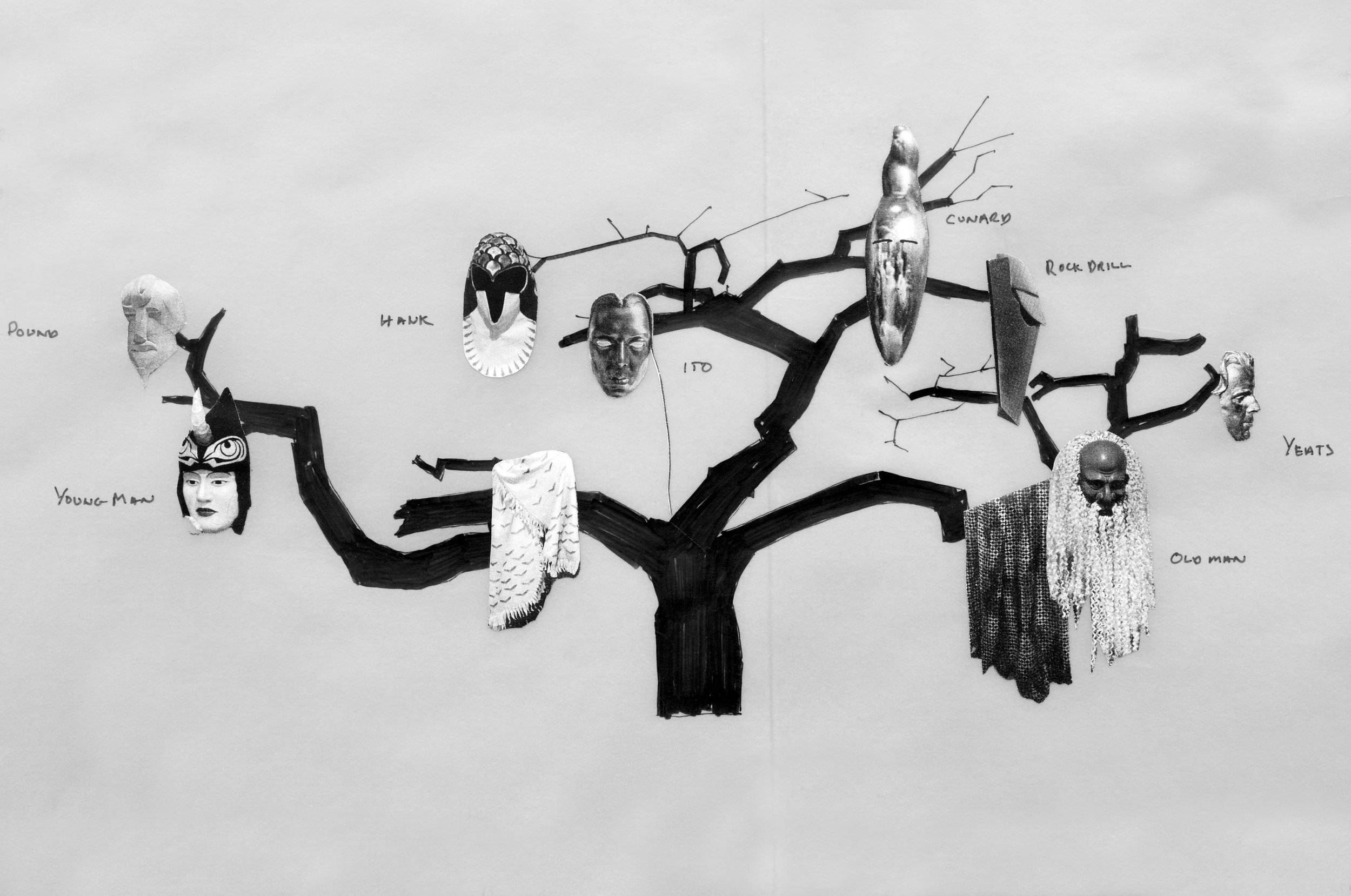
Simon Starling – 'At Twilight'
Simon Starling, 'At Twilight' (Production Drawing), (2016). Courtesy of the artist and The Modern Institute/Toby Webster Ltd, Glasgow.
‘At Twilight’ is an ambitious new project by Simon Starling, developed in collaboration with theatre director Graham Eatough, which revolves around a WB Yeats play, ‘At the Hawk’s Well’. Imagined as a play, the project first takes form as an exhibition, presenting the rich array of associations and remarkable stories.
‘At the Hawk’s Well’ was written and performed in April 1916 in what Starling describes as “an odd cross-cultural mash-up in an English garden, at a traumatic moment in European history”. The play was written by Yeats while working with poet Ezra Pound and was inspired by traditional Japanese ‘Noh’ theatre. It is a fusion of Irish folklore and what Yeats then saw as an exciting new possibility for theatre.
Simon Starling, 'At Twilight', installation view, The Common Guild, 2016. Photo: Ruth Clark.
‘At Twilight’ encapsulates this dynamic discourse between tradition and the avant-garde, in a kind of absurd, dramatised tussle between history, mythology and Modernism. The inventions and innovations of Modernism have long been a source of interest for Starling, as has the trans-national movement of the people and ideas that shaped cultural history.
Extending from the core of the play through the circumstances of its coming into being, ‘At Twilight’ weaves together some surprising and significant inter-connections of influential figures and works through a particular time and place. This first presentation of Starling’s project coincides with the centenary of the play’s first appearance, in the middle of the First World War.
The exhibition at The Common Guild includes a group of masks and costumes for a performance, at the heart of which sits an imagined dialogue between Ezra Pound and W.B. Yeats, to be enacted as a fencing duel (as well as introducing him to ‘Noh’ theatre, Pound taught Yeats to fence). Starling’s masks, made by Japanese master mask-maker, each represent one of a range of inter-connected characters, both real and fictional. The nine characters represented include Yeats and Pound, as well as the 3 characters that appear in the original Yeats play, including and building on a work realised by Starling for the Yokohama Triennale in 2014 ‘At the Hawk’s Well (Grayscale)’, described as ‘Three costumes designed by Edmund Dulac and Michio Ito for the 1916 London premier of W.B. Yeats’ Noh-inspired play for dancers At the Hawk’s Well, reproduced in a grayscale palette using available historical documentation’.
Alongside Yeats, Pound and the fictional characters are: Nancy Cunard (1896 - 1965), daughter of the host of the 1916 performance and an heir to the Cunard Line shipping business; Michio Ito (1892 - 1961), a Japanese dancer who played The Hawk in the 1916 performance and went on to work with Martha Graham later in his career; Jacob Epstein’s ‘Rock Drill’ (1913 - 14), probably the sculptor’s most radical work, a fore-boding man-machine that first came into being before the start of WWI but was radically amended in 1916; and Eeyore, the famously glum donkey from A.A. Milne’s ‘Winnie the Pooh’ stories (first appearing 1926), set in the same Ashdown Forest where Yeats and Pound spent the winters of 1913-16, represented here in the form of a pantomime donkey costume for two actors.
The backdrop of the war and its devastation is evoked in the exhibition by a group of ‘blast trees’. These highly figurative stands, on which Starling exhibits the masks, take the form of charred, black tree trunks, echoing the ‘blasted landscapes’ of WWI.
‘At Twilight’ includes a danced segment - presented as film in the exhibition - devised specially by renowned choreographer Javier de Frutos, working with Scottish Ballet and dancer Thomas Edwards using the ‘grayscale’ Hawk costume. The music for the Hawk’s dance was created by Chicago-based musician Joshua Abrams and the Natural Information Society.
Further Info
Additional Links
Laura Campbell, ‘Simon Starling - At Twilight Review’, The Sunday Times, July 2016
‘At Twilight – Review’, The Scotsman, July 2016
Chris Sharratt reviews 'At Twilight: A play for two actors, three musicians, one dancer, eight masks (and a donkey costume)', Frieze, September 2016
Documents
Supported by
Creative Scotland, Sylvia Waddilove Foundation, Outset Scotland and the Japan Society of the UK.
Project Details
‘At Twilight’ was commissioned by The Common Guild in collaboration with the Japan Society, New York.
Credits
Choreography by Javier De Frutos and Scottish Ballet
Music by Joshua Abrams and Natural Information Society
Costumes made by Kumi Sakurai and Atelier Hinode in Tokyo, Japan
Masks made by Yasuo Miichi, Osaka, Japan
The exhibition 'At Twilight' was also presented at the Japan Society Gallery, New York, in October 2016.
Read the Commentary by Isabella Shields –
Engagement –
Artist and theatre designer Kate Temple led a series of workshops focusing on ‘At Twilight’. The sessions explored the cross-disciplinary nature of the exhibition and ways of approaching art practice and collaboration.
Related

Akram Zaatari – 'The End of Time'
Akram Zaatari, 'End of Time' (2012) 16mm film still. Courtesy the artist and Thomas Dane Gallery, London
A new exhibition by the Lebanese artist Akram Zaatari featuring drawing, photography and film. Akram Zaatari has an expansive practice that reflects on the collection, archive and dissemination of images and the role they play in the formation of identities and histories. This sensibility is formed by living through 15 years of war in Lebanon and recording it as a teenager. He has spent much of the past decade collecting and studying the photographic history of the Middle East.
Akram Zaatari, 'The End of Time', installation view, The Common Guild, 2016. Photo: Ruth Clark.
For his first exhibition in Scotland, Zaatari presents a selection of works that reflect his interest in the documentary and its place as a tool in the shaping of history, both personal and collective.
Akram Zaatari is co-founder of the groundbreaking Arab Image Foundation, an artist-driven organisation with a collection of over 600,000 images, established in 1997 to preserve and study photographs from the region. He has made invaluable and uncompromising contributions to the wider discourse on preservation and archival practice and played a critical role in developing the formal, intellectual, and institutional infrastructure of Beirut's contemporary art scene. Zaatari participated in Documenta13 and represented Lebanon at the Venice Biennale 2013.
Further Info
Additional Links
‘Akram Zaatari: The End of Time’ Review by Katherine Pahar, this is tomorrow, 2016.
Documents
Project Details
The End of Time was presented as part of Glasgow International 2016.
Read the Commentary by Chad Elias –
Engagement
A series of workshops developed by ‘In the Shadow of the Hand' (Glasgow-based artists Virginia Hutchison and Sarah Forrest) accompanied the exhibition.
Related

Thomas Demand – 'Daily Show'
Thomas Demand, 'Daily #24', 2015, Framed Dye Transfer Print. © Thomas Demand, VG Bild-Kunst, Bonn/ DACS, London. Courtesy Matthew Marks Gallery/ Esther Schipper/ Sprueth Magers Gallery.
‘Daily Show’ is a solo exhibition by German artist Thomas Demand that includes new and recent works from his series ‘The Dailies’ in an installation devised for the particular nature of the spaces at The Common Guild.
‘The Dailies’ is a project that highlights the extent to which photography has in recent times become a commonplace, daily and social pursuit — a note-taking, diary-like practice for so many. The exhibition as a whole prompts questions about the compulsion to make images, as well as the contemporary relevance and use of photography in the context of the exponential growth in online image sharing, which now sees thousands of images uploaded to social media sites every second.
Thomas Demand, 'Daily Show', installation view, The Common Guild (2015) Photo: Ruth Clark.
Demand’s works have often been based on images in widespread circulation, whether in mainstream news media or online, in what critic Hal Foster has aptly described as “our shared media memory”. They have included many significant scenes, from the Oval Office to Saddam Hussein’s last hiding place. ‘The Dailies’, however, find their origins in less historic places: for each is based on a photograph taken on Demand’s mobile phone. Each one of ‘The Dailies’ depicts an incidental, undramatic scene encountered in the course of his day, visual incidents made of the details of daily life that are in some way nonetheless eye-catching.
Demand is one of the most distinctive artists of his generation and these works continue his established and remarkable practice of re-creating images in the form of three-dimensional replicas made entirely of paper and cardboard, which exist only to be photographed before being discarded. Begun in 2008, ‘The Dailies’ are also notable for the specifics of their production: they are printed using the now rarely used and labour intensive dye-transfer process, which offers an unparalleled, intense colour quality and range, most famously used in American colour photography of the early 70s.
Further Info
Additional Links
Thomas Demand “Daily Show” at The Common Guild, Glasgow, Mousse Magazine, November 2015
Moira Jeffrey, ‘Review: Thomas Demand: Daily Show’, The Scotsman, November 2015
Laura Campbell, ‘Thomas Demand: Daily Show’, The List, November 2015
Adam Benmakhlouf, ‘Thomas Demand Interview: It's Only a Paper Moon’, The Skinny, October 2015
Documents
Supported by
Project Details
Read the Commentary by Dr. Tamara Trodd –
Read the Commentary by Dr. Dominic Paterson –
Engagement
‘In the Shadow of the Hand', Glasgow based artists Virginia Hutchison and Sarah Forrest led a series of workshops relating to ‘Daily Show’.
Related

Anne Hardy – 'TWIN FIELDS'
Anne Hardy,'Two Joined Fields' (interior view), (2013). Courtesy of the artist and Maureen Paley, London. Photo: Anne Hardy & Angus Mill.
‘TWIN FIELDS’ is Anne Hardy’s first exhibition in Scotland and her most ambitious project to date.
The exhibition takes the whole gallery as a landscape, within which are two large ‘twinned’ sculptural structures. Hardy describes these as attempts to make “illusions that you can enter”. These identical volumes reveal their making but not, at first, their contents. Filled with an accumulation of materials and sounds, the sculptural structures create images through a language of component parts.
Anne Hardy 'TWIN FIELDS' (detail) (2015), audio (7 minutes 24 seconds), timber, light, breeze blocks, cast concrete, carpet, fan, chain, metal rebar, air, rubber. Installation view, The Common Guild. Courtesy of the artist and Maureen Paley, London. Photo: by Anne Hardy and Angus Mill.
Hardy is interested in what she describes as “the kind of space that is just there, next to you, and you don’t see it”.
In a practice that spans photography, sculptural installation and audio, Hardy constructs environments that hover between depiction and abstraction. Staging our encounters with these spaces through careful composition of physical and audio landscapes and precisely controlled perspectives, she immerses us in spaces that are at once functional and illusory.
This multi-part exhibition offers a total environment enveloping the viewer, suggesting images, associations and relationships, both actual and imagined.
Further Info
Declan Long, ‘Anne Hardy’, Artforum, November 2015.
Moira Jeffrey and Duncan Macmillan, ‘ The Best Art Exhibitions of 2015', The Scotsman, December 2015.
Documents
Supported by
The Elephant Trust
Maureen Paley, London
Project Details
‘TWIN FIELDS’ was presented at The Common Guild in 2015. A publication 'TWIN FIELDS / FIELD / Fieldworks' / designed by Hardy with Åbäke accompanies the exhibition.
Read the Commentary by Sally O’Reilly –
Read the Commentary by Dr. Dominic Paterson –
Engagement –
‘In the Shadow of the Hand', Glasgow based artists Virginia Hutchison and Sarah Forrest led a series of workshops relating to ‘Twin Fields’.
Related
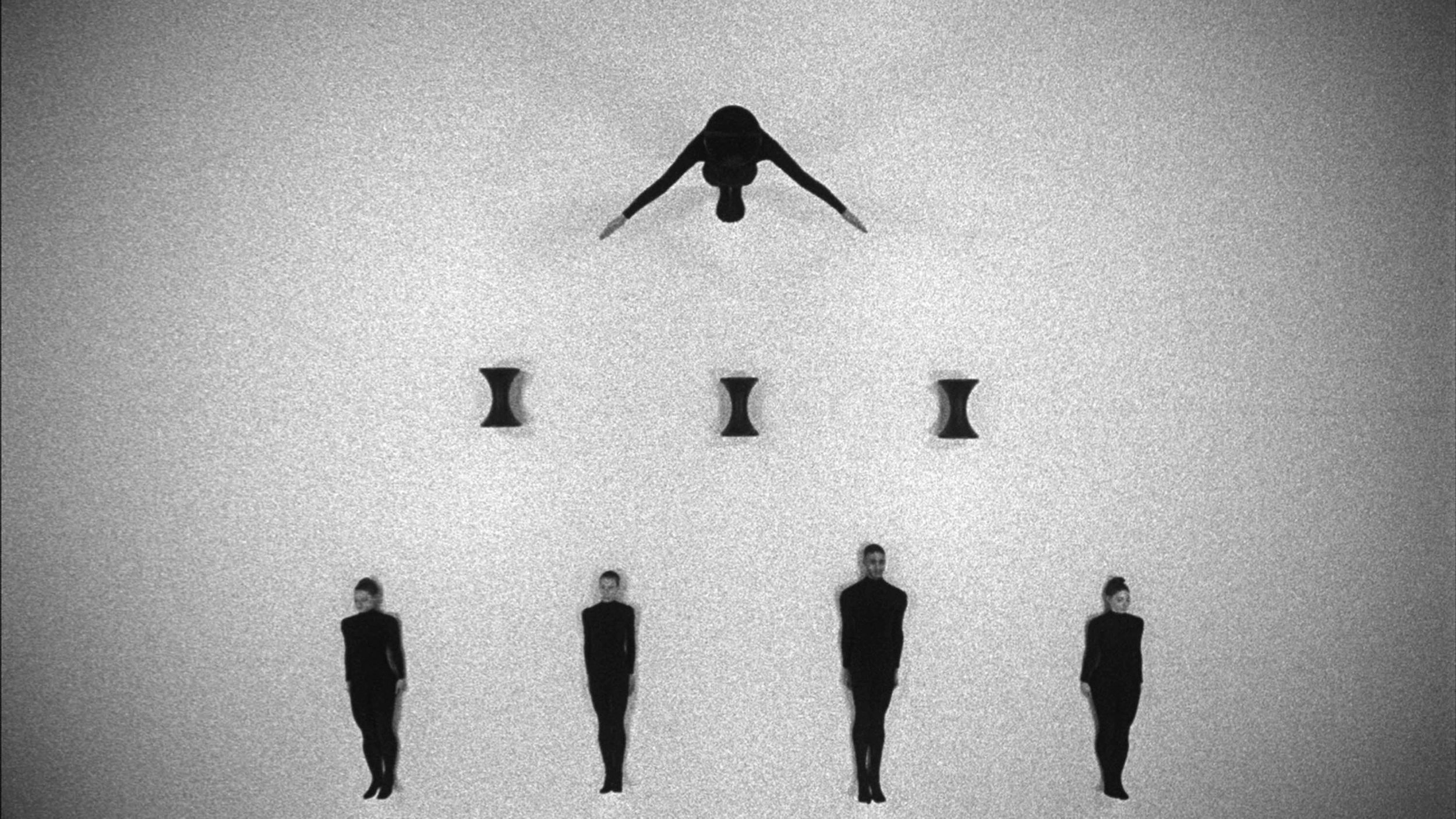
Duncan Campbell - 'Scotland + Venice 2013'
Duncan Campbell, ‘It for others’ (2013). 16mm film transferred to digital video, 54 minutes. Commissioned by The Common Guild for Scotland + Venice 2013.
Duncan Campbell produces films that look at representations of the people and events at the heart of very particular histories.
For his exhibition at The Common Guild, Campbell takes Chris Marker and Alain Resnais’ 1953 essay film ‘Les Statues meurent aussi’ (Statues also Die) as both source and artefact, to pursue a meditation on the life, death and the value of objects.
Chris Marker and Alain Resnais, ‘Les Statues meurent aussi’ (‘Statues also Die’), (1953) Film transferred to DVD, 30 minutes. Courtesy of Communauté Africaine de Culture. Photo: Ruth Clark.
“When people die, they enter history. When statues die, they enter art. This botany of death is what we call culture.”
So begins the film, included in its entirety, presented much like the objects that appear in the film itself: to be viewed in a time and place different from those of its making. Commissioned by Présence Africaine, it tracks objects from Sub-Saharan Africa to the Western metropolis, and the transition from religious fetish to commodity; from original to market.
Duncan Campbell, ‘It for others’ (2013). 16mm film transferred to digital video, 54 minutes. Commissioned by The Common Guild for Scotland + Venice 2013. Photo: Ruth Clark.
Campbell’s film, ‘It for others’, starts as a response to the 1953 film. It combines diverse filmed footage, along with some archive material. It picks up Marker and Resnais’ argument connecting the commercialisation of African Art with its death, and the determinations of value that are at the heart of this displacement. The film includes a performance made in collaboration with Michael Clark Company, which looks at the basic principle of commodities and their exchange.
The work was originally commissioned by The Common Guild for Scotland + Venice 2013, a Collateral Event of the 55th International Art Exhibition – la Biennale di Venezia.
Project Details
For GENERATION, The Common Guild presented consecutive solo exhibitions by Hayley Tompkins, Corin Sworn and Duncan Campbell. These were the three artists presented by The Common Guild for the exhibition Scotland + Venice 2013, a Collateral Event of the 55th International Art Exhibition – la Biennale di Venezia.
Duncan Campbell, ‘It for others’ (2013) was originally commissioned by The Common Guild for Scotland + Venice 2013, a Collateral Event of the 55th International Art Exhibition – la Biennale di Venezia.
Read the Commentary by Alex Kuusik –
A three-part publication with texts by Daniel Jewsbury, Aaron Peck, Joe Scotland and Gavin Smith.
Engagement
The Common Guild works with a range of groups on a programme of workshops that explore ideas related to each exhibition. This programme was coordinated by Margaret McCormick and workshops are led by ‘In the Shadow of the Hand’ (Sarah Forrest and Virginia Hutchison).
Related

Corin Sworn – 'Scotland + Venice 2013'
Corin Sworn, ‘How Desires Change’ (detail) (2013). Photo: Ruth Clark.
Corin Sworn creates installations that explore the ways objects can circulate stories and histories. Often combining images with spoken narrative, her work examines the cultural and personal significance attributed to things and how they in turn narrate us as social subjects.
Corin Sworn, ‘Incidents in Circulations’ (2014). C-type print, glass of water, shelf. Photo: Ruth Clark.
Sworn's film ‘The Foxes’ stems from a re-discovered collection of slides taken in Peru by the artist’s father in the 1970s, which she has used to explore aspects of imaging, memory, place and oral history.
Project Details
For GENERATION, The Common Guild presented consecutive solo exhibitions by Hayley Tompkins, Corin Sworn and Duncan Campbell. These were the three artists presented by The Common Guild for the exhibition Scotland + Venice 2013, a Collateral Event of the 55th International Art Exhibition – la Biennale di Venezia.
Read the Commentary by Melanie Letore –
A three-part publication with texts by Daniel Jewsbury, Aaron Peck, Joe Scotland and Gavin Smith.
Engagement
The Common Guild works with a range of groups on a programme of workshops that explore ideas related to each exhibition. This programme was coordinated by Margaret McCormick and workshops are led by ‘In the Shadow of the Hand’ (Sarah Forrest and Virginia Hutchison).
Related

Hayley Tompkins – 'Scotland + Venice 2013'
Hayley Tompkins, ‘Digital Light Pool (Earthed)’ (2013/14) (detail). Acrylic on plastic trays, stock photographs, wooden boxes, glass, plastic bottle, watercolour, artificial food. Photo: Ruth Clark.
Hayley Tompkins makes painted objects that transform familiar, commonplace things – such as knives, hammers, mobile phones or furniture. Her work articulates the relationship between the form, feel and function of an object.
Hayley Tompkins, ‘Digital Light Pools’ (2013/4). Acrylic paint on plastic. Photo: Ruth Clark.
Tompkins’ ‘Digital Light Pools’ are comprised of ready-made plastic trays, water bottles and boxed photographic prints which are full of painterly plays on colour, tone, texture and composition.
Project Details
For GENERATION, The Common Guild presented consecutive solo exhibitions by Hayley Tompkins, Corin Sworn and Duncan Campbell. These were the three artists presented by The Common Guild for the exhibition Scotland + Venice 2013, a Collateral Event of the 55th International Art Exhibition – la Biennale di Venezia.
Read the Commentary by Adam Benmakhlouf –
A three-part publication with texts by Daniel Jewsbury, Aaron Peck, Joe Scotland and Gavin Smith.
Engagement
The Common Guild works with a range of groups on a programme of workshops that explore ideas related to each exhibition. This programme was coordinated by Margaret McCormick and workshops are led by ‘In the Shadow of the Hand’ (Sarah Forrest and Virginia Hutchison).
Related
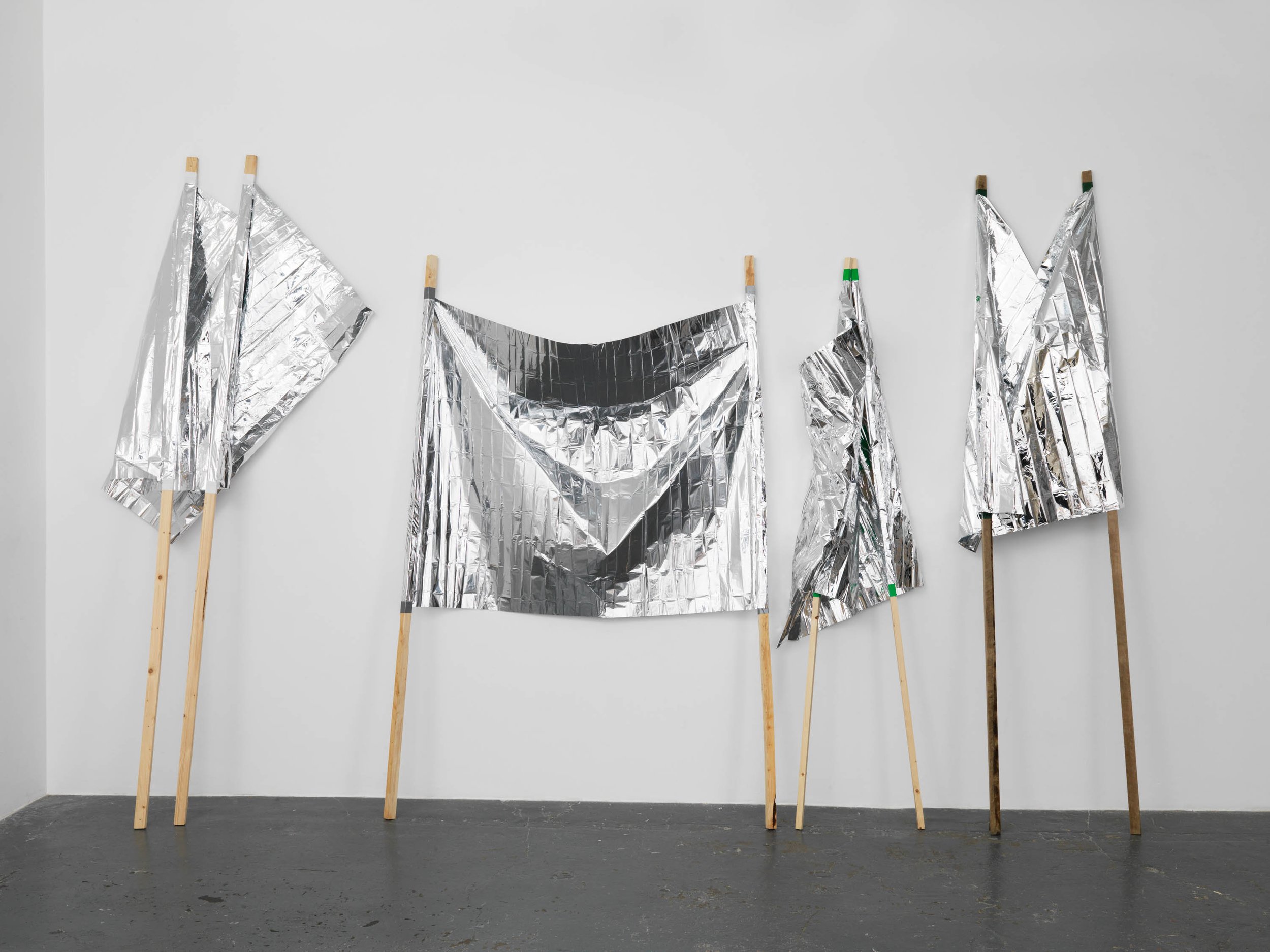
Gabriel Kuri – 'All probability resolves into form'
Gabriel Kuri, 'Quick Standards', 2009, Emergency aluminium blankets taped on wooden sticks
Courtesy the Artist and Sadie Coles HQ, London
An exhibition of new work by the internationally acclaimed Mexican artist Gabriel Kuri. Kuri is known for works that use ordinary objects and materials to address the very nature of sculpture and explore the relationship between use and value. 'All probability resolves into form' was the first presentation of Kuri’s work in Scotland.
Gabriel Kuri, 'All probability resolves into form', installation view, The Common Guild, 2014. Photo: Ruth Clark.
Kuri regularly combines commonplace objects with his own sculptural components to create installations that, as Kate Bush writes, “refuse any hierarchy between the stuff of every day and the stuff of art”. His exhibition at The Common Guild involved the juxtaposition of a series of sculptural forms with found and donated materials. Items of basic necessity – such as blankets, sleeping bags and toiletries – were arranged within a group of formal elements made by the artist, highlighting the use, value and ownership of objects as they waited to be put to use.
At the end of the exhibition, the useable materials were donated to the GLAD Action Network and the Unity Centre, Glasgow.
Photography by Ruth Clark
Project Details
Read the commentary by Kate Bush –
Engagement –
Artists Anne Marie Copestake and Katie Schwab led a series of workshops relating to ‘All probability resolves into form’, coordinated by Florrie James.
Related

Roman Ondák – 'Some Thing'
Roman Ondák, 'Shadow', 1981/2013 (Detail), Oil painting on MDF, glass, display case
Courtesy of the artist
Roman Ondák is known for creating environments and interventions that challenge our assumptions about the world around us. His witty and intelligent works provide a philosophical or political twist on everyday experiences, often creating a loop, either actual or metaphorical, around an object, space or idea.
Roman Ondak, 'Some Thing', installation view, The Common Guild, 2013. Photo: Ruth Clark
In his work for The Common Guild, Ondák offered a personal reflection on the phenomenon of the picture through a selection of still life paintings made by the artist as a teenager. The original objects that served as the subject of these pictures over thirty years ago were paired with the paintings, creating an echo of the painted image and highlighting the relationship between reality, fiction and image.
Ondák’s exhibition in Glasgow was the first presentation of his work in Scotland and his third solo presentation in the UK, following exhibitions at Tate Modern, London, (2006) and Modern Art Oxford (2011).
Exhibition Details
‘Some Thing’ was accompanied by the presentation of ‘This Way, Please’, (1999) at Glasgow’s Gallery of Modern Art (GoMA). The performance work was acquired by GoMA in 2013 through the Art Fund International scheme, as part of a partnership between GoMA and The Common Guild.
Read the Commentary by Latitudes (Max Andrews and Mariana Cánepa Luna) –
Engagement –
The Common Guild works with a range of groups on a programme of workshops that explore ideas related to each exhibition. For Roman Ondák’s exhibition, ‘Some Thing' , workshops were led by Anne Marie Copestake, Alex Impey and Katie Schwab and the programme was coordinated by Catrin Kemp.
Related

Carol Bove – 'The Foamy Saliva of a Horse'
Carol Bove, 'The Foamy Saliva of a Horse' (detail), 2011, Found metal, bronze, driftwood, sea shells, peacock feathers, steel, gold chain, silver chain, foam, styrofoam
© Carol Bove. Courtesy of Ovitz Family Collection, Los Angeles. Photo by Lorenzo Vitturi
Driftwood, peacock feathers, seashells, books and concrete all appear in the work of New York-based artist Carol Bove. In exquisite installations that combine an array of found and fabricated elements, Bove demonstrates an intense understanding of display through the collection of plinths, frames, supports and stands that become as much part of the work as the items they hold.
Presenting objects and artefacts in arrangements that heighten the symbolic meaning and relationship between them, Bove’s meticulous assemblages bring to the fore the cultural, spiritual, mystical and even psychological associations that adhere to objects through time.
Carol Bove, 'The Foamy Salive of a Horse', installation view, The Common Guild, 2013. Photo: Ruth Clark
The exhibition at The Common Guild comprises a re-arrangement of her highly acclaimed installation ‘The Foamy Saliva of a Horse’, which was presented at the 54th Venice Biennale. Featuring a collection of found and hand-made objects, such as a piece of driftwood suspended in a polished bronze frame, the installation brought together seemingly random objects that, while natural in origin, call to mind the artifice of cultural value and meaning.
This is the first public exhibition of Bove’s work in the UK. It follows her participation in several important international exhibitions including the 54th Venice Biennale and dOCUMENTA 13, in which she realised her first outdoor work.
Related

Ugo Rondinone – 'primitive'
Ugo Rondinone, 'the galaxy' (2011), Cast bronze, patinated. Courtesy of the artist and Galerie Eva Presenhuber, Zurich.
‘primitive’ is the first exhibition in Scotland of the work of the remarkable Swiss artist Ugo Rondinone.
Featuring a group of recent works in a new and precisely conceived installation, the exhibition included a large group of bronze bird sculptures, filling the building with an almost threatening persistence. Imposing in number if not in scale, these modest little birds, so clearly and simply hand-made, were named after vast natural phenomena: from ‘the sun’ and ‘the moon’ to ‘the universe’ and ‘the atmosphere’ – referencing the natural world beyond the gallery.
Ugo Rondinone, 'Primitive', installation view, The Common Guild, 2012. Photo: Ruth Clark.
Rondinone first came to international attention in the early 1990s with installations that involved a striking diversity of forms. His exhibitions might include India ink landscapes in the Romantic tradition, or mesmerising target paintings that recall the trance-inducing images of 1960s psychedelia. He combines works with an up-beat, pop sensibility with others that reflect a mood of longing and disconnection, from photographs of a man and a woman who never meet to melancholy images of clowns slumped on floors. His works often have a strong sense of time being suspended, and reflect on the conflict between reality and a world of mirrors, dreams and artifice.
Related

Zbynek Baladrán, Simon Martin, Nick Relph & Falke Pisano – 'HOW TO LOOK AT EVERYTHING'
Falke Pisano, 'Chillida (Forms & Feelings)'(2006) (film still). Courtesy the artist, Hollybush Gardens and Ellen de Bruijne Projectson.
‘How to Look at Everything’ brings together a selection of outstanding film and video works by four international artists; Zbynek Baladrán, Simon Martin, Nick Relph and Falke Pisano. The exhibition presents a group of works that combine narrative structures with the documentary format, exploring the very nature of looking and understanding.
Through the cultural history of the twentieth century, each work considered the stories that can be told through a collection of images and objects, ranging from the documentary narrative to the subjective encounter, looking at the past and the present through a non-linear archaeological excavation.
Simon Martin 'Carlton' (2006) (film still), 16mm colour film transferred to DVD, 8 minutes. Courtesy of the artist.
Czech artist Zbynek Baladrán acts as an archaeologist of knowledge, unearthing images, fragments and narratives from his country’s past. His video 'Working Process', 2004, is made from a collection of archive film footage from 1957-88 edited into a work that tells a partial history of Czechoslovakia alongside the story of the film’s own making. The apparently random selection of footage and partially obscured subtitles provide fragments of a narrative, whilst suggesting a purposeful censorship or arbitrary filtration of history and time.
London-based British artist Simon Martin’s work reflects upon material culture. He is interested in how we understand ourselves through social structures, mythologies and collective memory evidenced in art objects, mass media and the built environment. 'Carlton', 2006, is a short film that offers a philosophical mediation upon the ‘Carlton’ cabinet, designed by Ettore Sottsass in 1981. The camera circles the object with reverence and curiosity while the hypnotic voice-over provides something between a historical narrative and a series of subjective reflections.
New York-based British artist Nick Relph’s work often deals with the representational problems of different media. His video 'Thre Stryppis Quhite Upon ane Blak Field', 2010, is a composite of blue, green and red projections, with superimposed documentaries on Ellsworth Kelly, Comme des Garçons’ founder Rei Kawakubo and the history of tartan. Seeing all three films simultaneously, the viewer seeks to find the relationship or shared meaning between them.
Berlin-based Dutch artist Falke Pisano’s work examines the relationship between our physical and theoretical understanding of objects and ideas. Through texts and spoken word she creates a densely woven web of subjective descriptions and reflections. In 'Chillida (Forms & Feelings)', 2006, Pisano examines her relationship to a series of photographs taken by David Finn of sculptures by the Basque sculptor Eduardo Chillida. As she turns the pages of the photo book, she considers the relationship between the specific objects, their depiction, the experience of the photographer and her own emotional responses to the images.
Related

Thea Djordjadze – 'Lost Promise in a Room'
Thea Djordjadze, 'Untitled' (2010). Paint, concrete, plaster, sponge © Thea Djordjadze. Courtesy Sprüth Magers, Berlin / London.
Djordjadze’s sculptures range from intimate hand-held objects to large architectural forms. Often referencing the body through the suggestion of clothing or furniture, her sculptures allude to familiar forms through their scale, shape and surface. Despite this familiarity, her work often appears to come from another time or place, or to suggest a previous existence or forthcoming use.
Thea Djordjadze – 'Lost Promise in a Room', installation view, The Common Guild (2011).
Working with a range of commonplace materials such as plaster, cardboard, wood and fabric, Djordjadze creates fragile, hand-made objects that appear partially constructed and partially destroyed. Djordjadze presents these hand-made objects alongside found items such as photographs, carpets and clothing suggesting ritualistic use or religious shrines. By utilising display mechanisms like shelves, plinths, tables and cabinets within the work she aligns the objects with something between the ethnographic museum and the fetishised collection.
Related

Claire Barclay, Kate Davis, Olafur Eliasson, Hans-Peter Feldmann, Douglas Gordon, Gabriel Orozco, Yvonne Rainer, Richard Serra and David Shrigley – 'You seem the same as always, -'
Yvonne Rainer, 'Hand Movie' (1966). 8 mm film transferred to DVD (still). Courtesy of the artist and Video Data Bank.
“You seem the same as always, -” brought together a range of works by international and Glasgow-based artists, which share a very particular focus: that of the artist’s own hand. The exhibition included film, video, photography, prints, drawings and objects, all of which share a refreshing sense of immediacy and directness and vary from the witty to the uncanny.
'You seem the same as always, -' installation view The Common Guild (2011). Photo: Kendall Koppe.
“You seem the same as always, -” was rich in echoes of art history, not least in the title, which originates in correspondence between Sol Le Witt and Eva Hesse and is cited in Kate Davis’ work. The exhibition reflected the extent to which, even when faced with an ever-increasing range of media and new technologies, there remains a recurrent fascination with and recourse to the most constant and immediate tool: his or her own hand. The gathering of works reflected our enduring interest in the artist as author and the biography behind the work, most explicitly in the work by Feldmann that is comprised of handprints of some of the 20th century’s most famous artists.
Related

Ulla von Brandenburg – 'Neue Alte Welt'
Ulla von Brandenburg, 'Chorspiel' (2010) (film still). Courtesy of the artist and art: concept, Paris.
Ulla von Brandenburg’s work alludes to the shared history of story telling, from Greek tragedy to folk legend, and the archetypes used in them. Ranging from recurring literary characters to universal concepts such as family, love, time, life and death, von Brandenburg uses familiar symbols to bring together the real and the unreal. As she explains ‘I am very interested in artificiality, but absurdity interests me too.’
Von Brandenburg uses a wide range of media including drawing, painting, installation, performance and film and draws upon many aspects of European cultural heritage, from ancient folklore to Romanticism and the idea of the ‘Gesamtkunstwerk’ (or total work of art). Artistic synthesis runs through her work, referencing a range of movements from the Renaissance to the Bauhaus.
The exhibition included the remarkable ‘Chorspiel’ (2010) a three-part, opera-like film featuring five characters from three generations. Referencing Ingmar Bergman, who often wrote his own screenplays, the film includes music written by the artist. Brandenburg’s films not only explore how narrative unfolds through performance, but the role of the narrator or conscience in the telling or enactment of a story. Accompanied by a group of evocative objects, including fabric panels marked by extended exposure to the sun, von Brandenburg’s work appears at once historic and futuristic.
Related

Tacita Dean
Tacita Dean, ‘Prisoner Pair’ (film still) (2008). Courtesy of the artist and Frith Street Gallery, London.
Tacita Dean’s exhibition at The Common Guild presents a selection of works that can be seen as still lives. By using imagery of various natural forms, including trees and neolithic stones or ‘dolmens’ Dean focuses on the gradual processes of growth, transformation and demise.
Tacita Dean, installation view, The Common Guild (2010). Photo: Kendall Koppe.
Though primarily known for her 16mm film installations, Dean’s work ranges considerably in both subject and medium, withdrawing a significant and enduring component. Central to all of the works in the exhibition, and her practice in general, is an acute awareness of time and the weight of history that accompanies it. Using the still life as a means of observing temporality, Dean’s work often acts as a memento mori, reminding us of our own mortality, and the endurance of nature.
Dean often removes objects from their conventional context by blacking or whitening out extraneous information. Her films encourage extended examination through close-up footage or the illusion of real-time documentation. She invites us to linger in the scenes with which she presents us, often drawing us to the archaic or the near obsolete. Using editing to control the viewer’s perception of the subject, Dean occupies an area between sensual experience and forensic dissection, demonstrating her ongoing interest in the relationship between reality and fiction, and the subjective nature of history.
Tacita Dean, installation view, The Common Guild (2010). Photo: Kendall Koppe.
This exhibition of displaced objects explored space and time in a visual language that is almost sculptural. As curator Massimiliano Gioni has written; “I’ve always thought of Tacita Dean as being the Richard Serra of vision: her images are as dense and heavy as gigantic sculptures.”
Related

Robert Barry – 'Words and Music'
Robert Barry, 'Words and Music'. Courtesy of the artist.
This exhibition comprises a new installation conceived specially for The Common Guild by one of the most influential American artists associated with the emergence of Conceptual Art in the late 1960 and early 1970s. Robert Barry was a pioneer of conceptual art, abandoning painting in 1967 to produce site-specific installations, many of which were almost invisible to the viewer. These installations and actions relied on language to indicate their existence, shifting the presentation and reception of the work from image to text.
Robert Barry, 'Words and Music' installation view, The Common Guild, 2010. Photo: Ruth Clark
Since the early 1970s 'language', or perhaps more correctly, 'words', have been central to Barry’s practice, which has since included typewriter drawings, wall pieces, slide projections and films as well as often cited ‘actions’ such as gas releases and telepathic pieces. Barry is now perhaps best known for his large-scale text installations known as ‘word spaces’, which cast a selection of words in a given space from an ongoing and ever-changing collection. Applied directly to the walls, windows and floors of the gallery, the words surround the viewer, reasserting the importance of the viewer at the heart of the art experience. As Barry explains, “Instead of trying to use text to convey an idea or meaning, I became interested in the individual power of the word to convey emotions or feelings.”
Although utterly conceptual in origin, Robert Barry’s work is essentially experiential. This rare opportunity to see his work brought the physical space between the words, the gallery and the viewer into focus.
Exhibition Details
Artist Talk
On 3 September 2010, Robert Barry talked about his exhibition at The Common Guild ‘Words and Music’ at the Mackintosh Lecture Theatre, The Glasgow School of Art.
Exhibition Talk
On 11 September 2010, artist Neil Clements presented an exhibition talk focussing on his interest in the shift in Barry’s work from painting to text in the mid to late 1960s and its ongoing significance.
Read the Commentary by Neil Clements –
Read the Commentary by Ross Birrell –
Related

Gerard Byrne – 'Images or shadows of divine things'
Gerard Byrne, 'Images or shadows of divine things', (2005 – ongoing) (detail). Courtesy of the artist.
‘Images or shadows of divine things’ is an on-going series of photographs accumulated since 2005 by Byrne. The modestly presented monochrome images of the United States share a distinct ambiguity; although made over the course of the five years leading up to the exhibition, the images appear to depict a much earlier time. Whilst evoking vernacular photographic idioms of American mid-century photography, cumulatively the series pointed towards the complicated relationship between time, appearance, and the photographic document. Anchoring the project with a reference to a text by the 18th century American theologian Jonathan Edwards, the work shadowed an American intellectual tradition stretching back to the Puritans which perceives the world as inextricably prefigured in the bible.
Gerard Byrne is an artist whose work regularly reconstructs found scenarios from the past, often drawing from television and magazine culture. Using video and photography, he explores how the future has been envisaged in the past. This exhibition accompanied, and was a counterpoint to, Byrne’s major new video work commissioned by and for Glasgow International Festival of Visual Art. Entitled ‘A thing is a hole in a thing it is not’, the project comprises four films that look at Minimalist sculpture as a pre-figuration of time-based artistic forms.
Gerard Byrne, 'Images or shadows of divine things', (2005 – ongoing) (detail). Courtesy of the artist.
Exhibition Details
Artist Talk
Gerard Byrne talked about his exhibition at The Common Guild ‘Images or shadows of divine things’ on 17 June 2010.
Exhibition Talk
Katrina Brown, Director of The Common Guild, talked about Gerard Byrne’s work including his commission for Glasgow International Festival of Visual Art ‘A Thing is a hole in a Thing it is not’ on 24 April 2010.
Read the Commentary by Jonathan Griffin –
Related

Martin Creed – 'Things'
Martin Creed, 'Work No. 800' (2007) (detail). Courtesy of the artist and Hauser & Wirth, London. Photo: Ruth Clark.
Martin Creed likes opposites. On and off, open and closed, big and small, in and out, light and dark — versions of something and nothing. His work often sets up extremes and by doing so he opens up the space in between. Utilising commonplace materials from copy paper and cardboard boxes to dining room tables and office chairs, he presents the spectrum of possibilities we are offered every day and highlights the absurdity that can be found in the ordinary. Creed’s simple gestures often achieve dramatic results, and although not always immediately obvious, his approach to objects and materials can change the viewer’s idea of them forever.
‘Things’ makes use of the domestic setting of 21 Woodlands Terrace, continuing Creed’s interest in playing with our perceptions of spaces and places whilst disrupting our expectations of the gallery environment. The exhibition included several collections of similar objects, carefully ordered according to size, highlighting Creed’s use of control while exposing the more off-kilter side of his practice. Creed is known for producing a range of works that interfere with the act of seeing itself, such as lights that go on and off and doors that close as soon as they open. At The Common Guild, Creed presents an equally testing work, drawing attention but denying access to one of the building’s greatest assets: its view.
Related

Mircea Cantor – 'Which light kills you’
Mircea Cantor, 'Which light kills you', 2009. Courtesy the artist and Dvir Gallery, Tel Aviv.
Mircea Cantor is the epitome of a 21st century artist, constantly crossing borders but always returning to his roots. Having grown up in Eastern Europe during the Communist era, Cantor frequently draws on his own memory to explore the realities of power and the disintegration of cultural boundaries. Cantor often positions himself at the crossroads between worlds, acting as an observer of societies and cultures and encouraging comparisons between differing attitudes and beliefs.
Mircea Cantor, ‘Diamond Corn’ (2005) (detail). Courtesy the artist and Dvir Gallery, Tel Aviv.Photo: Ruth Clark.
Cantor creates works that act as tools with which we can deconstruct the meaning of our everyday lives. Through subtle gestures and arrangements, he enhances our habitual perceptions and expectations, highlighting the peculiarities without lecturing in morality or artificial solutions. Cantor stages a reality that is in constant flux, deliberately resistant to unambiguous categorisation and decisively determined by uncertainty. His work takes up social issues while combining political content with a distinctly poetic formal vocabulary.
Exhibition Details
‘Which light kills you’ was curated by Ami Barak.
Exhibition Talk
On 23rd January, Dr. Dominic Paterson, writer and art historian based at the University of Glasgow, offered his thoughts on the work of Mircea Cantor and his exhibition ‘Which light kills you’.
Read the Commentary by Dr. Dominic Paterson –
Related

Roni Horn – 'the tiniest piece of mirror is always the whole mirror'
Roni Horn’s work sets up relationships: between images, between words and between object and viewer. 'the tiniest piece of mirror is always the whole mirror' followed ‘Roni Horn aka Roni Horn’, her major show at Tate Modern, and brings together a concise group of works that share Horn’s characteristic evocation of the fine line between sameness and difference.
Roni Horn, 'the tiniest piece of mirror is always the whole mirror' installation view, The Common Guild, 2009. Photo: Ruth Clark.
Specifically selected with the artist in response to the particular characteristics of The Common Guild’s grand but domestic gallery spaces, the exhibition also demonstrates the range of forms in which Horn works – photographic installations, drawing, sculpture and books. Its title came from the work of legendary Brazilian writer Clarice Lispector (1920 – 1977), via a work included in the exhibition, and is suggestive of the many instances of reflection to be found in this coming together of art and place.
Roni Horn, 'the tiniest piece of mirror is always the whole mirror' installation view, The Common Guild, 2009. Photo: Ruth Clark.
The exhibition includes works from the ‘Portrait of an Image’ group, featuring numerous images of the actress Isabelle Huppert, whom Horn had asked to impersonate herself in a number of film roles, resulting in a series of portraits each subtly yet undoubtedly different from the other. While the distinctive purity that recurs in Horn’s work is exemplified by the remarkable ‘Gold Field’ (1982-2003), a thin sheet of gold, the result of Horn’s desire to ‘bring gold back to its simple physical being’. As with all of her work, the ‘meaning’ of each piece rests in the viewer’s experience, in the relationship created.
Exhibition Details
Exhibition Talk –
In an exhibition talk on 27th June, Dr. Dominic Paterson, writer and art historian based at the University of Glasgow, offered his thoughts on the work of Roni Horn and her exhibition ‘the tiniest piece of mirror is always the whole mirror’.
Read the Commentary by Dr. Dominic Paterson –
Related

Spencer Finch
Spencer Finch, '102 Colours from My Dreams' (detail), 2002. Courtesy the artist and Lisson Gallery, London.
An exhibition by American artist Spencer Finch, presented in association with his major solo exhibition, ‘Gravity Always Wins’, which runs concurrently at Dundee Contemporary Arts.
Spencer Finch, installation view, The Common Guild (2008). Photo: Ruth Clarke.
Finch works in a broad range of forms, from large-scale installations to more intimate drawings and photographs. Whatever the scale, his work has consistently combined a rigorous, conceptual approach with a profoundly humane warmth and wit.
This exhibition focuses on Finch’s works on paper - predominantly watercolours - and demonstrates his enduring interest in the relationships between colour, light and memory. His impression of specific rooms, places, dreams and butterflies are among the flee.
Spencer Finch, installation view, The Common Guild (2008). Photo: Ruth Clarke.
Related

Adel Abdessemed – 'TRUST ME'
Adel Abdessemed, ‘Also sprach Allah’ (2008), film still. Courtesy of the artist and David Zwirner Gallery. Photo: Ruth Clarke.
'TRUST ME' is Adel Abdessemed's first solo show in the UK. Abdessemed has attracted increasing attention and critical acclaim in recent years for his both punchy and poetic work. Though diverse in form, his works are characterised by a simple, straightforward and transparent use of his chosen media – including video, photography, sculpture and drawing – and an often playful, always energetic approach to existent forms, symbols or conventions.
The exhibition focuses on a number of recent video works, all documenting actions or performances, as well as a small but important text piece, made at the time the artist was granted French citizenship.
Adel Abdessemed, ‘Trust Me’ (2007), film still. Courtesy of the artist and David Zwirner Gallery. Photo: Ruth Clarke.
Adel Abdessemed, ‘Helikoptère’ (2008). Courtesy of the artist and David Zwirner Gallery. Photo: Ruth Clarke.






